
Jakarta MRT
The Jakarta Mass Rapid Transit or Jakarta MRT is a rapid transit system in Jakarta, the capital city of Indonesia.
Jakarta MRT, a rapid transit system in Jakarta, began operation.

The Jakarta Mass Rapid Transit or Jakarta MRT is a rapid transit system in Jakarta, the capital city of Indonesia.

Rapid transit or mass rapid transit (MRT), also known as heavy rail or metro, is a type of high-capacity public transport generally found in urban areas. A rapid transit system that primarily or traditionally runs below the surface may be called a subway, tube, or underground. Unlike buses or trams, rapid transit systems are railways that operate on an exclusive right-of-way, which cannot be accessed by pedestrians or other vehicles, and which is often grade-separated in tunnels or on elevated railways.

Jakarta, formerly Dutch: Batavia, officially the Special Capital Region of Jakarta is the capital and largest city of Indonesia. Lying on the northwest coast of Java, the world's most populous island, Jakarta is the largest city in Southeast Asia and serves as the diplomatic capital of ASEAN.
Syrian civil war: The Turkish Armed Forces (TAF) and Syrian National Army (SNA) take full control of Afrin District, marking the end of the Afrin offensive.

The Syrian civil war is an ongoing multi-sided civil war in Syria fought between the Syrian Arab Republic led by Syrian president Bashar al-Assad and various domestic and foreign forces that oppose both the Syrian government and each other, in varying combinations.

The Turkish Armed Forces are the military forces of the Republic of Turkey. Turkish Armed Forces consist of the General Staff, the Land Forces, the Naval Forces and the Air Forces. The current Chief of the General staff is General Yaşar Güler. The Chief of the General Staff is the Commander of the Armed Forces. In wartime, the Chief of the General Staff acts as the Commander-in-Chief on behalf of the President, who represents the Supreme Military Command of the TAF on behalf of the Grand National Assembly of Turkey. Coordinating the military relations of the TAF with other NATO member states and friendly states is the responsibility of the General Staff.
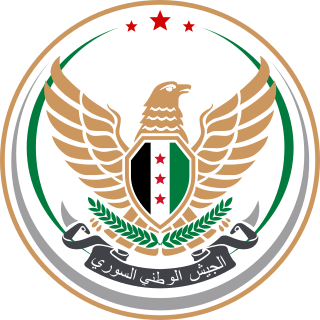
The Syrian National Army (SNA), previously the Free Syrian Army (FSA) and also known as the Turkish-backed Free Syrian Army (TFSA), is a coalition of armed Syrian opposition groups in the Syrian Civil War. Comprising various rebel factions that emerged at the onset of the war in July 2011, it was officially established in 2017 under the auspices of Turkey, which provides funding, training, and military support.

Afrin District is a district of Aleppo Governorate in northern Syria. The administrative centre is the city of Afrin. At the 2004 census, the district had a population of 172,095. Syria's Afrin District fell under the control of the People's Protection Units (YPG) around 2012 and an "Afrin Canton" was declared in 2014, followed by an "Afrin Region" in 2017. During Operation Olive Branch, the entire district was captured by Turkey and its allies.

The Afrin offensive was a military operation launched by the Turkish Armed Forces and the Turkish-backed Free Syrian Army against the Syrian Democratic Forces in Afrin District in northwestern Syria as the initial phase of Operation Olive Branch. At the end of military operations, the UN had registered 150,000 Kurdish refugees in camps in the area of Tel Rifaat; the Syrian Observatory for Human Rights (SOHR) estimated that 300,000 people had been expelled in total. By May, SOHR estimated that 40,000 settlers had been moved into Afrin, some of them Arabs displaced from eastern Ghouta, but mostly families of the mixed Arab and Syrian Turkmen militias.
Students across the United States stage the March for Our Lives demanding gun control in response to the Stoneman Douglas High School shooting.

The United States of America, commonly known as the United States or informally America, is a country in North America. It consists of 50 states, a federal district, five major unincorporated territories, nine Minor Outlying Islands, and 326 Indian reservations. It is the third-largest country by both land and total area. The United States shares land borders with Canada to its north and with Mexico to its south. It has maritime borders with the Bahamas, Cuba, Russia, and other nations. With a population of over 331 million, it is the third most populous country in the world. The national capital is Washington, D.C., and the most populous city and financial center is New York City.

March for Our Lives (MFOL) was a student-led demonstration in support of gun control legislation. It took place in Washington, D.C., on March 24, 2018, with over 880 sibling events throughout the United States and around the world, and was planned by Never Again MSD in collaboration with the nonprofit organization Everytown for Gun Safety. The event followed the Marjory Stoneman Douglas High School shooting a month earlier, which was described by several media outlets as a possible tipping point for gun control legislation.

On February 14, 2018, 19-year-old Nikolas Cruz opened fire on students and staff at Marjory Stoneman Douglas High School in the Miami suburban town of Parkland, Florida, murdering 17 people and injuring 17 others. Cruz, a former student at the school, fled the scene on foot by blending in with other students, and was arrested without incident approximately one hour later in nearby Coral Springs. Police and prosecutors investigated "a pattern of disciplinary issues and unnerving behavior".
Germanwings Flight 9525 crashes in the French Alps in an apparent pilot mass murder-suicide, killing all 150 people on board.

Germanwings Flight 9525 was a scheduled international passenger flight from Barcelona–El Prat Airport in Spain to Düsseldorf Airport in Germany. The flight was operated by Germanwings, a low-cost carrier owned by the German airline Lufthansa. On 24 March 2015, the aircraft, an Airbus A320-211, crashed 100 km north-west of Nice in the French Alps. All 144 passengers and all six crew members were killed. It was the only fatal crash involving a Germanwings aircraft during the company's 18 years in operation.

The French Alps are the portions of the Alps mountain range that stand within France, located in the Auvergne-Rhône-Alpes and Provence-Alpes-Côte d'Azur regions. While some of the ranges of the French Alps are entirely in France, others, such as the Mont Blanc massif, are shared with Switzerland and Italy.

Suicide by pilot is an aviation event in which a pilot deliberately crashes or attempts to crash an aircraft in a suicide attempt, sometimes to kill passengers on board or people on the ground. This is sometimes described as a murder–suicide. It is suspected as being a possible cause of the crashes of several commercial flights and is confirmed as the cause in others. Generally, it is difficult for crash investigators to determine the motives of the pilots, since they sometimes act deliberately to turn off recording devices or otherwise hinder future investigations. As a result, pilot suicide can be difficult to prove with certainty.
Led by Jigme Thinley, the Bhutan Peace and Prosperity Party won 45 of 47 National Assembly seats in the country's first general election.
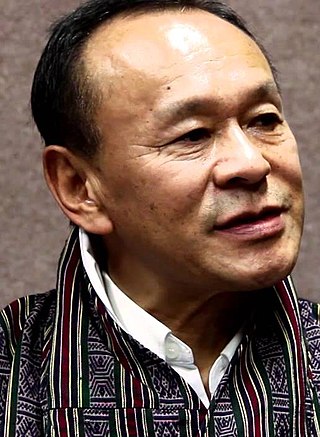
Lyonpo Jigme Yoser Thinley is a Bhutanese politician who was Prime Minister of Bhutan from 20 July 1998 to 9 July 1999, 30 August 2003 to 18 August 2004 and 9 April 2008 to 28 April 2013.
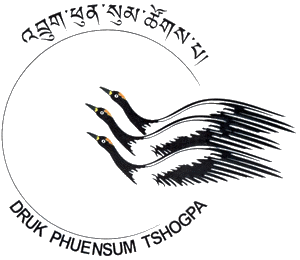
Druk Phuensum Tshogpa is one of the major political parties in Bhutan. It was formed on 25 July 2007 as a merger of the All People's Party and the Bhutan People's United Party, which were both short-lived. The working committee of the merged entity, headed by the former home minister, Jigmi Yoezer Thinley, decided on the name for the new party. On 15 August 2007, Jigmi Yoezer Thinley was elected president of the party, and the party applied for registration, thus becoming the second political party in Bhutan to do so. On 2 October 2007, the Election Commission of Bhutan registered the party. On 24 March 2008, the party won the first general election held in Bhutan. The party secured 45 of the 47 seats to the National Assembly. The party tends to be more popular in the east of the country.

The National Assembly is the elected lower house of Bhutan's bicameral Parliament which also comprises the Druk Gyalpo and the National Council. It is the more powerful house.

National Assembly elections were held in Bhutan for the first time on 24 March 2008. Two parties were registered by the Election Commission of Bhutan to contest the elections; Druk Phuensum Tshogpa, led by Jigme Y. Thinley, which was formed by the merger of the Bhutan People's United Party and All People's Party, and the People's Democratic Party (PDP). A third political party, the Bhutan National Party (BNP), had its application for the registration refused.
Bhutan officially becomes a democracy, with its first ever general election.

Bhutan, officially the Kingdom of Bhutan, is a landlocked country in South Asia. It is situated in the Eastern Himalayas, between China in the north and India in the south. A mountainous country, Bhutan is known as "Druk Yul," or "Land of the Thunder Dragon". Nepal and Bangladesh are located near Bhutan but do not share a land border. The country has a population of over 727,145 and territory of 38,394 square kilometres (14,824 sq mi) and ranks 133rd in terms of land area and 160th in population. Bhutan is a Constitutional Democratic Monarchy with King as head of state and Prime Minister as head of government. Mahayana and Vajrayana Buddhism is the state religion and Je khenpo is the head of state religion.

Democracy is a form of government in which the people have the authority to deliberate and decide legislation, or to choose governing officials to do so. Who is considered part of "the people" and how authority is shared among or delegated by the people has changed over time and at different rates in different countries, but over time more and more of a democratic country's inhabitants have generally been included. Cornerstones of democracy include freedom of assembly, association, property rights, freedom of religion and speech, inclusiveness and equality, citizenship, consent of the governed, voting rights, freedom from unwarranted governmental deprivation of the right to life and liberty, and minority rights.

National Assembly elections were held in Bhutan for the first time on 24 March 2008. Two parties were registered by the Election Commission of Bhutan to contest the elections; Druk Phuensum Tshogpa, led by Jigme Y. Thinley, which was formed by the merger of the Bhutan People's United Party and All People's Party, and the People's Democratic Party (PDP). A third political party, the Bhutan National Party (BNP), had its application for the registration refused.
The Arab League votes 21–1 in favor of a resolution demanding an end to the 2003 invasion of Iraq.
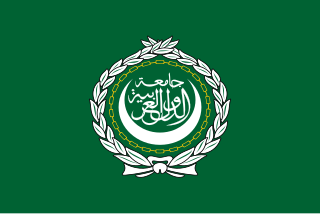
The Arab League, formally the League of Arab States, is a regional organization in the Arab world, which is located in Northern Africa, Western Africa, Eastern Africa, and Western Asia. The Arab League was formed in Cairo on 22 March 1945, initially with six members: Egypt, Iraq, Transjordan, Lebanon, Saudi Arabia, and Syria. Yemen joined as a member on 5 May 1945. Currently, the League has 22 members, but Syria's participation has been suspended since November 2011.

The 2003 invasion of Iraq was a United States-led invasion of the Republic of Iraq and the first stage of the Iraq War. The invasion phase began on 19 March 2003 (air) and 20 March 2003 (ground) and lasted just over one month, including 26 days of major combat operations, in which a combined force of troops from the United States, the United Kingdom, Australia, and Poland invaded Iraq. Twenty-two days after the first day of the invasion, the capital city of Baghdad was captured by Coalition forces on 9 April 2003 after the six-day-long Battle of Baghdad. This early stage of the war formally ended on 1 May 2003 when U.S. President George W. Bush declared the "end of major combat operations" in his Mission Accomplished speech, after which the Coalition Provisional Authority (CPA) was established as the first of several successive transitional governments leading up to the first Iraqi parliamentary election in January 2005. U.S. military forces later remained in Iraq until the withdrawal in 2011.
Kosovo War: NATO began attacks on Yugoslavia without United Nations Security Council (UNSC) approval, marking the first time NATO has attacked a sovereign country.

The Kosovo War was an armed conflict in Kosovo that started 28 February 1998 and lasted until 11 June 1999. It was fought by the forces of the Federal Republic of Yugoslavia, which controlled Kosovo before the war, and the Kosovo Albanian rebel group known as the Kosovo Liberation Army (KLA). The conflict ended when the North Atlantic Treaty Organization (NATO) intervened by beginning air strikes in March 1999 which resulted in Yugoslav forces withdrawing from Kosovo.

The North Atlantic Treaty Organization, also called the North Atlantic Alliance, is an intergovernmental military alliance between 30 member states – 28 European and two North American. Established in the aftermath of World War II, the organization implemented the North Atlantic Treaty, signed in Washington, D.C., on 4 April 1949. NATO is a collective security system: its independent member states agree to defend each other against attacks by third parties. During the Cold War, NATO operated as a check on the perceived threat posed by the Soviet Union. The alliance remained in place after the dissolution of the Soviet Union and has been involved in military operations in the Balkans, the Middle East, South Asia, and Africa. The organization's motto is animus in consulendo liber.
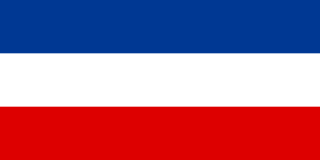
Serbia and Montenegro was a country in Southeast Europe located in the Balkans that existed from 1992 to 2006, following the breakup of the Socialist Federal Republic of Yugoslavia which bordered Hungary to the north, Romania to the northeast, Bulgaria to the southeast, Macedonia to the south, Croatia and Bosnia and Herzegovina to the west, and Albania to the southwest. The state was founded on 27 April 1992 as the Federal Republic of Yugoslavia, known as FR Yugoslavia or simply Yugoslavia which comprised the Republic of Serbia and the Republic of Montenegro. In February 2003, FR Yugoslavia was transformed from a federal republic to a political union until Montenegro seceded from the union in June 2006, leading to the full independence of both Serbia and Montenegro.

The United Nations Security Council (UNSC) is one of the six principal organs of the United Nations (UN) and is charged with ensuring international peace and security, recommending the admission of new UN members to the General Assembly, and approving any changes to the UN Charter. Its powers include establishing peacekeeping operations, enacting international sanctions, and authorizing military action. The UNSC is the only UN body with the authority to issue binding resolutions on member states.
A lorry carrying margarine and flour catches fire inside the Mont Blanc Tunnel, creating an inferno that kills 38 people.

On 24 March 1999, a transport truck caught fire while driving through the Mont Blanc Tunnel between Italy and France. Other vehicles traveling through the tunnel became trapped and firefighters were unable to reach the transport truck. Thirty-nine people were killed. In the aftermath, major changes were made to the tunnel to improve its safety.
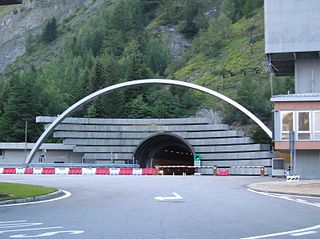
The Mont Blanc Tunnel is a highway tunnel between France and Italy, under the Mont Blanc mountain in the Alps. It links Chamonix, Haute-Savoie, France with Courmayeur, Aosta Valley, Italy, via the French Route Nationale 205 and the Italian Traforo T1, in particular the motorways serving Geneva and Turin. The passageway is one of the major trans-Alpine transport routes, particularly for Italy, which relies on this tunnel for transporting as much as one-third of its freight to northern Europe. It reduces the route from France to Turin by 50 kilometres and to Milan by 100 km (60 mi). Northeast of Mont Blanc's summit, the tunnel is about 15 km (10 mi) southwest of the tripoint with Switzerland, near Mont Dolent.
Mitchell Johnson and Andrew Golden, aged 11 and 13 respectively, fire upon teachers and students at Westside Middle School in Jonesboro, Arkansas; five people are killed and ten are wounded.
The Westside Middle School shooting was a school shooting on March 24, 1998, at Westside Middle School in unincorporated Craighead County, Arkansas near the city of Jonesboro. Perpetrators Mitchell Johnson, 13, and Andrew Golden, 11, fatally shot four students and a teacher with multiple weapons, and both were arrested when they attempted to flee the scene. Ten others were wounded. Golden and Johnson were convicted of five murders and ten assaults, and were imprisoned until each turned 21 years of age. After the 1992 Lindhurst High School shooting that killed four people in Olivehurst, California, the massacre was the deadliest non-college school shooting in contemporary U.S. history until the April 1999 Columbine High School massacre.

Jonesboro is a city located on Crowley's Ridge in the northeastern corner of the U.S. State of Arkansas. Jonesboro is one of two county seats of Craighead County. According to the 2020 Census, the city had a population of 78,576 and is the fifth-largest city in Arkansas. In 2020, the Jonesboro metropolitan area had a population of 133,860 and a population of 179,932 in the Jonesboro-Paragould Combined Statistical Area.
A tornado sweeps through Dantan in India, killing 250 people and injuring 3,000 others.

A tornado is a violently rotating column of air that is in contact with both the surface of the Earth and a cumulonimbus cloud or, in rare cases, the base of a cumulus cloud. It is often referred to as a twister, whirlwind or cyclone, although the word cyclone is used in meteorology to name a weather system with a low-pressure area in the center around which, from an observer looking down toward the surface of the Earth, winds blow counterclockwise in the Northern Hemisphere and clockwise in the Southern. Tornadoes come in many shapes and sizes, and they are often visible in the form of a condensation funnel originating from the base of a cumulonimbus cloud, with a cloud of rotating debris and dust beneath it. Most tornadoes have wind speeds less than 180 km/h (110 mph), are about 80 m across, and travel several kilometers before dissipating. The most extreme tornadoes can attain wind speeds of more than 480 km/h (300 mph), are more than 3 km in diameter, and stay on the ground for more than 100 km.
Dantan is a village in the Dantan I CD block in the Kharagpur subdivision of the Paschim Medinipur district in the state of West Bengal, India.
Dr. Rüdiger Marmulla performed the first computer-assisted Bone Segment Navigation at the University of Regensburg, Germany.
Rüdiger Marmulla is a German cranio-maxillofacial surgeon.
Computer-aided or computer-assisted is an adjectival phrase that hints of the use of a computer as an indispensable tool in a certain field, usually derived from more traditional fields of science and engineering. Instead of the phrase computer-aided or computer-assisted, in some cases the suffix management system is used.
Bone segment navigation is a surgical method used to find the anatomical position of displaced bone fragments in fractures, or to position surgically created fragments in craniofacial surgery. Such fragments are later fixed in position by osteosynthesis. It has been developed for use in craniofacial and oral and maxillofacial surgery.

The University of Regensburg is a public research university located in the medieval city of Regensburg, Bavaria, a city that is listed as a UNESCO World Heritage Site. The university was founded on 18 July 1962 by the Landtag of Bavaria as the fourth full-fledged university in Bavaria. Following groundbreaking in 1965, the university officially opened to students during the 1967–1968 winter semester, initially housing faculties in Law and Business Sciences and Philosophy. During the summer semester of 1968 the faculty of Theology was created. Currently, the University of Regensburg houses eleven faculties.

Germany, officially the Federal Republic of Germany, is a country in Central Europe. It is the second most populous country in Europe after Russia, and the most populous member state of the European Union. Germany is situated between the Baltic and North seas to the north, and the Alps to the south; it covers an area of 357,022 square kilometres (137,847 sq mi), with a population of almost 84 million within its 16 constituent states. Germany borders Denmark to the north, Poland and the Czech Republic to the east, Austria and Switzerland to the south, and France, Luxembourg, Belgium, and the Netherlands to the west. The nation's capital and most populous city is Berlin and its financial centre is Frankfurt; the largest urban area is the Ruhr.
Comet Shoemaker–Levy 9 is discovered by Carolyn and Eugene Shoemaker, and David Levy at the Palomar Observatory in California.
Comet Shoemaker–Levy 9 broke apart in July 1992 and collided with Jupiter in July 1994, providing the first direct observation of an extraterrestrial collision of Solar System objects. This generated a large amount of coverage in the popular media, and the comet was closely observed by astronomers worldwide. The collision provided new information about Jupiter and highlighted its possible role in reducing space debris in the inner Solar System.

Carolyn Jean Spellmann Shoemaker was an American astronomer and a co-discoverer of Comet Shoemaker–Levy 9. She discovered 32 comets and more than 500 asteroids.

Eugene Merle Shoemaker was an American geologist. He co-discovered Comet Shoemaker–Levy 9 with his wife Carolyn S. Shoemaker and David H. Levy. This comet hit Jupiter in July 1994: the impact was televised around the world. Shoemaker also studied terrestrial craters, such as Barringer Meteor Crater in Arizona, and along with Edward Chao provided the first conclusive evidence of its origin as an impact crater. He was also the first director of the United States Geological Survey's Astrogeology Research Program.

David Howard Levy is a Canadian amateur astronomer, science writer and discoverer of comets and minor planets, who co-discovered Comet Shoemaker–Levy 9 in 1993, which collided with the planet Jupiter in 1994.
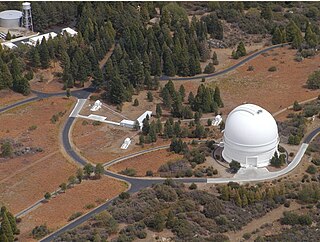
Palomar Observatory is an astronomical research observatory in San Diego County, California, United States, in the Palomar Mountain Range. It is owned and operated by the California Institute of Technology (Caltech). Research time at the observatory is granted to Caltech and its research partners, which include the Jet Propulsion Laboratory (JPL), Yale University, and the National Optical Observatories of China.

California is a state in the Western United States, located along the Pacific Coast. With nearly 39.2 million residents across a total area of approximately 163,696 square miles (423,970 km2), it is the most populous U.S. state and the 3rd largest by area. It is also the most populated subnational entity in North America and the 34th most populous in the world. The Greater Los Angeles area and the San Francisco Bay Area are the nation's second and fifth most populous urban regions respectively, with the former having more than 18.7 million residents and the latter having over 9.6 million. Sacramento is the state's capital, while Los Angeles is the most populous city in the state and the second most populous city in the country. San Francisco is the second most densely populated major city in the country. Los Angeles County is the country's most populous, while San Bernardino County is the largest county by area in the country. California borders Oregon to the north, Nevada and Arizona to the east, the Mexican state of Baja California to the south; and has a coastline along the Pacific Ocean to the west.
Indian intervention in the Sri Lankan Civil War ends with last ship of Indian Peace Keeping Force leaving Sri Lanka.
The Indian intervention in the Sri Lankan Civil War was the deployment of the Indian Peace Keeping Force in Sri Lanka intended to perform a peacekeeping role. The deployment followed the Indo-Sri Lankan Accord between India and Sri Lanka of 1987 which was intended to end the Sri Lankan Civil War between militant Sri Lankan Tamil nationalists, principally the Liberation Tigers of Tamil Eelam (LTTE), and the Sri Lankan military.

Indian Peace Keeping Force (IPKF) was the Indian military contingent performing a peacekeeping operation in Sri Lanka between 1987 and 1990. It was formed under the mandate of the 1987 Indo-Sri Lankan Accord that aimed to end the Sri Lankan Civil War between Sri Lankan Tamil militant groups such as the Liberation Tigers of Tamil Eelam (LTTE) and the Sri Lankan military.

Sri Lanka, formerly known as Ceylon and officially the Democratic Socialist Republic of Sri Lanka, is an island country in South Asia. It lies in the Indian Ocean, southwest of the Bay of Bengal, and southeast of the Arabian Sea; it is separated from the Indian subcontinent by the Gulf of Mannar and the Palk Strait. Sri Lanka shares a maritime border with India and the Maldives. Sri Jayawardenepura Kotte is its legislative capital, and Colombo is its largest city and financial centre.
The tanker Exxon Valdez began to spill 10.8 million US gal (260,000 bbl; 41,000 m3) of crude oil into Prince William Sound, Alaska, causing one of the most devastating man-made maritime environmental disasters.

Oriental Nicety, formerly Exxon Valdez, Exxon Mediterranean, SeaRiver Mediterranean, S/R Mediterranean, Mediterranean, and Dong Fang Ocean, was an oil tanker that gained notoriety after running aground in Prince William Sound, spilling its cargo of crude oil into the sea. On March 24, 1989, while owned by the former Exxon Shipping Company, captained by Joseph Hazelwood and First Mate James Kunkel, and bound for Long Beach, California, the vessel ran aground on the Bligh Reef, resulting in the second largest oil spill in United States history. The size of the spill is estimated to have been 40,900 to 120,000 m3. In 1989, the Exxon Valdez oil spill was listed as the 54th largest spill in history.

The Exxon Valdez oil spill occurred in Prince William Sound, Alaska, on March 24, 1989. Exxon Valdez, an oil supertanker owned by Exxon Shipping Company bound for Long Beach, California struck Prince William Sound's Bligh Reef, 1.5 mi (2.4 km) west of Tatitlek, Alaska at 12:04 a.m. and spilled 10.8 million US gallons (257,000 bbl) of crude oil over the next few days.

A barrel is one of several units of volume applied in various contexts; there are dry barrels, fluid barrels, oil barrels, and so forth. For historical reasons the volumes of some barrel units are roughly double the volumes of others; volumes in common use range approximately from 100 to 200 litres. In many connections the term drum is used almost interchangeably with barrel.

Prince William Sound is a sound of the Gulf of Alaska on the south coast of the U.S. state of Alaska. It is located on the east side of the Kenai Peninsula. Its largest port is Valdez, at the southern terminus of the Trans-Alaska Pipeline System. Other settlements on the sound, which contains numerous small islands, include Cordova and Whittier plus the Alaska native villages of Chenega and Tatitlek.

An environmental disaster or ecological disaster is defined as a catastrophic event regarding the natural environment that is due to human activity. This point distinguishes environmental disasters from other disturbances such as natural disasters and intentional acts of war such as nuclear bombings.
In Prince William Sound in Alaska, the Exxon Valdez spills 240,000 barrels (38,000 m3) of crude oil after running aground.

Prince William Sound is a sound of the Gulf of Alaska on the south coast of the U.S. state of Alaska. It is located on the east side of the Kenai Peninsula. Its largest port is Valdez, at the southern terminus of the Trans-Alaska Pipeline System. Other settlements on the sound, which contains numerous small islands, include Cordova and Whittier plus the Alaska native villages of Chenega and Tatitlek.

The Exxon Valdez oil spill occurred in Prince William Sound, Alaska, on March 24, 1989. Exxon Valdez, an oil supertanker owned by Exxon Shipping Company bound for Long Beach, California struck Prince William Sound's Bligh Reef, 1.5 mi (2.4 km) west of Tatitlek, Alaska at 12:04 a.m. and spilled 10.8 million US gallons (257,000 bbl) of crude oil over the next few days.

Petroleum, also known as crude oil, or simply oil, is a naturally occurring yellowish-black liquid mixture of mainly hydrocarbons, and is found in geological formations. The name petroleum covers both naturally occurring unprocessed crude oil and petroleum products that consist of refined crude oil. A fossil fuel, petroleum is formed when large quantities of dead organisms, mostly zooplankton and algae, are buried underneath sedimentary rock and subjected to both prolonged heat and pressure.
The Loscoe gas explosion leads to new UK laws on landfill gas migration and gas protection on landfill sites.

Loscoe is a village near Heanor in Derbyshire, England, lying within the civil parish of Heanor and Loscoe. It had prominent coalmines in the 19th and 20th centuries. Denby Common and Codnor Breach are hamlets on the western edge of the village.
Landfill gas migration is a complex process in which gases produced by waste in a landfill move from the site of original deposition to other places via diffusion, usually from areas of high concentration to low. The process is also affected by the permeability of the ground and other factors, such as pressure differences in the soil, cavities, pipes, and tunnels. Changes in atmospheric pressure and the water table can encourage this migration.

A landfill site, also known as a tip, dump, rubbish dump, garbage dump, or dumping ground, is a site for the disposal of waste materials. Landfill is the oldest and most common form of waste disposal, although the systematic burial of the waste with daily, intermediate and final covers only began in the 1940s. In the past, refuse was simply left in piles or thrown into pits; in archeology this is known as a midden.
One day after making a plea to Salvadoran soldiers to stop carrying out the government's repression, Archbishop Óscar Romero was assassinated while celebrating Mass in San Salvador.
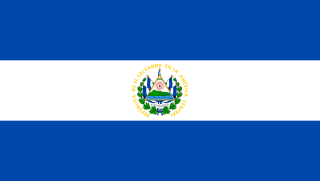
The Revolutionary Government Junta was the name of three consecutive joint civilian-military dictatorships that ruled El Salvador between 15 October 1979 and 2 May 1982.

Óscar Arnulfo Romero y Galdámez was a prelate of the Catholic Church in El Salvador. He served as Auxiliary Bishop of the Archdiocese of San Salvador, the Titular Bishop of Tambeae, as Bishop of Santiago de María, and finally as the fourth Archbishop of San Salvador. As archbishop, Romero spoke out against social injustice and violence amid the escalating conflict between the military government and left-wing insurgents that led to the Salvadoran Civil War. In 1980, Romero was shot by an assassin while celebrating Mass. Though no one was ever convicted for the crime, investigations by the UN-created Truth Commission for El Salvador concluded that Major Roberto D'Aubuisson, a death squad leader and later founder of the right-wing Nationalist Republican Alliance (ARENA) political party, had ordered the killing.

The Mass is the central liturgical service of the Eucharist in the Catholic Church, in which bread and wine are consecrated and become the body and blood of Christ. As defined by the Church at the Council of Trent, in the Mass, "the same Christ who offered himself once in a bloody manner on the altar of the cross, is present and offered in an unbloody manner". The Church describes the Mass as the "source and summit of the Christian life". Thus the Church teaches that the Mass is a sacrifice. It teaches that the sacramental bread and wine, through consecration by an ordained priest, become the sacrificial body, blood, soul, and divinity of Christ as the sacrifice on Calvary made truly present once again on the altar. The Catholic Church permits only baptised members in the state of grace to receive Christ in the Eucharist.

San Salvador is the capital and the largest city of El Salvador and its eponymous department. It is the country's political, cultural, educational and financial center. The Metropolitan Area of San Salvador, which comprises the capital itself and 13 of its municipalities, has a population of 2,404,097. The urban area of San Salvador has a population of 1,600,000 inhabitants.
El Salvadorian Archbishop Óscar Romero is assassinated while celebrating Mass in San Salvador.

El Salvador, officially the Republic of El Salvador, is a country in Central America. It is bordered on the northeast by Honduras, on the northwest by Guatemala, and on the south by the Pacific Ocean. El Salvador's capital and largest city is San Salvador. The country's population in 2021 is estimated to be 6.8 million.

In Christian denominations, an archbishop is a bishop of higher rank or office. In most cases, such as the Catholic Church, there are many archbishops who either have jurisdiction over an ecclesiastical province in addition to their own archdiocese, or are otherwise granted a titular archbishopric. In others, such as the Lutheran Church of Sweden and the Church of England, the title is borne by the leader of the denomination.

Óscar Arnulfo Romero y Galdámez was a prelate of the Catholic Church in El Salvador. He served as Auxiliary Bishop of the Archdiocese of San Salvador, the Titular Bishop of Tambeae, as Bishop of Santiago de María, and finally as the fourth Archbishop of San Salvador. As archbishop, Romero spoke out against social injustice and violence amid the escalating conflict between the military government and left-wing insurgents that led to the Salvadoran Civil War. In 1980, Romero was shot by an assassin while celebrating Mass. Though no one was ever convicted for the crime, investigations by the UN-created Truth Commission for El Salvador concluded that Major Roberto D'Aubuisson, a death squad leader and later founder of the right-wing Nationalist Republican Alliance (ARENA) political party, had ordered the killing.

The Mass is the central liturgical service of the Eucharist in the Catholic Church, in which bread and wine are consecrated and become the body and blood of Christ. As defined by the Church at the Council of Trent, in the Mass, "the same Christ who offered himself once in a bloody manner on the altar of the cross, is present and offered in an unbloody manner". The Church describes the Mass as the "source and summit of the Christian life". Thus the Church teaches that the Mass is a sacrifice. It teaches that the sacramental bread and wine, through consecration by an ordained priest, become the sacrificial body, blood, soul, and divinity of Christ as the sacrifice on Calvary made truly present once again on the altar. The Catholic Church permits only baptised members in the state of grace to receive Christ in the Eucharist.

San Salvador is the capital and the largest city of El Salvador and its eponymous department. It is the country's political, cultural, educational and financial center. The Metropolitan Area of San Salvador, which comprises the capital itself and 13 of its municipalities, has a population of 2,404,097. The urban area of San Salvador has a population of 1,600,000 inhabitants.
Morarji Desai became the Prime Minister of India, the first Prime Minister not to belong to Indian National Congress.

Morarji Ranchhodji Desai was an Indian independence activist and politician who served as the 4th Prime Minister of India between 1977 to 1979 leading the government formed by the Janata Party. During his long career in politics, he held many important posts in government such as Chief Minister of Bombay State, Home Minister, Finance Minister and 2nd Deputy Prime Minister of India.

The prime minister of India is the head of government of the Republic of India. Executive authority is vested in the prime minister and their chosen Council of Ministers, despite the president of India being the nominal head of the executive. The prime minister is often the leader of the party or the coalition with a majority in the lower house of the Parliament of India, the Lok Sabha, which is the main legislative body in the Republic of India. The prime minister and their cabinet are at all times responsible to the Lok Sabha.

The Indian National Congress (INC), colloquially the Congress Party but often simply the Congress, is a political party in India with widespread roots. Founded in 1885, it was the first modern nationalist movement to emerge in the British Empire in Asia and Africa. From the late 19th century, and especially after 1920, under the leadership of Mahatma Gandhi, the Congress became the principal leader of the Indian independence movement. The Congress led India to independence from the United Kingdom, and significantly influenced other anti-colonial nationalist movements in the British Empire.
In Argentina, the armed forces overthrow the constitutional government of President Isabel Perón and start a 7-year dictatorial period self-styled the National Reorganization Process.

Argentina, officially the Argentine Republic, is a country in the southern half of South America. Argentina covers an area of 2,780,400 km2 (1,073,500 sq mi), making it the second-largest country in South America after Brazil, the fourth-largest country in the Americas, and the eighth-largest country in the world. It shares the bulk of the Southern Cone with Chile to the west, and is also bordered by Bolivia and Paraguay to the north, Brazil to the northeast, Uruguay and the South Atlantic Ocean to the east, and the Drake Passage to the south. Argentina is a federal state subdivided into twenty-three provinces, and one autonomous city, which is the federal capital and largest city of the nation, Buenos Aires. The provinces and the capital have their own constitutions, but exist under a federal system. Argentina claims sovereignty over the Falkland Islands, South Georgia and the South Sandwich Islands, and a part of Antarctica.
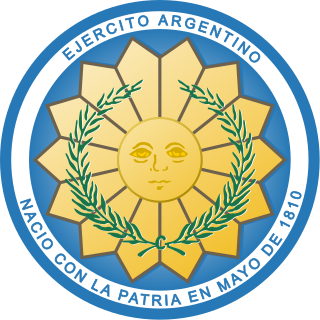
The Argentine Army is the land force branch of the Armed Forces of the Argentine Republic and the senior military service of Argentina. Under the Argentine Constitution, the president of Argentina is the commander-in-chief of the Armed Forces, exercising his or her command authority through the Minister of Defense.

The president of Argentina, officially known as the president of the Argentine Nation, is both head of state and head of government of Argentina. Under the national constitution, the president is also the chief executive of the federal government and commander-in-chief of the armed forces.

Isabel Martínez de Perón, also known as Isabelita, is an Argentine politician who served as President of Argentina from 1974 to 1976. She was one of the first female republican heads of state in the world, and the first woman to serve as president of a country.

The National Reorganization Process was the military dictatorship that ruled Argentina from 1976 to 1983, in which it was supported by the United States until 1982. In Argentina it is often known simply as última junta militar, última dictadura militar or última dictadura cívico-militar, because there have been several in the country's history.
Direct rule is imposed on Northern Ireland by the Government of the United Kingdom under Edward Heath.
In Northern Irish politics, direct rule is the administration of Northern Ireland directly by the Government of the United Kingdom. It was practised for 26 straight years between 1972 and 1998 during the Troubles, and has since then been temporarily applied during suspensions. The most recent period of direct rule came to an end on 8 May 2007 when power was restored to the Northern Ireland Assembly following April elections and a power-sharing agreement among major parties.

Northern Ireland is a part of the United Kingdom, situated in the north-east of the island of Ireland, that is variously described as a country, province or region. Northern Ireland shares a border to the south and west with the Republic of Ireland. In 2021, its population was 1,903,100, making up about 27% of Ireland's population and about 3% of the UK's population. The Northern Ireland Assembly, established by the Northern Ireland Act 1998, holds responsibility for a range of devolved policy matters, while other areas are reserved for the UK Government. Northern Ireland cooperates with the Republic of Ireland in several areas.

The Government of the United Kingdom, officially His Majesty's Government, is the central executive authority of the United Kingdom of Great Britain and Northern Ireland. The government is led by the prime minister who selects all the other ministers. The country has had a Conservative-led government since 2010, with successive prime ministers being the then leader of the Conservative Party. The prime minister and their most senior ministers belong to the supreme decision-making committee, known as the Cabinet.

Sir Edward Richard George Heath was a British politician who served as Prime Minister of the United Kingdom from 1970 to 1974 and Leader of the Conservative Party from 1965 to 1975. Heath also served for 51 years as a Member of Parliament from 1950 to 2001. Outside politics, Heath was a yachtsman, a musician, and an author.
The Quebec Board of the French Language is established.
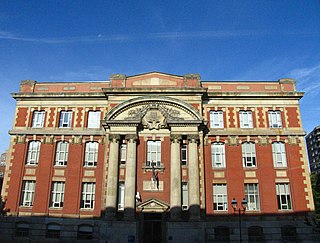
The Office québécois de la langue française is a public organization established on 24 March 1961, by the Liberal government of Jean Lesage. Attached to the Ministère de la Culture et des Communications du Québec, its initial mission, defined in its report of 1 April 1964, was "to align on international French, promote good Canadianisms and fight Anglicisms ... work on the normalization of the language in Quebec and support State intervention to carry out a global language policy that would consider notably the importance of socio-economic motivations in making French the priority language in Quebec".
Hanns Albin Rauter, a chief SS and Police Leader, in the Netherlands, is convicted and executed for crimes against humanity.

Johann Baptist Albin Rauter was a high-ranking Austrian-born SS functionary and war criminal during the Nazi era. He was the highest SS and Police Leader in the occupied Netherlands and therefore the leading security and police officer there during the period of 1940–1945. Rauter reported directly to the Nazi SS chief, Heinrich Himmler, and also to the Nazi governor of the Netherlands, Arthur Seyss-Inquart. After World War II, he was convicted in the Netherlands of crimes against humanity and executed by firing squad.
The title of SS and Police Leader designated a senior Nazi Party official who commanded various components of the SS and the German uniformed police (Ordnungspolizei), prior to and during World War II in the German Reich proper and in occupied territories.

The Netherlands, informally Holland, is a country located in Northwestern Europe with overseas territories in the Caribbean. It is the largest of four constituent countries of the Kingdom of the Netherlands. The Netherlands consists of twelve provinces; it borders Germany to the east, Belgium to the south, with a North Sea coastline to the north and west. It shares maritime borders with the United Kingdom, Germany and Belgium in the North Sea. The country's official language is Dutch, with West Frisian as a secondary official language in the province of Friesland. Dutch Low Saxon and Limburgish are recognised regional languages, while Dutch Sign Language, Sinte Romani and Yiddish are recognised non-territorial languages. Dutch, English and Papiamento are official in the Caribbean territories.
Formulated at the initiative of British prime minister Clement Attlee, the Cabinet Mission arrived in New Delhi to discuss the transfer of power from the colonial government to Indian leadership.
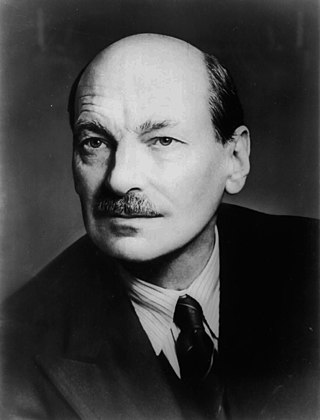
Clement Richard Attlee, 1st Earl Attlee, was a British politician who served as Prime Minister of the United Kingdom from 1945 to 1951 and Leader of the Labour Party from 1935 to 1955. He was Deputy Prime Minister during the wartime coalition government under Winston Churchill, and served twice as Leader of the Opposition from 1935 to 1940 and from 1951 to 1955. Attlee remains the longest serving Labour leader.
A Cabinet Mission came to India in 1946 in order to discuss the transfer of power from the British government to the Indian political leadership, with the aim of preserving India's unity and granting its independence. Formed at the initiative of Clement Attlee, the mission contained as its members, Lord Pethick-Lawrence, Sir Stafford Cripps, and A.V. Alexander. The Viceroy of India Lord Wavell participated in some of the discussions.

The British Raj was the rule of the British Crown on the Indian subcontinent; it is also called Crown rule in India, or Direct rule in India, and lasted from 1858 to 1947. The region under British control was commonly called India in contemporaneous usage and included areas directly administered by the United Kingdom, which were collectively called British India, and areas ruled by indigenous rulers, but under British paramountcy, called the princely states. The region was sometimes called the Indian Empire, though not officially.
A British Cabinet Mission arrives in India to discuss and plan for the transfer of power from the British Raj to Indian leadership.
A Cabinet Mission came to India in 1946 in order to discuss the transfer of power from the British government to the Indian political leadership, with the aim of preserving India's unity and granting its independence. Formed at the initiative of Clement Attlee, the mission contained as its members, Lord Pethick-Lawrence, Sir Stafford Cripps, and A.V. Alexander. The Viceroy of India Lord Wavell participated in some of the discussions.

The British Raj was the rule of the British Crown on the Indian subcontinent; it is also called Crown rule in India, or Direct rule in India, and lasted from 1858 to 1947. The region under British control was commonly called India in contemporaneous usage and included areas directly administered by the United Kingdom, which were collectively called British India, and areas ruled by indigenous rulers, but under British paramountcy, called the princely states. The region was sometimes called the Indian Empire, though not officially.
German troops massacre 335 Italian civilians in Rome.

Nazi Germany was the German state between 1933 and 1945, when Adolf Hitler and the Nazi Party controlled the country, transforming it into a dictatorship. Under Hitler's rule, Germany quickly became a totalitarian state where nearly all aspects of life were controlled by the government. The Third Reich, meaning "Third Realm" or "Third Empire", alluded to the Nazi claim that Nazi Germany was the successor to the earlier Holy Roman Empire (800–1806) and German Empire (1871–1918). The Third Reich, which Hitler and the Nazis referred to as the Thousand-Year Reich, ended in May 1945 after just 12 years when the Allies defeated Germany, ending World War II in Europe.

The Ardeatine massacre, or Fosse Ardeatine massacre, was a mass killing of 335 civilians and political prisoners carried out in Rome on 24 March 1944 by German occupation troops during the Second World War as a reprisal for the Via Rasella attack in central Rome against the SS Police Regiment Bozen the previous day.

Rome is the capital city of Italy. It is also the capital of the Lazio region, the centre of the Metropolitan City of Rome, and a special comune named Comune di Roma Capitale. With 2,860,009 residents in 1,285 km2 (496.1 sq mi), Rome is the country's most populated comune and the third most populous city in the European Union by population within city limits. The Metropolitan City of Rome, with a population of 4,355,725 residents, is the most populous metropolitan city in Italy. Its metropolitan area is the third-most populous within Italy. Rome is located in the central-western portion of the Italian Peninsula, within Lazio (Latium), along the shores of the Tiber. Vatican City is an independent country inside the city boundaries of Rome, the only existing example of a country within a city. Rome is often referred to as the City of Seven Hills due to its geographic location, and also as the "Eternal City". Rome is generally considered to be the "cradle of Western civilization and Christian culture", and the centre of the Catholic Church.
World War II: In an event later dramatized in the movie The Great Escape, 76 Allied prisoners of war begin breaking out of the German camp Stalag Luft III.

World War II or the Second World War, often abbreviated as WWII or WW2, was a world war that lasted from 1939 to 1945. It involved the vast majority of the world's countries—including all of the great powers—forming two opposing military alliances: the Allies and the Axis powers. World War II was a total war that directly involved more than 100 million personnel from more than 30 countries.
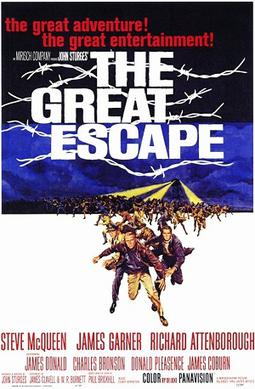
The Great Escape is a 1963 American war adventure film starring Steve McQueen, James Garner and Richard Attenborough and featuring James Donald, Charles Bronson, Donald Pleasence, James Coburn, Hannes Messemer, David McCallum, Karl-Otto Alberty, Gordon Jackson, John Leyton and Angus Lennie. It was filmed in Panavision, and its musical score was composed by Elmer Bernstein.

The Allies, formally referred to as the United Nations from 1942, were an international military coalition formed during the Second World War (1939–1945) to oppose the Axis powers, led by Nazi Germany, Imperial Japan, and Fascist Italy. Its principal members by 1941 were the United Kingdom, United States, Soviet Union, and China.

Nazi Germany operated around 1,000 prisoner-of-war camps during World War II (1939-1945).
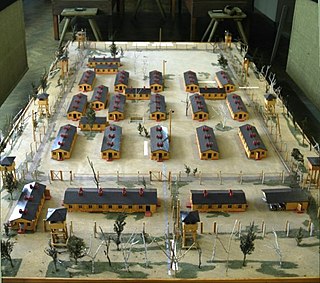
Stalag Luft III was a Luftwaffe-run prisoner-of-war (POW) camp during the Second World War, which held captured Western Allied air force personnel.
The Tydings–McDuffie Act came into effect, which provided for self-government of the Philippines and for Filipino independence from the United States after a period of ten years.

The Tydings–McDuffie Act, officially the Philippine Independence Act, is an Act of Congress that established the process for the Philippines, then an American territory, to become an independent country after a ten-year transition period. Under the act, the 1935 Constitution of the Philippines was written and the Commonwealth of the Philippines was established, with the first directly elected President of the Philippines. It also established limitations on Filipino immigration to the United States.
The Tydings–McDuffie Act is passed by the United States Congress, allowing the Philippines to become a self-governing commonwealth.

The Tydings–McDuffie Act, officially the Philippine Independence Act, is an Act of Congress that established the process for the Philippines, then an American territory, to become an independent country after a ten-year transition period. Under the act, the 1935 Constitution of the Philippines was written and the Commonwealth of the Philippines was established, with the first directly elected President of the Philippines. It also established limitations on Filipino immigration to the United States.

The United States Congress is the legislature of the federal government of the United States. It is bicameral, composed of a lower body, the House of Representatives, and an upper body, the Senate. It meets in the United States Capitol in Washington, D.C. Senators and representatives are chosen through direct election, though vacancies in the Senate may be filled by a governor's appointment. Congress has 535 voting members: 100 senators and 435 representatives. The vice president of the United States has a vote in the Senate only when senators are evenly divided. The House of Representatives has six non-voting members.

The Philippines, officially the Republic of the Philippines, is an archipelagic country in Southeast Asia. It is situated in the western Pacific Ocean and consists of around 7,641 islands that are broadly categorized under three main geographical divisions from north to south: Luzon, Visayas, and Mindanao. The Philippines is bounded by the South China Sea to the west, the Philippine Sea to the east, and the Celebes Sea to the southwest. It shares maritime borders with Taiwan to the north, Japan to the northeast, Palau to the east and southeast, Indonesia to the south, Malaysia to the southwest, Vietnam to the west, and China to the northwest. The Philippines covers an area of 300,000 km2 (120,000 sq mi) and, as of 2021, it had a population of around 109 million people, making it the world's thirteenth-most populous country. The Philippines has diverse ethnicities and cultures throughout its islands. Manila is the country's capital, while the largest city is Quezon City; both lie within the urban area of Metro Manila.

The Commonwealth of the Philippines was the administrative body that governed the Philippines from 1935 to 1946, aside from a period of exile in the Second World War from 1942 to 1945 when Japan occupied the country. It was established following the Tydings–McDuffie Act to replace the Insular Government, a United States territorial government. The Commonwealth was designed as a transitional administration in preparation for the country's full achievement of independence. Its foreign affairs remained managed by the United States.
Nanking Incident: Foreign warships bombard Nanjing, China, in defense of the foreign citizens within the city.

The Nanking Incident occurred in March 1927 during the capture of Nanjing by the National Revolutionary Army (NRA) in their Northern Expedition. Foreign warships bombarded the city to defend foreign residents against rioting and looting. Several ships were involved in the engagement, including vessels of the Royal Navy and the United States Navy. Marines and sailors were also landed for rescue operations including some 140 Dutch forces. Both Nationalist and Communist soldiers within the NRA participated in the rioting and looting of foreign-owned property in Nanjing.

Nanjing, alternately romanized as Nanking, is the capital of Jiangsu province of the People's Republic of China. It is a sub-provincial city, a megacity, and the third largest city in the East China region. The city has 11 districts, an administrative area of 6,600 km2 (2,500 sq mi), and a total recorded population of 9,314,685 as of 2020.
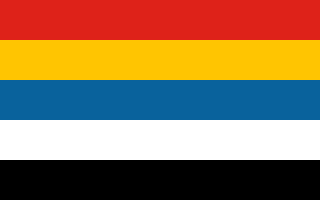
The Republic of China (ROC), between 1912 and 1949, was a sovereign state recognised as the official designation of China when it was based on Mainland China, prior to the relocation of its central government to Taiwan as a result of the Chinese Civil War. At a population of 541 million in 1949, it was the world's most populous country. Covering 11.4 million square kilometres, it consisted of 35 provinces, 1 special administrative region, 2 regions, 12 special municipalities, 14 leagues, and 4 special banners. The People's Republic of China (PRC), which rules mainland China today, considers ROC as a country that ceased to exist since 1949; thus, the history of ROC before 1949 is often referred to as Republican Era of China. The ROC, now based in Taiwan, today considers itself a continuation of the country, thus calling the period of its mainland governance as the Mainland Period of the Republic of China in Taiwan.
Irish War of Independence: In Belfast, two men wearing police uniforms broke into a house and murdered a Catholic family in what was believed to be a reprisal for the deaths of two policemen the day before.

The Irish War of Independence or Anglo-Irish War was a guerrilla war fought in Ireland from 1919 to 1921 between the Irish Republican Army and British forces: the British Army, along with the quasi-military Royal Irish Constabulary (RIC) and its paramilitary forces the Auxiliaries and Ulster Special Constabulary (USC). It was part of the Irish revolutionary period.

Belfast is the capital and largest city of Northern Ireland, standing on the banks of the River Lagan on the east coast. It is the 12th-largest city in the United Kingdom and the second-largest in Ireland. It had a population of 345,418 in 2021.
The McMahon killings or the McMahon murders occurred on 24 March 1922 when six Catholic civilians were shot dead at the home of the McMahon family in Belfast, Northern Ireland. A group of police officers broke into their house at night and shot all eight males inside, in an apparent sectarian attack. The victims were businessman Owen McMahon, four of his sons, and one of his employees. Two others were shot but survived, and a female family member was assaulted. The survivors said most of the gunmen wore police uniform and it is suspected they were members of the Ulster Special Constabulary (USC). It is believed to have been a reprisal for the Irish Republican Army's (IRA) killing of two policemen the day before.

Irish Roman Catholics are an ethnoreligious group which is native to Ireland and its members are both Catholic and Irish. Irish Catholics have a large diaspora, which includes more than 20 million Americans.
The inaugural Women's Olympiad, the first international women's sports event, opened at the International Sporting Club of Monaco in Monte Carlo.

The 1921 Women's Olympiad Olympiades Féminines and Jeux Olympiques Féminins was the first international women's sports event, a 5-day multi-sport event organised by Alice Milliat and held on 24–31 March 1921 in Monte Carlo at the International Sporting Club of Monaco. The tournament was formally called 1er Meeting International d'Education Physique Féminine de Sports Athlétiques. It was the first of three Women's Olympiads or "Monte Carlo Games" held annually at the venue, and the forerunner of the quadrennial Women's World Games, organised in 1922–34 by the International Women's Sports Federation founded by Milliat later in 1921.
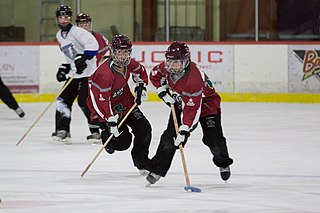
The participation of women and girls in sports, physical fitness and exercise, has been recorded to have existed throughout history. However, participation rates and activities vary in accordance with nation, era, geography, and stage of economic development. While initially occurring informally, the modern era of organized sports did not begin to emerge either for men or women until the late industrial age.
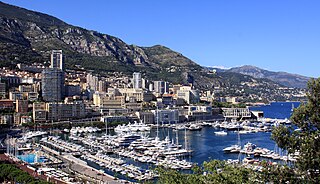
Monte Carlo is officially an administrative area of the Principality of Monaco, specifically the ward of Monte Carlo/Spélugues, where the Monte Carlo Casino is located. Informally, the name also refers to a larger district, the Monte Carlo Quarter, which besides Monte Carlo/Spélugues also includes the wards of La Rousse/Saint Roman, Larvotto/Bas Moulins and Saint Michel. The permanent population of the ward of Monte Carlo is about 3,500, while that of the quarter is about 15,000. Monaco has four traditional quarters. From west to east they are: Fontvieille, Monaco-Ville, La Condamine, and Monte Carlo.
The 1921 Women's Olympiad began in Monte Carlo, becoming the first international women's sports event.

The 1921 Women's Olympiad Olympiades Féminines and Jeux Olympiques Féminins was the first international women's sports event, a 5-day multi-sport event organised by Alice Milliat and held on 24–31 March 1921 in Monte Carlo at the International Sporting Club of Monaco. The tournament was formally called 1er Meeting International d'Education Physique Féminine de Sports Athlétiques. It was the first of three Women's Olympiads or "Monte Carlo Games" held annually at the venue, and the forerunner of the quadrennial Women's World Games, organised in 1922–34 by the International Women's Sports Federation founded by Milliat later in 1921.

Monte Carlo is officially an administrative area of the Principality of Monaco, specifically the ward of Monte Carlo/Spélugues, where the Monte Carlo Casino is located. Informally, the name also refers to a larger district, the Monte Carlo Quarter, which besides Monte Carlo/Spélugues also includes the wards of La Rousse/Saint Roman, Larvotto/Bas Moulins and Saint Michel. The permanent population of the ward of Monte Carlo is about 3,500, while that of the quarter is about 15,000. Monaco has four traditional quarters. From west to east they are: Fontvieille, Monaco-Ville, La Condamine, and Monte Carlo.

The participation of women and girls in sports, physical fitness and exercise, has been recorded to have existed throughout history. However, participation rates and activities vary in accordance with nation, era, geography, and stage of economic development. While initially occurring informally, the modern era of organized sports did not begin to emerge either for men or women until the late industrial age.
Mayor of New York City Robert Anderson Van Wyck breaks ground for a new underground "Rapid Transit Railroad" that would link Manhattan and Brooklyn.

The mayor of New York City, officially Mayor of the City of New York, is head of the executive branch of the government of New York City and the chief executive of New York City. The mayor's office administers all city services, public property, police and fire protection, most public agencies, and enforces all city and state laws within New York City.
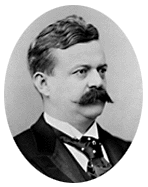
Robert Anderson Van Wyck was the first mayor of New York City after the consolidation of the five boroughs into the City of Greater New York in 1898.

The New York City Subway is a rapid transit system owned by the government of New York City and leased to the New York City Transit Authority, an affiliate agency of the state-run Metropolitan Transportation Authority (MTA). Opened on October 27, 1904, the New York City Subway is one of the world's oldest public transit systems, one of the most-used, and the one with the most stations, with 472 stations in operation. Stations are located throughout the boroughs of Manhattan, Brooklyn, Queens, and the Bronx.

Manhattan, known regionally as the City, is the most densely populated and geographically smallest of the five boroughs of New York City. The borough is also coextensive with New York County, one of the original counties of the U.S. state of New York. Located near the southern tip of New York State, Manhattan is based in the Eastern Time Zone and constitutes both the geographical and demographic center of the Northeast megalopolis and the urban core of the New York metropolitan area, the largest metropolitan area in the world by urban landmass. Over 58 million people live within 250 miles of Manhattan, which serves as New York City’s economic and administrative center, cultural identifier, and the city’s historical birthplace. Manhattan has been described as the cultural, financial, media, and entertainment capital of the world, is considered a safe haven for global real estate investors, and hosts the United Nations headquarters. New York City is the headquarters of the global art market, centered in Manhattan.

Brooklyn is a borough of New York City, coextensive with Kings County, in the U.S. state of New York. Kings County is the most populous county in the State of New York, and the second-most densely populated county in the United States, behind New York County (Manhattan). Brooklyn is also New York City's most populous borough, with 2,736,074 residents in 2020.
Carnegie Steel Company is formed in New Jersey; its capitalization of $160 mil. is the largest to date.

Carnegie Steel Company was a steel-producing company primarily created by Andrew Carnegie and several close associates to manage businesses at steel mills in the Pittsburgh, Pennsylvania area in the late 19th century. The company was formed in 1892 and was subsequently sold in 1901 in one of the largest business transactions of the early 20th century, to become the major component of U.S. Steel. The sale made Carnegie one of the richest men in history.
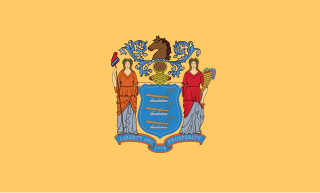
New Jersey is a state in the Mid-Atlantic and Northeastern regions of the United States. It is bordered on the north and east by the state of New York; on the east, southeast, and south by the Atlantic Ocean; on the west by the Delaware River and Pennsylvania; and on the southwest by Delaware Bay and the state of Delaware. At 7,354 square miles (19,050 km2), New Jersey is the fifth-smallest state in land area; but with close to 9.3 million residents, it ranks 11th in population and first in population density. The state capital is Trenton, and the most populous city is Newark. With the exception of Warren County, all of the state's 21 counties lie within the combined statistical areas of New York City or Philadelphia.
The Winton Motor Carriage Company (ad pictured), one of the first American car companies, sold its first unit.

The Winton Motor Carriage Company was a pioneer United States automobile manufacturer based in Cleveland, Ohio. Winton was one of the first American companies to sell a motor car. In 1912 Winton became one of the first American manufacturers of diesel engines.
German physician Robert Koch announced the discovery of Mycobacterium tuberculosis, the pathogen that causes tuberculosis.

Heinrich Hermann Robert Koch was a German physician and microbiologist. As the discoverer of the specific causative agents of deadly infectious diseases including tuberculosis, cholera, and anthrax, he is regarded as one of the main founders of modern bacteriology. As such he is popularly nicknamed the father of microbiology, and as the father of medical bacteriology. His discovery of the anthrax bacterium in 1876 is considered as the birth of modern bacteriology. His discoveries directly provided proofs for the germ theory of diseases, and the scientific basis of public health.

Mycobacterium tuberculosis is a species of pathogenic bacteria in the family Mycobacteriaceae and the causative agent of tuberculosis. First discovered in 1882 by Robert Koch, M. tuberculosis has an unusual, waxy coating on its cell surface primarily due to the presence of mycolic acid. This coating makes the cells impervious to Gram staining, and as a result, M. tuberculosis can appear weakly Gram-positive. Acid-fast stains such as Ziehl–Neelsen, or fluorescent stains such as auramine are used instead to identify M. tuberculosis with a microscope. The physiology of M. tuberculosis is highly aerobic and requires high levels of oxygen. Primarily a pathogen of the mammalian respiratory system, it infects the lungs. The most frequently used diagnostic methods for tuberculosis are the tuberculin skin test, acid-fast stain, culture, and polymerase chain reaction.
In biology, a pathogen in the oldest and broadest sense, is any organism or agent that can produce disease. A pathogen may also be referred to as an infectious agent, or simply a germ.

Tuberculosis (TB) is an infectious disease usually caused by Mycobacterium tuberculosis (MTB) bacteria. Tuberculosis generally affects the lungs, but it can also affect other parts of the body. Most infections show no symptoms, in which case it is known as latent tuberculosis. Around 10% of latent infections progress to active disease which, if left untreated, kill about half of those affected. Typical symptoms of active TB are chronic cough with blood-containing mucus, fever, night sweats, and weight loss. It was historically referred to as consumption due to the weight loss associated with the disease. Infection of other organs can cause a wide range of symptoms.
Robert Koch announces the discovery of Mycobacterium tuberculosis, the bacterium responsible for tuberculosis.

Heinrich Hermann Robert Koch was a German physician and microbiologist. As the discoverer of the specific causative agents of deadly infectious diseases including tuberculosis, cholera, and anthrax, he is regarded as one of the main founders of modern bacteriology. As such he is popularly nicknamed the father of microbiology, and as the father of medical bacteriology. His discovery of the anthrax bacterium in 1876 is considered as the birth of modern bacteriology. His discoveries directly provided proofs for the germ theory of diseases, and the scientific basis of public health.

Mycobacterium tuberculosis is a species of pathogenic bacteria in the family Mycobacteriaceae and the causative agent of tuberculosis. First discovered in 1882 by Robert Koch, M. tuberculosis has an unusual, waxy coating on its cell surface primarily due to the presence of mycolic acid. This coating makes the cells impervious to Gram staining, and as a result, M. tuberculosis can appear weakly Gram-positive. Acid-fast stains such as Ziehl–Neelsen, or fluorescent stains such as auramine are used instead to identify M. tuberculosis with a microscope. The physiology of M. tuberculosis is highly aerobic and requires high levels of oxygen. Primarily a pathogen of the mammalian respiratory system, it infects the lungs. The most frequently used diagnostic methods for tuberculosis are the tuberculin skin test, acid-fast stain, culture, and polymerase chain reaction.

Bacteria are ubiquitous, mostly free-living organisms often consisting of one biological cell. They constitute a large domain of prokaryotic microorganisms. Typically a few micrometres in length, bacteria were among the first life forms to appear on Earth, and are present in most of its habitats. Bacteria inhabit soil, water, acidic hot springs, radioactive waste, and the deep biosphere of Earth's crust. Bacteria are vital in many stages of the nutrient cycle by recycling nutrients such as the fixation of nitrogen from the atmosphere. The nutrient cycle includes the decomposition of dead bodies; bacteria are responsible for the putrefaction stage in this process. In the biological communities surrounding hydrothermal vents and cold seeps, extremophile bacteria provide the nutrients needed to sustain life by converting dissolved compounds, such as hydrogen sulphide and methane, to energy. Bacteria also live in symbiotic and parasitic relationships with plants and animals. Most bacteria have not been characterised and there are many species that cannot be grown in the laboratory. The study of bacteria is known as bacteriology, a branch of microbiology.

Tuberculosis (TB) is an infectious disease usually caused by Mycobacterium tuberculosis (MTB) bacteria. Tuberculosis generally affects the lungs, but it can also affect other parts of the body. Most infections show no symptoms, in which case it is known as latent tuberculosis. Around 10% of latent infections progress to active disease which, if left untreated, kill about half of those affected. Typical symptoms of active TB are chronic cough with blood-containing mucus, fever, night sweats, and weight loss. It was historically referred to as consumption due to the weight loss associated with the disease. Infection of other organs can cause a wide range of symptoms.
The British frigate HMS Eurydice sinks, killing more than 300.
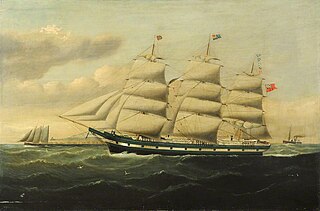
HMS Eurydice was a 26-gun Royal Navy corvette which was the victim of one of Britain's worst peacetime naval disasters when she sank in 1878.
New Zealand Wars: Māori leader Tītokowaru's conflict ended with the last of his forces surrendering to the New Zealand colonial government.

The New Zealand Wars took place from 1845 to 1872 between the New Zealand colonial government and allied Māori on one side and Māori and Māori-allied settlers on the other. They were previously commonly referred to as the Land Wars or the Māori Wars, while Māori language names for the conflicts included Ngā pakanga o Aotearoa and Te riri Pākehā. Historian James Belich popularised the name "New Zealand Wars" in the 1980s, although according to Vincent O'Malley, the term was first used by historian James Cowan in the 1920s.

The Māori are the indigenous Polynesian people of mainland New Zealand. Māori originated with settlers from East Polynesia, who arrived in New Zealand in several waves of canoe voyages between roughly 1320 and 1350. Over several centuries in isolation, these settlers developed their own distinctive culture, whose language, mythology, crafts, and performing arts evolved independently from those of other eastern Polynesian cultures. Some early Māori moved to the Chatham Islands, where their descendants became New Zealand's other indigenous Polynesian ethnic group, the Moriori.

Riwha Tītokowaru was a Māori leader in the Taranaki region of New Zealand.

Tītokowaru's War was a military conflict that took place in the South Taranaki region of New Zealand's North Island from June 1868 to March 1869 between the Ngāti Ruanui and Ngāruahine Māori tribes and the New Zealand Government. The conflict, near the conclusion of the New Zealand wars, was a revival of hostilities of the Second Taranaki War as Riwha Tītokowaru, chief of Ngaruahine, responded to the continued surveying and settlement of confiscated land with well-planned and effective attacks on settlers and government troops in an effort to block the occupation of Māori land.
The last of Titokowaru's forces surrendered to the New Zealand government, ending his uprising.

Riwha Tītokowaru was a Māori leader in the Taranaki region of New Zealand.

The Colony of New Zealand was a Crown colony of the United Kingdom of Great Britain and Ireland that encompassed the islands of New Zealand from 1841 to 1907. The power of the British government was vested in the Governor of New Zealand, as the representative of their monarch. The colony had three capitals: Old Russell in 1841; Auckland from 1841 to 1865; and Wellington, which was the capital until the colony's reorganisation into a Dominion, and continues to be the capital of New Zealand till the present day.

Tītokowaru's War was a military conflict that took place in the South Taranaki region of New Zealand's North Island from June 1868 to March 1869 between the Ngāti Ruanui and Ngāruahine Māori tribes and the New Zealand Government. The conflict, near the conclusion of the New Zealand wars, was a revival of hostilities of the Second Taranaki War as Riwha Tītokowaru, chief of Ngaruahine, responded to the continued surveying and settlement of confiscated land with well-planned and effective attacks on settlers and government troops in an effort to block the occupation of Māori land.
Japanese chief minister Ii Naosuke was assassinated (depicted) by rōnin samurai upset with his role in opening Japan to foreign powers.

Ii Naosuke was daimyō of Hikone (1850–1860) and also Tairō of the Tokugawa shogunate, Japan, a position he held from April 23, 1858, until his death, assassinated in the Sakuradamon Incident on March 24, 1860. He is most famous for signing the Harris Treaty with the United States, granting access to ports for trade to American merchants and seamen and extraterritoriality to American citizens. He was also an enthusiastic and accomplished practitioner of the Japanese tea ceremony, in the Sekishūryū style, and his writings include at least two works on the tea ceremony.
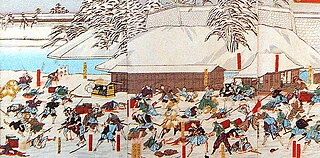
The Sakuradamon Incident was the assassination of Ii Naosuke, Chief Minister (Tairō) of the Tokugawa Shogunate, on March 24, 1860 by rōnin samurai of the Mito Domain and Satsuma Domain, outside the Sakurada Gate of Edo Castle.

A rōnin was a samurai without a lord or master during the feudal period of Japan (1185–1868). A samurai became masterless upon the death of his master or after the loss of his master's favor or privilege.
Sakuradamon Incident: Japanese Chief Minister (Tairō) Ii Naosuke is assassinated by rōnin samurai outside the Sakurada Gate of Edo Castle.

The Sakuradamon Incident was the assassination of Ii Naosuke, Chief Minister (Tairō) of the Tokugawa Shogunate, on March 24, 1860 by rōnin samurai of the Mito Domain and Satsuma Domain, outside the Sakurada Gate of Edo Castle.
Tairō was a high-ranking official position in the Tokugawa shogunate government of Japan, roughly comparable to the office of prime minister. The tairō presided over the governing rōjū council in the event of an emergency. A tairō was nominated from among the fudai daimyōs, who worked closely with the Tokugawa traditionally. Generally, the office holder was the shogunate's chief policy maker, and provided Japan with a capable temporary leader in the absence of a shōgun, or in the event that the shōgun was incapacitated.

Ii Naosuke was daimyō of Hikone (1850–1860) and also Tairō of the Tokugawa shogunate, Japan, a position he held from April 23, 1858, until his death, assassinated in the Sakuradamon Incident on March 24, 1860. He is most famous for signing the Harris Treaty with the United States, granting access to ports for trade to American merchants and seamen and extraterritoriality to American citizens. He was also an enthusiastic and accomplished practitioner of the Japanese tea ceremony, in the Sekishūryū style, and his writings include at least two works on the tea ceremony.

A rōnin was a samurai without a lord or master during the feudal period of Japan (1185–1868). A samurai became masterless upon the death of his master or after the loss of his master's favor or privilege.

Samurai were the hereditary military nobility and officer caste of medieval and early-modern Japan from the late 12th century until their abolition in 1876. They were the well-paid retainers of the daimyo. They had high prestige and special privileges such as wearing two swords and Kiri-sute gomen. They cultivated the bushido codes of martial virtues, indifference to pain, and unflinching loyalty, engaging in many local battles.

Sakurada Gate is a gate at Tokyo Imperial Palace, in Tokyo, Japan. It was the location of the Sakuradamon Incident in 1860.

Edo Castle is a flatland castle that was built in 1457 by Ōta Dōkan in Edo, Toshima District, Musashi Province. In modern times it is part of the Tokyo Imperial Palace in Chiyoda, Tokyo and is therefore also known as Chiyoda Castle . Tokugawa Ieyasu established the Tokugawa shogunate there, and it was the residence of the shōgun and the headquarters of the military government during the Edo period (1603-1867) in Japanese history. After the resignation of the shōgun and the Meiji Restoration, it became the Tokyo Imperial Palace. Some moats, walls and ramparts of the castle survive to this day. However, the grounds were more extensive during the Edo period, with Tokyo Station and the Marunouchi section of the city lying within the outermost moat. It also encompassed Kitanomaru Park, the Nippon Budokan Hall and other current landmarks of the surrounding area.
President José Gregorio Monagas abolishes slavery in Venezuela.
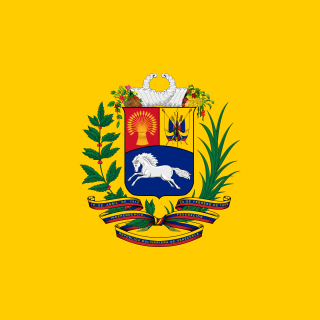
The president of Venezuela, officially known as the President of the Bolivarian Republic of Venezuela, is the head of state and head of government in Venezuela. The president leads the National Executive of the Venezuelan government and is the commander-in-chief of the National Bolivarian Armed Forces. Presidential terms were set at six years with the adoption of the 1999 Constitution of Venezuela, and presidential term limits were removed in 2009.
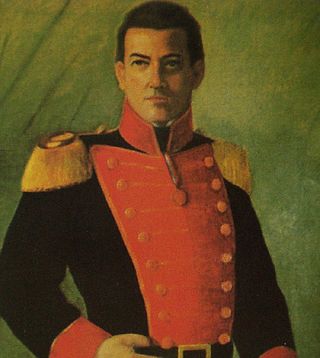
José Gregorio Monagas was the president of Venezuela 1851–1855 and brother of José Tadeo Monagas.
In Hiram, Ohio, a group of men beat and tar and feather Mormon leader Joseph Smith.

Hiram is a village in Portage County, Ohio, United States. It was formed from portions of Hiram Township in the Connecticut Western Reserve. The population was 996 at the 2020 census.

Tarring and feathering is a form of public torture and punishment used to enforce unofficial justice or revenge. It was used in feudal Europe and its colonies in the early modern period, as well as the early American frontier, mostly as a type of mob vengeance.

Mormons are a religious and cultural group related to Mormonism, the principal branch of the Latter Day Saint movement started by Joseph Smith in upstate New York during the 1820s. After Smith's death in 1844, the movement split into several groups following different leaders; the majority followed Brigham Young, while smaller groups followed Joseph Smith III, Sidney Rigdon, and James Strang. Most of these smaller groups eventually merged into the Community of Christ, and the term Mormon typically refers to members of the Church of Jesus Christ of Latter-day Saints, as today, this branch is far larger than all the others combined. People who identify as Mormons may also be independently religious, secular, and non-practicing or belong to other denominations. Since 2018, the LDS Church has requested that its members be referred to as "Latter-day Saints".

Joseph Smith Jr. was an American religious leader and founder of Mormonism and the Latter Day Saint movement. When he was 24, Smith published the Book of Mormon. By the time of his death, 14 years later, he had attracted tens of thousands of followers and founded a religion that continues to the present with millions of global adherents.
The Parliament of the United Kingdom passes the Roman Catholic Relief Act 1829, allowing Catholics to serve in Parliament.

The Parliament of the United Kingdom is the supreme legislative body of the United Kingdom, the Crown Dependencies and the British Overseas Territories. It alone possesses legislative supremacy and thereby ultimate power over all other political bodies in the UK and the overseas territories. Parliament is bicameral but has three parts, consisting of the sovereign (King-in-Parliament), the House of Lords, and the House of Commons. Both houses of Parliament meet in separate chambers at the Palace of Westminster in the City of Westminster, one of the inner boroughs of the capital city, London.
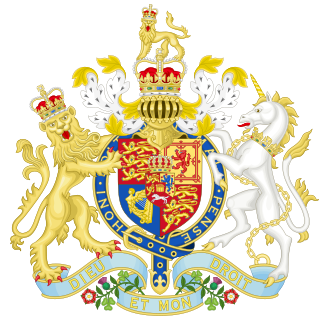
The Catholic Relief Act 1829, also known as the Catholic Emancipation Act 1829, was passed by the Parliament of the United Kingdom in 1829. It was the culmination of the process of Catholic emancipation throughout the United Kingdom of Great Britain and Ireland.
In Kraków, Tadeusz Kościuszko announces a general uprising against Imperial Russia and the Kingdom of Prussia, and assumes the powers of the Commander in Chief of all of the Polish forces.

Kraków, or Cracow, is the second-largest and one of the oldest cities in Poland. Situated on the Vistula River in Lesser Poland Voivodeship, the city dates back to the seventh century. Kraków was the official capital of Poland until 1596 and has traditionally been one of the leading centres of Polish academic, economic, cultural and artistic life. Cited as one of Europe's most beautiful cities, its Old Town with Wawel Royal Castle was declared a UNESCO World Heritage Site in 1978, one of the first 12 sites granted the status.

Andrzej Tadeusz Bonawentura Kościuszko was a Polish military engineer, statesman, and military leader who became a national hero in Poland, Lithuania, Belarus, France and the United States. He fought in the Polish–Lithuanian Commonwealth's struggles against Russia and Prussia, and on the US side in the American Revolutionary War. As Supreme Commander of the Polish National Armed Forces, he led the 1794 Kościuszko Uprising.

Kościuszko's proclamation refers to a speech given by Tadeusz Kościuszko in Kraków on March 24, 1794. The speech is considered the starting point of the Kościuszko Uprising against the forces of the Russian Empire that were occupying Poland.
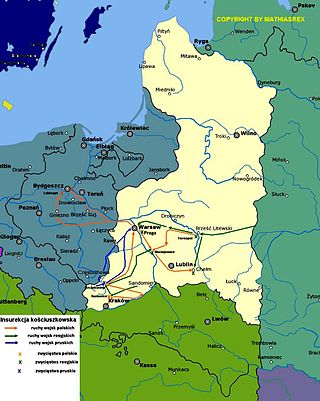
The Kościuszko Uprising, also known as the Polish Uprising of 1794 and the Second Polish War, was an uprising against the Russian Empire and the Kingdom of Prussia led by Tadeusz Kościuszko in the Polish–Lithuanian Commonwealth and the Prussian partition in 1794. It was a failed attempt to liberate the Polish–Lithuanian Commonwealth from external influence after the Second Partition of Poland (1793) and the creation of the Targowica Confederation.

A commander-in-chief or supreme commander is the person who exercises supreme command and control over an armed force or a military branch. As a technical term, it refers to military competencies that reside in a country's executive leadership, a head of state or a head of government.

The Armed Forces of the Republic of Poland are the national armed forces of the Republic of Poland. The name has been used since the early 19th century, but can also be applied to earlier periods.
Great Britain passes the Quartering Act, which requires the Thirteen Colonies to house British troops.

The Kingdom of Great Britain was a sovereign country in Western Europe from 1 May 1707 to the end of 31 December 1800. The state was created by the 1706 Treaty of Union and ratified by the Acts of Union 1707, which united the kingdoms of England and Scotland to form a single kingdom encompassing the whole island of Great Britain and its outlying islands, with the exception of the Isle of Man and the Channel Islands. The unitary state was governed by a single parliament at the Palace of Westminster, but distinct legal systems – English law and Scots law – remained in use.

The Quartering Acts were two or more Acts of British Parliament requiring local governments of Britain's North American colonies to provide the British soldiers with housing and food. Each of the Quartering Acts was an amendment to the Mutiny Act and required annual renewal by Parliament. They were originally intended as a response to issues that arose during the French and Indian War and soon became a source of tensions between the inhabitants of the Thirteen Colonies and the government in London. These tensions would later lead toward the American Revolution.

The Thirteen Colonies, also known as the Thirteen British Colonies, the Thirteen American Colonies, or later as the United Colonies, were a group of British colonies on the Atlantic coast of North America. Founded in the 17th and 18th centuries, they began fighting the American Revolutionary War in April 1775 and formed the United States of America by declaring full independence in July 1776. Just prior to declaring independence, the Thirteen Colonies in their traditional groupings were: New England ; Middle ; Southern. The Thirteen Colonies came to have very similar political, constitutional, and legal systems, dominated by Protestant English-speakers. The first of these colonies was Virginia Colony in 1607, a Southern colony. While all these colonies needed to become economically viable, the founding of the New England colonies, as well as the colonies of Maryland and Pennsylvania, were substantially motivated by their founders' concerns related to the practice of religion. The other colonies were founded for business and economic expansion. The Middle Colonies were established on an earlier Dutch colony, New Netherland. All the Thirteen Colonies were part of Britain's possessions in the New World, which also included territory in Canada, Florida, and the Caribbean.
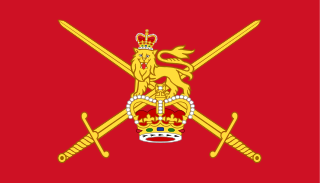
The British Army during the American Revolutionary War served for eight years in campaigns fought around the globe. Defeat at the Siege of Yorktown to a combined Franco-US force ultimately led to the loss of the Thirteen Colonies in eastern North America, and the concluding Treaty of Paris deprived Britain of many of the gains achieved in the Seven Years' War. However several victories elsewhere meant that much of the British Empire remained intact.
Johann Sebastian Bach dedicated six concertos to Margrave Christian Ludwig of Brandenburg-Schwedt, now commonly called the Brandenburg Concertos, BWV 1046–1051.

Johann Sebastian Bach was a German composer and musician of the late Baroque period. He is known for his orchestral music such as the Brandenburg Concertos; instrumental compositions such as the Cello Suites; keyboard works such as the Goldberg Variations and The Well-Tempered Clavier; organ works such as the Schubler Chorales and the Toccata and Fugue in D minor; and vocal music such as the St Matthew Passion and the Mass in B minor. Since the 19th-century Bach revival he has been generally regarded as one of the greatest composers in the history of Western music.
A concerto is, from the late Baroque era, mostly understood as an instrumental composition, written for one or more soloists accompanied by an orchestra or other ensemble. The typical three-movement structure, a slow movement preceded and followed by fast movements, became a standard from the early 18th century.

Christian Ludwig, a member of the House of Hohenzollern, was a Margrave of Brandenburg-Schwedt and a military officer of the Prussian Army. The margravial title was given to princes of the Prussian Royal House and did not express a territorial status. He is best known as the recipient of Johann Sebastian Bach's Brandenburg concertos.

The Brandenburg Concertos by Johann Sebastian Bach, are a collection of six instrumental works presented by Bach to Christian Ludwig, Margrave of Brandenburg-Schwedt, in 1721. The original French title is Six Concerts à plusieurs instruments, meaning "Six Concertos for several instruments". Some of them feature several solo instruments in combination. They are widely regarded as some of the best orchestral compositions of the Baroque era.
Count Frederick of Hesse-Kassel is elected King of Sweden by the Riksdag of the Estates, after his consort Ulrika Eleonora abdicated the throne on 29 February.

Frederick I was prince consort of Sweden from 1718 to 1720, and King of Sweden from 1720 until his death and also Landgrave of Hesse-Kassel from 1730. He ascended the throne following the death of his brother-in-law absolutist Charles XII in the Great Northern War, and the abdication of his wife, Charles's sister and successor Ulrika Eleonora, after she had to relinquish most powers to the Riksdag of the Estates and thus chose to abdicate. His powerless reign and lack of legitimate heirs of his own saw his family's elimination from the line of succession after the parliamentary government dominated by pro-revanchist Hat Party politicians ventured into a war with Russia, which ended in defeat and the Russian tsarina Elizabeth getting Adolf Frederick of Holstein-Gottorp instated following the death of the king.

The Swedish Empire was a European great power that exercised territorial control over much of the Baltic region during the 17th and early 18th centuries. The beginning of the empire is usually taken as the reign of Gustavus Adolphus, who ascended the throne in 1611, and its end as the loss of territories in 1721 following the Great Northern War.
Riksdag of the Estates was the name used for the Estates of Sweden when they were assembled. Until its dissolution in 1866, the institution was the highest authority in Sweden next to the King. It was a Diet made up of the Four Estates, which historically were the lines of division in Swedish society:Nobility Clergy Burghers Peasants

Ulrika Eleonora or Ulrica Eleanor, known as Ulrika Eleonora the Younger, was Queen of Sweden, reigning in her own right from 5 December 1718 until her abdication on 29 February 1720 in favour of her husband King Frederick, and then as his consort until her death.
The Province of Carolina is granted by charter to eight Lords Proprietor in reward for their assistance in restoring Charles II of England to the throne.

Province of Carolina was a province of England (1663–1707) and Great Britain (1707–1712) that existed in North America and the Caribbean from 1663 until partitioned into North and South on January 24, 1712. It is part of present-day Alabama, Georgia, Mississippi, North Carolina, South Carolina, Tennessee, and The Bahamas.
A lord proprietor is a person granted a royal charter for the establishment and government of an English colony in the 17th century. The plural of the term is "lords proprietors" or "lords proprietary".

The Restoration of the Stuart monarchy in the kingdoms of England, Scotland and Ireland took place in 1660 when King Charles II returned from exile in continental Europe. The preceding period of the Protectorate and the civil wars came to be known as the Interregnum (1649–1660).

Charles II was King of Scotland from 1649 until 1651, and King of England, Scotland and Ireland from the 1660 Restoration of the monarchy until his death in 1685.
James VI of Scotland succeeded to the thrones of England and Ireland as James I, uniting the realms under a single monarch.

James VI and I was King of Scotland as James VI from 24 July 1567 and King of England and Ireland as James I from the union of the Scottish and English crowns on 24 March 1603 until his death in 1625. The kingdoms of Scotland and England were individual sovereign states, with their own parliaments, judiciaries, and laws, though both were ruled by James in personal union.

The Union of the Crowns was the accession of James VI of Scotland to the throne of the Kingdom of England as James I and the practical unification of some functions of the two separate realms under a single individual on 24 March 1603. Whilst a misnomer, therefore, what is popularly known as "The Union of the Crowns" followed the death of James's cousin, Elizabeth I of England, the last monarch of the Tudor dynasty.
James VI of Scotland is proclaimed King James I of England and Ireland, upon the death of Elizabeth I.

James VI and I was King of Scotland as James VI from 24 July 1567 and King of England and Ireland as James I from the union of the Scottish and English crowns on 24 March 1603 until his death in 1625. The kingdoms of Scotland and England were individual sovereign states, with their own parliaments, judiciaries, and laws, though both were ruled by James in personal union.

The Kingdom of England was a sovereign state on the island of Great Britain from 12 July 927, when it emerged from various Anglo-Saxon kingdoms, until 1 May 1707, when it united with Scotland to form the Kingdom of Great Britain.
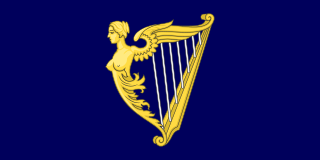
The Kingdom of Ireland was a monarchy on the island of Ireland that was a client state of England and then of Great Britain. It existed from 1542 until 1801. It was ruled by the monarchs of England and then of Great Britain, and administered from Dublin Castle by a viceroy appointed by the English king: the Lord Deputy of Ireland. It had a parliament, composed of Anglo-Irish and native nobles. From 1661 until 1801, the administration controlled an army. A Protestant state church, the Church of Ireland, was established. Although styled a kingdom, for most of its history it was, de facto, an English dependency. This status was enshrined in Poynings' Law and in the Declaratory Act of 1719.

Elizabeth I was Queen of England and Ireland from 17 November 1558 until her death in 1603. Elizabeth was the last of the five House of Tudor monarchs and is sometimes referred to as the "Virgin Queen".
Tokugawa Ieyasu is granted the title of shōgun from Emperor Go-Yōzei, and establishes the Tokugawa shogunate in Edo, Japan.
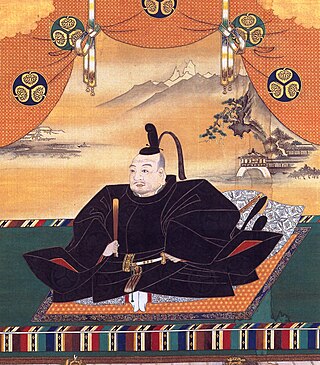
Tokugawa Ieyasu was the founder and first shōgun of the Tokugawa Shogunate of Japan, which ruled Japan from 1603 until the Meiji Restoration in 1868. He was one of the three "Great Unifiers" of Japan, along with his former lord Oda Nobunaga and fellow Oda subordinate Toyotomi Hideyoshi. The son of a minor daimyo, Ieyasu once lived as a hostage under daimyo Imagawa Yoshimoto on behalf of his father. He later succeeded as daimyo after his father's death, serving as a vassal and general of the Oda clan, and building up his strength under Oda Nobunaga.

Shogun , officially Sei-i Taishōgun , was the title of the military dictators of Japan during most of the period spanning from 1185 to 1868. Nominally appointed by the Emperor, shoguns were usually the de facto rulers of the country, though during part of the Kamakura period, shoguns were themselves figureheads. The office of shogun was in practice hereditary, though over the course of the history of Japan several different clans held the position. The title was originally held by military commanders during Heian period in the eighth and ninth centuries. When Minamoto no Yoritomo gained political ascendency over Japan in 1185, the title was revived to regularize his position, making him the first shogun in the usually understood sense.
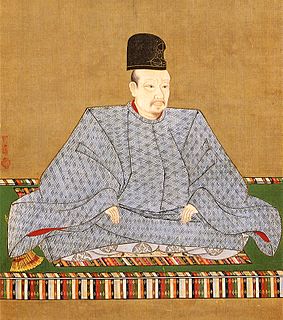
Emperor Go-Yōzei was the 107th Emperor of Japan, according to the traditional order of succession. Go-Yōzei's reign spanned the years 1586 through to his abdication in 1611, corresponding to the transition between the Azuchi–Momoyama period and the Edo period.

The Tokugawa shogunate, also known as the Edo shogunate , was the military government of Japan during the Edo period from 1603 to 1868.

Edo, also romanized as Jedo, Yedo or Yeddo, is the former name of Tokyo.
Anglo-Scottish Wars: England and Scotland signed the Treaty of Boulogne, ending hostilities between the two nations in the Rough Wooing.

The Anglo-Scottish Wars comprise the various battles which continued to be fought between the Kingdom of England and the Kingdom of Scotland from the time of the Wars of Independence in the early 14th century through to the latter years of the 16th century.

The Rough Wooing, also known as the Eight Years' War, was part of the Anglo-Scottish Wars of the 16th century. Following its break with the Roman Catholic Church, England attacked Scotland, partly to break the Auld Alliance and prevent Scotland being used as a springboard for future invasion by France, partly to weaken Scotland, and partly to force the Scottish Parliament to confirm the existing marriage alliance between Mary, Queen of Scots, and the English heir apparent Edward, son of King Henry VIII, under the terms of the Treaty of Greenwich of July 1543. An invasion of France was also contemplated. Henry declared war in an attempt to force the Scottish Parliament to agree to the planned marriage between Edward, who was six years old at the start of the war, and the infant queen, thereby creating a new alliance between Scotland and England. Upon Edward's accession to the throne in 1547 at the age of nine, the war continued for a time under the direction of the Duke of Somerset, before Somerset's removal from power in 1549 and replacement by the Duke of Northumberland, who wished for a less costly foreign policy than his predecessor. It was the last major conflict between Scotland and England before the Union of the Crowns in 1603.
Turco-Mongol emperor Timur sacks Damascus.[full citation needed]
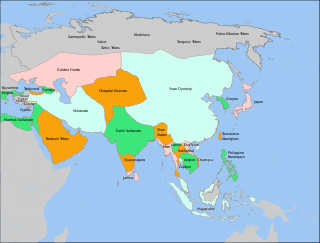
The Turco-Mongol or Turko-Mongol tradition was an ethnocultural synthesis that arose in Asia during the 14th century, among the ruling elites of the Golden Horde and the Chagatai Khanate. The ruling Mongol elites of these Khanates eventually assimilated into the Turkic populations that they conquered and ruled over, thus becoming known as Turco-Mongols. These elites gradually adopted Islam as well as Turkic languages, while retaining Mongol political and legal institutions.
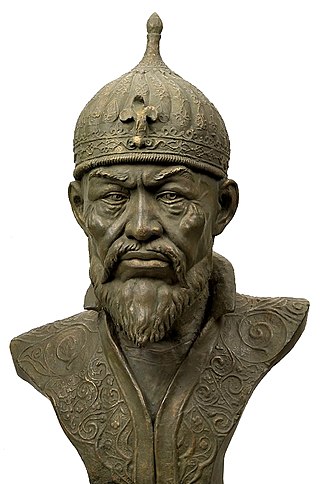
Timur, later Timūr Gurkānī, was a Turco-Mongol conqueror who founded the Timurid Empire in and around modern-day Afghanistan, Iran, and Central Asia, becoming the first ruler of the Timurid dynasty. An undefeated commander, he is widely regarded as one of the greatest military leaders and tacticians in history, as well as one of the most brutal. Timur is also considered a great patron of art and architecture as he interacted with intellectuals such as Ibn Khaldun, Hafez, and Hafiz-i Abru and his reign introduced the Timurid Renaissance.

Damascus is the capital of Syria, the oldest capital in the world and, according to some, the fourth holiest city in Islam. Colloquially known in Syria as aš-Šām and titled the "City of Jasmine", Damascus is a major cultural center of the Levant and the Arab world. The city had an estimated population of 2,503,000 in 2022.
English victory over a Franco-Castilian-Flemish fleet in the Battle of Margate off the coast of Margate.

The Kingdom of England was a sovereign state on the island of Great Britain from 12 July 927, when it emerged from various Anglo-Saxon kingdoms, until 1 May 1707, when it united with Scotland to form the Kingdom of Great Britain.

The Kingdom of France is the historiographical name or umbrella term given to various political entities of France in the medieval and early modern period. It was one of the most powerful states in Europe since the High Middle Ages. It was also an early colonial power, with possessions around the world.

The Crown of Castile was a medieval polity in the Iberian Peninsula that formed in 1230 as a result of the third and definitive union of the crowns and, some decades later, the parliaments of the kingdoms of Castile and León upon the accession of the then Castilian king, Ferdinand III, to the vacant Leonese throne. It continued to exist as a separate entity after the personal union in 1469 of the crowns of Castile and Aragon with the marriage of the Catholic Monarchs up to the promulgation of the Nueva Planta decrees by Philip V in 1715.
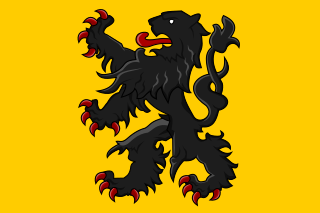
The County of Flanders was a historic territory in the Low Countries.

A fleet or naval fleet is a large formation of warships – the largest formation in any navy – controlled by one leader. A fleet at sea is the direct equivalent of an army on land.
The Battle of Margate, also known as the Battle of Cadzand, was a naval battle that took place 24–25 March 1387 during the Caroline War phase of the Hundred Years' War between an English fleet and a Franco-Castilian-Flemish wine fleet.

Margate is a seaside town on the north coast of Kent in south-east England. The town is estimated to be 1.5 miles long, 16 miles north-east of Canterbury and includes Cliftonville, Garlinge, Palm Bay and Westbrook.
King Richard I of England is wounded by a crossbow bolt while fighting in France, leading to his death on April 6.

Richard I was King of England from 1189 until his death in 1199. He also ruled as Duke of Normandy, Aquitaine and Gascony, Lord of Cyprus, and Count of Poitiers, Anjou, Maine, and Nantes, and was overlord of Brittany at various times during the same period. He was the third of five sons of King Henry II of England and Eleanor of Aquitaine and seemed unlikely to become king, but all his brothers except the youngest, John, predeceased their father. Richard is known as Richard Cœur de Lion or Richard the Lionheart because of his reputation as a great military leader and warrior. The troubadour Bertran de Born also called him Richard Oc-e-Non, possibly from a reputation for terseness.

France, officially the French Republic, is a transcontinental country predominantly located in Western Europe and spanning overseas regions and territories in the Americas and the Atlantic, Pacific and Indian Oceans. Its metropolitan area extends from the Rhine to the Atlantic Ocean and from the Mediterranean Sea to the English Channel and the North Sea; overseas territories include French Guiana in South America, Saint Pierre and Miquelon in the North Atlantic, the French West Indies, and many islands in Oceania and the Indian Ocean. Due to its several coastal territories, France has the largest exclusive economic zone in the world. France borders Belgium, Luxembourg, Germany, Switzerland, Monaco, Italy, Andorra, and Spain in continental Europe, as well as the Netherlands, Suriname, and Brazil in the Americas via its overseas territories in French Guiana and Saint Martin. Its eighteen integral regions span a combined area of 643,801 km2 (248,573 sq mi) and contain close to 68 million people. France is a unitary semi-presidential republic with its capital in Paris, the country's largest city and main cultural and commercial centre; other major urban areas include Marseille, Lyon, Toulouse, Lille, Bordeaux, and Nice.
Dagny Carlsson, Swedish blogger and influencer (b. 1912) deaths
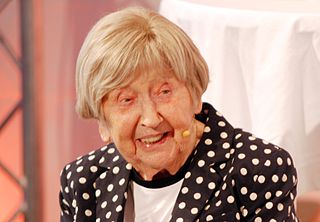
Dagny Valborg Carlsson was a Swedish blogger and influencer.
Jessica Walter, American actress and voice artist (b. 1941) deaths
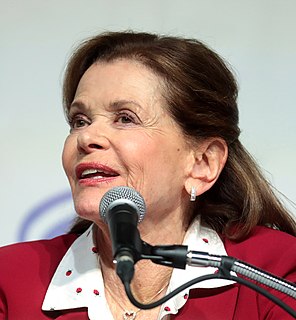
Jessica Walter was an American actress who appeared in over 170 film, stage and television productions. In film, she was best known for her role as a psychotic and obsessed fan of a local disc jockey in the 1971 Clint Eastwood film, Play Misty for Me. On television, she was most recently known for her role of Lucille Bluth on the sitcom Arrested Development, and providing the voice of Malory Archer on the FX animated series Archer (2009–21). Walter received various awards over the course of her television career including a Primetime Emmy Award for Amy Prentiss (1975). She also received two Golden Globe Award nominations and three Screen Actors Guild Award nominations. For her starring role opposite Eastwood in Play Misty for Me, Walter received a Golden Globe nomination for Best Actress in a Motion Picture – Drama.
Albert Uderzo, French comic book artist (b. 1927) deaths
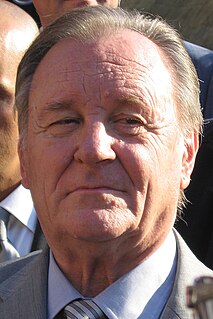
Alberto Aleandro Uderzo, better known as Albert Uderzo, was a French comic book artist and scriptwriter. He is best known as the co-creator and illustrator of the Astérix series in collaboration with René Goscinny. He also drew other comics such as Oumpah-pah, again with Goscinny. Uderzo retired in September 2011.
Manu Dibango, Cameroonian musician and songwriter (b. 1933) deaths

Emmanuel N'Djoké "Manu" Dibango was a Cameroonian musician and songwriter who played saxophone and vibraphone. He developed a musical style fusing jazz, funk, and traditional Cameroonian music. His father was a member of the Yabassi ethnic group, while his mother was a Duala. He was best known for his 1972 single "Soul Makossa". He died from COVID-19 on 24 March 2020.

Cameroon, officially the Republic of Cameroon, is a country in west-central Africa. It is bordered by Nigeria to the west and north; Chad to the northeast; the Central African Republic to the east; and Equatorial Guinea, Gabon and the Republic of the Congo to the south. Its coastline lies on the Bight of Biafra, part of the Gulf of Guinea and the Atlantic Ocean. Due to its strategic position at the crossroads between West Africa and Central Africa, it has been categorized as being in both camps. Its nearly 27 million people speak 250 native languages.
Joseph Pilato, American film and voice actor (b. 1949) deaths

Joseph Pilato was an American film and voice actor. He was perhaps best known for his performance as Captain Rhodes in the 1985 film Day of the Dead.
Lys Assia, Swiss singer and First Winner of the Eurovision Song Contest (b. 1924) deaths

Lys Assia was a Swiss singer who won the first Eurovision Song Contest in 1956. Assia was born in Rupperswil, Aargau, and began her stage career as a dancer, but changed to singing in 1940 after successfully standing in for a female singer.
The Eurovision Song Contest, sometimes abbreviated to ESC and often known simply as Eurovision, is an international songwriting competition organised annually by the European Broadcasting Union (EBU), featuring participants representing primarily European countries. Each participating country submits an original song to be performed on live television and radio, transmitted to national broadcasters via the EBU's Eurovision and Euroradio networks, with competing countries then casting votes for the other countries' songs to determine a winner.
Rim Banna, Palestinian singer, composer, arranger and activist (b. 1966) deaths

Rim Banna was a Palestinian singer and composer who was most known for her modern interpretations of traditional Palestinian songs and poetry. Banna was born in Nazareth, where she graduated from Nazareth Baptist School. She lived in Nazareth with her three children. She met her husband, Ukrainian guitarist Leonid Alexeyenko, while studying music together at the Higher Music Conservatory in Moscow and they married in 2001, and got divorced in 2010.

A composer is a person who writes music. The term is especially used to indicate composers of Western classical music, or those who are composers by occupation. Many composers are, or were, also skilled performers of music.

In music, an arrangement is a musical adaptation of an existing composition. Differences from the original composition may include reharmonization, melodic paraphrasing, orchestration, or formal development. Arranging differs from orchestration in that the latter process is limited to the assignment of notes to instruments for performance by an orchestra, concert band, or other musical ensemble. Arranging "involves adding compositional techniques, such as new thematic material for introductions, transitions, or modulations, and endings. Arranging is the art of giving an existing melody musical variety". In jazz, a memorized (unwritten) arrangement of a new or pre-existing composition is known as a head arrangement.
Johan Cruyff, Dutch footballer (b. 1947) deaths

Hendrik Johannes Cruijff was a Dutch professional football player and manager. As a player, he won the Ballon d'Or three times, in 1971, 1973 and 1974. Cruyff was a proponent of the football philosophy known as Total Football explored by Rinus Michels. He is widely regarded as one of the greatest players in the history of the sport, as well as one of its best managers ever. He is also considered to be one of the most influential figures in modern football.
Garry Shandling, American comedian, actor, and screenwriter (b. 1949) deaths

Garry Emmanuel Shandling was an American actor, comedian, writer, director, and producer.
Yehuda Avner, English-Israeli diplomat (b. 1928) deaths
Yehuda Avner was an Israeli prime ministerial advisor, diplomat, and author. He served as Speechwriter and Secretary to Israeli Prime Ministers Golda Meir and Levi Eshkol, and as Advisor to Israeli Prime Ministers Yitzhak Rabin, Menachem Begin, and Shimon Peres. Avner served in diplomatic positions at the Israeli Consulate in New York, and the Israeli Embassy to the US in Washington, DC, and as Israel's Ambassador to Britain, Ireland and Australia. In 2010, he turned his insider stories about Israeli politics and diplomacy into a bestselling book, The Prime Ministers, which subsequently became the basis for a two-part documentary movie. In 2015, his novel, The Ambassador, which Avner co-authored with thriller writer Matt Rees, was posthumously published.
notable deaths of the Germanwings Flight 9525 crash: deaths

Oleg Bryjak was a Kazakhstani-German bass-baritone opera singer. Born in Jezkazgan, Kazakh SSR, into an ethnic Ukrainian family, he moved to Germany in 1991 to join the Badisches Staatstheater Karlsruhe. From 1996 until his death, he was a soloist with the Deutsche Oper am Rhein in Düsseldorf.
notable deaths of the Germanwings Flight 9525 crash: deaths
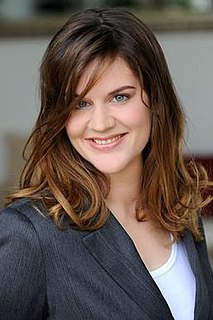
Maria Friderike Radner was a German contralto who performed internationally in opera and in concerts. She studied at the Robert Schumann Hochschule in Düsseldorf, Germany. Both Stern magazine and Munich's Abendzeitung described her as an "extremely talented interpreter of Wagner's music". Possessing the "rare pitch of a true alto", she frequently appeared as Erda in Wagner's Der Ring des Nibelungen at the Leipzig Opera, Schwertleite in Die Walküre at the Teatro Comunale di Firenze with Zubin Mehta, and in Mahler's Symphony No. 2 (Resurrection) conducted by Antonio Pappano in Rome and Milan. Her debut at the Metropolitan Opera in 2012 in Götterdämmerung was part of that company's documentary Wagner's Dream.
Oleksandr Muzychko, Ukrainian activist (b. 1962) deaths

Oleksandr Ivanovych Muzychko, nicknamed Sashko Bilyi, was a Ukrainian political activist, a member of UNA-UNSO and coordinator of Right Sector in Western Ukraine.
John Rowe Townsend, English author and scholar (b. 1922) deaths
John Rowe Townsend was a British children's writer and children's literature scholar. His best-known children's novel is The Intruder, which won a 1971 Edgar Award. His best-known academic work is a reference series, Written for Children: An Outline of English Children's Literature (1965), the definitive work of its time on the subject. It was greatly expanded for the first revised edition as Written for Children: An Outline of English-language Children's Literature (1974) and updated for its 2nd to 4th revised editions in 1983, 1987, and 1990 – the last, "A survey of imaginative writing, including poetry and picture books, accompanied by a bibliography of works on children's literature and illustrations from many of the classics of children's literature through 1989.".
David A. Trampier, American illustrator (b. 1954) deaths

David A. Trampier was an artist and writer whose artwork for TSR, Inc. illustrated some of the earliest editions of the Dungeons & Dragons role-playing game. Many of his illustrations, such as the cover of the original Players Handbook, became iconic. Trampier was also the creator of the Wormy comic strip that ran in Dragon magazine for several years.
Barbara Anderson, New Zealand author (b. 1926) deaths

Barbara Lillias Romaine Anderson, Lady Anderson was a New Zealand fiction writer who became internationally recognised and a best-selling author after her first book was published in her sixties.
Inge Lønning, Norwegian theologian, academic, and politician (b. 1938) deaths
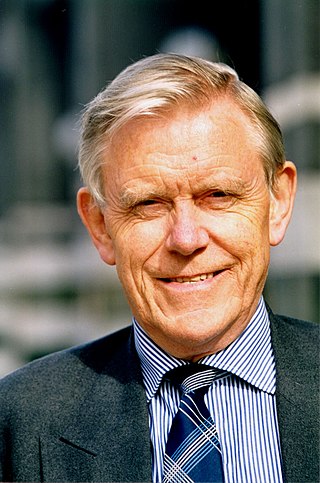
Inge Johan Lønning was a Norwegian Lutheran theologian and politician for the Conservative Party of Norway. As an academic, he was Professor of Theology and Rector of the University of Oslo during the term 1985–1992. As a politician, he served as President of the European Movement in Norway, as a Member of Parliament, as Vice President of the Parliament, as Vice President of the Conservative Party, and as President of the Nordic Council.
Gury Marchuk, Russian physicist, mathematician, and academic (b. 1925) deaths

Gury Ivanovich Marchuk was a prominent Soviet and Russian scientist in the fields of computational mathematics, and physics of atmosphere. Academician ; the President of the USSR Academy of Sciences in 1986–1991. Among his notable prizes are the USSR State Prize (1979), Demidov Prize (2004), Lomonosov Gold Medal (2004).
Paolo Ponzo, Italian footballer (b. 1972) deaths
Paolo Ponzo was an Italian footballer who last played as a midfielder for Liguria club Imperia.
Mohamed Yousri Salama, Egyptian dentist and politician (b. 1974) deaths
Mohamed Yousri Salama was an Egyptian politician, writer and activist.
Francis Hovell-Thurlow-Cumming-Bruce, 8th Baron Thurlow, English diplomat (b. 1912) deaths
Francis Edward Hovell-Thurlow-Cumming-Bruce, 8th Baron Thurlow, was a British diplomat. He was the last surviving former British colonial governor of The Bahamas.
Paul Callaghan, New Zealand physicist and academic (b. 1947) deaths

Sir Paul Terence Callaghan was a New Zealand physicist who, as the founding director of the MacDiarmid Institute for Advanced Materials and Nanotechnology at Victoria University of Wellington, held the position of Alan MacDiarmid Professor of Physical Sciences and was President of the International Society of Magnetic Resonance.
Nick Noble, American singer-songwriter (b. 1926) deaths

Nick Noble was an American pop singer, who was best known for his recordings of "The Tip of My Fingers" and "Moonlight Swim".
Robert Culp, American actor (b. 1930) deaths

Robert Martin Culp was an American actor widely known for his work in television. Culp earned an international reputation for his role as Kelly Robinson on I Spy (1965–1968), the espionage television series in which co-star Bill Cosby and he played secret agents. Before this, he starred in the CBS/Four Star Western series Trackdown as Texas Ranger Hoby Gilman in 71 episodes from 1957 to 1959. The 1980s brought him back to television as FBI Agent Bill Maxwell on The Greatest American Hero. Later, he had a recurring role as Warren Whelan on Everybody Loves Raymond. Culp gave hundreds of performances in a career spanning more than 50 years.
Jim Marshall, American photographer (b. 1936) deaths

James Joseph Marshall was an American photographer and photojournalist who photographed musicians of the 1960s and 1970s. Earning the trust of his subjects, he had extended access to his subjects both on and off-stage. Marshall was the official photographer for the Beatles' final concert in San Francisco's Candlestick Park, and he was head-photographer at Woodstock.
George Kell, American baseball player and sportscaster (b. 1922) deaths

George Clyde Kell was an American Major League Baseball third baseman who played 15 seasons for the Philadelphia Athletics (1943–1946), Detroit Tigers (1947–1952), Boston Red Sox (1952–1954), Chicago White Sox (1954–1956), and Baltimore Orioles (1956–57). Kell went on to become a Detroit Tigers broadcaster for 37 years. He was inducted into the National Baseball Hall of Fame in 1983.
Hans Klenk, German racing driver (b. 1919) deaths
Hans Klenk was a racing driver from Germany. He participated in one World Championship Grand Prix on 3 August 1952 and did not score any championship points.
Gábor Ocskay, Hungarian ice hockey player (b. 1975) deaths

Gábor Ocskay, Jr. was a Hungarian ice hockey player. As the center of the first line, he played a huge part in his national team's promotion to the 2009 World Championship. He died of a heart attack weeks before the start of the 2009 Championships. Ocskay was posthumously awarded the Torriani Award by the International Ice Hockey Federation in 2016.
Chalmers Alford, American guitarist (b. 1955) deaths
Chalmers Edward "Spanky" Alford was an American jazz guitarist. Alford was born in Philadelphia. He was well known for his playing style and use of arpeggiations. He had an illustrious career as a gospel quartet guitar player in the 1960s, 1970s, and 1980s with groups such as the Mighty Clouds of Joy.
Neil Aspinall, Welsh-English record producer and manager (b. 1941) deaths
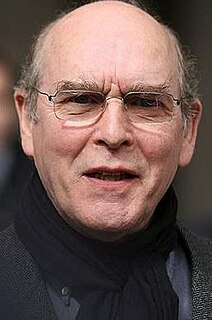
Neil Stanley Aspinall was a British music industry executive. A school friend of Paul McCartney and George Harrison, he went on to head the Beatles' company Apple Corps.
Rafael Azcona, Spanish author and screenwriter (b. 1926) deaths

Rafael Azcona Fernández was an awarded Spanish screenwriter and novelist who has worked with some of the best Spanish and international filmmakers. Azcona won five Goya Awards during his career, including a lifetime achievement award in 1998.
Richard Widmark, American actor (b. 1914) deaths

Richard Weedt Widmark was an American film, stage, and television actor and producer.
Shripad Narayan Pendse, Indian Marathi novelist (b. 1913)[citation needed] deaths
Shripad Narayan Pendse was a writer of several Marathi novels.

Marathi is an Indo-Aryan language predominantly spoken by Marathi people in the Indian state of Maharashtra. It is the official language of Maharashtra, and additional official language in the state of Goa. It is one of the 22 scheduled languages of India, with 83 million speakers as of 2011. Marathi ranks 11th in the list of languages with most native speakers in the world. Marathi has the third largest number of native speakers in India, after Hindi and Bengali. The language has some of the oldest literature of all modern Indian languages. The major dialects of Marathi are Standard Marathi and the Varhadi dialect.
Rudra Rajasingham, Sri Lankan police officer and diplomat (b. 1926) deaths

Rudra Srichandra Rajasingham was a Sri Lankan police officer and diplomat. He was the Inspector General of Police and Sri Lankan Ambassador to Indonesia.
Hans Hermann Groër, Austrian cardinal (b. 1919) deaths
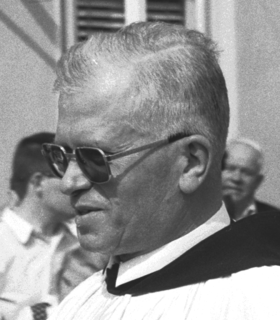
Hans Hermann Wilhelm Groër OSB was an Austrian Cardinal of the Roman Catholic Church. He served as Archbishop of Vienna from 1986 to 1995, and became a cardinal in 1988. Pope John Paul II replaced him as archbishop after multiple allegations of sexual abuse of children, and at John Paul's request Groër relinquished all ecclesiastical duties and privileges as an archbishop and cardinal on 14 April 1998.
César Milstein, Argentinian-English biochemist and academic, Nobel Prize laureate (b. 1927) deaths
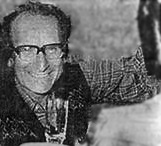
César Milstein, CH, FRS was an Argentine biochemist in the field of antibody research. Milstein shared the Nobel Prize in Physiology or Medicine in 1984 with Niels Kaj Jerne and Georges J. F. Köhler for developing the hybridoma technique for the production of monoclonal antibodies.

The Nobel Prize in Physiology or Medicine is awarded yearly by the Nobel Assembly at the Karolinska Institute for outstanding discoveries in physiology or medicine. The Nobel Prize is not a single prize, but five separate prizes that, according to Alfred Nobel's 1895 will, are awarded "to those who, during the preceding year, have conferred the greatest benefit to humankind". Nobel Prizes are awarded in the fields of Physics, Chemistry, Physiology or Medicine, Literature, and Peace.
Bob Said, American race car driver and bobsledder (b. 1932) deaths
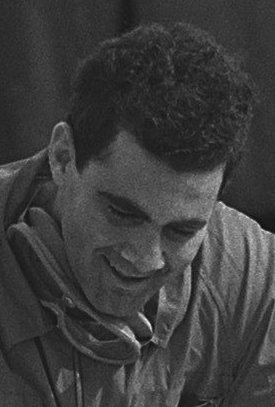
Boris Said, better known as Bob Said, was an American racing driver from the United States.
Clara Burel, French tennis player births

Clara Burel is a French tennis player. On 21 February 2022, she peaked at No. 74 in the WTA singles rankings. In singles, she reached two Grand Slam junior finals and won two silver medals at the Youth Summer Olympics. In 2018, she became the junior world No. 1.
Muriel Young, English television host and producer (b. 1928) deaths
Muriel Young was an English television continuity announcer, presenter and producer.
Katie Swan, British tennis player births

Katie Swan is a British tennis player.
Gertrud Scholtz-Klink, German politician (b. 1902) deaths

Gertrud Emma Scholtz-Klink, née Treusch, later known as Maria Stuckebrock, was a Nazi Party member and leader of the National Socialist Women's League (NS-Frauenschaft) in Nazi Germany.
Birdie Tebbetts, American baseball player and manager (b. 1912) deaths

George Robert "Birdie" Tebbetts was an American professional baseball player, manager, scout and front office executive. He played in Major League Baseball (MLB) as a catcher for the Detroit Tigers, Boston Red Sox and the Cleveland Indians from 1936 to 1952. Tebbets was regarded as the best catcher in the American League in the late 1940s.
Mina Myōi, Japanese singer and dancer births

Mina Myoi , known mononymously as Mina, is a Japanese singer and dancer based in South Korea. She is one of the three Japanese members of the South Korean girl group Twice, formed by JYP Entertainment in 2015.
Enzo Zidane, French-Spanish footballer births
Enzo Alan Zidane Fernández, known as Enzo Zidane and sometimes simply as Enzo, is a French professional footballer who plays as a midfielder for Spanish club Fuenlabrada.
Joseph Needham, English historian and academic (b. 1900) deaths

Noel Joseph Terence Montgomery Needham was a British biochemist, historian of science and sinologist known for his scientific research and writing on the history of Chinese science and technology, initiating publication of the multivolume Science and Civilisation in China. He was elected a fellow of the Royal Society in 1941, and a fellow of the British Academy in 1971. In 1992, Queen Elizabeth II conferred on him the Companionship of Honour, and the Royal Society noted he was the only living person to hold these three titles.
Albert Arlen, Australian pianist, composer, actor, and playwright (b. 1905) deaths
Albert Arlen AM was a Turkish Australian pianist, composer, actor and playwright. He is best known for his musical The Sentimental Bloke, the "Alamein Concerto", and his setting of Banjo Paterson's Clancy of the Overflow.
John Hersey, American journalist and author (b. 1914) deaths

John Richard Hersey was an American writer and journalist. He is considered one of the earliest practitioners of the so-called New Journalism, in which storytelling techniques of fiction are adapted to non-fiction reportage. In 1999, Hersey's account of the aftermath of the atomic bomb dropped on Hiroshima, Japan, was adjudged the finest piece of American journalism of the 20th century by a 36-member panel associated with New York University's journalism department.
Nick Browne, English cricketer births

Nicholas Laurence Joseph Browne is an English cricketer who plays for Essex as a left-handed batsman who bowls leg breaks.
Dalila Jakupovic, Slovenian tennis player births
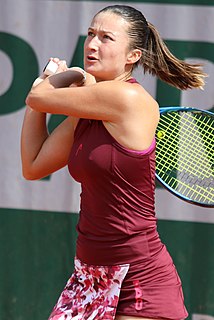
Dalila Jakupović is a Slovenian tennis player of Bosnian descent.
John Kerr, Australian lawyer and politician, 18th Governor-General of Australia (b. 1914) deaths

Sir John Robert Kerr was an Australian barrister and judge who served as the 18th Governor-General of Australia, in office from 1974 to 1977. He is primarily known for his involvement in the 1975 constitutional crisis, which culminated in his decision to dismiss the incumbent prime minister Gough Whitlam and appoint Malcolm Fraser as his replacement, unprecedented actions in Australian federal politics.

The governor-general of Australia is the representative of the monarch, currently King Charles III, in Australia. The governor-general is appointed by the monarch on the recommendation of government ministers. The governor-general has formal presidency over the Federal Executive Council and is commander-in-chief of the Australian Defence Force. The functions of the governor-general include appointing ministers, judges, and ambassadors; giving royal assent to legislation passed by parliament; issuing writs for election; and bestowing Australian honours.
Starlin Castro, American baseball player births

Starlin DeJesus Castro is a Dominican professional baseball infielder who is a free agent. He has played in Major League Baseball (MLB) for the Chicago Cubs, New York Yankees, Miami Marlins and Washington Nationals. Castro is a four-time MLB All-Star and holds the record for most runs batted in in an MLB debut. In 2011, he led the National League in hits, becoming the youngest player to do so.
Aljur Abrenica, Filipino actor births

Aljur Mikael Guiang Abrenica is a Filipino actor, dancer, model and singer. He appeared on the fourth season of StarStruck.
Keisha Castle-Hughes, Australian-New Zealand actress births

Keisha Castle-Hughes is an Australian-born New Zealand actress who rose to prominence for playing Paikea "Pai" Apirana in the film Whale Rider. She was nominated for several awards, including the Academy Award for Best Actress and the Broadcast Film Critics Association Award for Best Young Actor/Actress, which she won.
Lacey Evans, American wrestler births

Macey Estrella-Kadlec is an American professional wrestler currently signed to WWE, where she performs on the SmackDown brand under the ring name Lacey Evans.
Alyssa Healy, Australian cricketer births
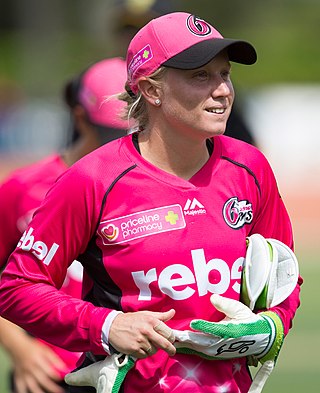
Alyssa Jean Healy is an Australian cricketer who plays for the Australian women's national team and New South Wales in domestic cricket, as well as the Sydney Sixers in the WBBL. She made her international debut in February 2010.
Ray Goulding, American comedian and radio host (b. 1922) deaths

Raymond Walter Goulding was an American comedian, who, together with Bob Elliott formed the comedy duo of Bob and Ray. He was born in Lowell, Massachusetts, the fourth of five children of Thomas Goulding, an overseer in a textile mill, and his wife Mary. Upon graduation from high school at age 17, Ray Goulding was hired as a $15-a-week announcer on local station WLLH, using the name 'Dennis Howard' to avoid confusion with his older brother Phil, an announcer in Boston radio at the time. A year later Ray was hired by Boston radio station WEEI under his own name.
Aziz Shavershian, Russian-born Australian bodybuilder (d. 2011) births
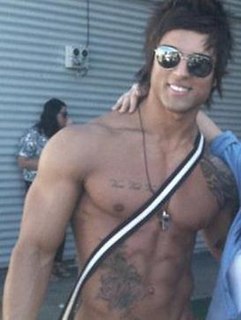
Aziz Sergeyevich Shavershian, better known as Zyzz, was a Russian-born Australian bodybuilder, personal trainer and model. He established a cult following after posting multiple videos of himself on YouTube, starting in 2007.
Aiga Grabuste, Latvian heptathlete births

Aiga Grabuste is a Latvian track and field athlete competing in heptathlon. She represented her country at the 2008 Beijing Olympics and won bronze medal at the 2012 European Athletics Championships, finishing just 10 points behind fellow Latvian Laura Ikauniece.
Ryan Higgins, Zimbabwean cricketer births
Ryan Shaun Higgins is a former Zimbabwean cricketer. He played 11 One Day Internationals for Zimbabwe in 2006, highlights include the wicket of Brian Lara and best bowling figures of 4/21 from 10 overs. Ryan Higgins retired from international cricket in 2007 at the age of 18. Higgins is now based in the Cotswolds and is now Managing Director of Gecko Cricket, the company he founded in 2012.
Matías Martínez, Argentinian footballer births
Matías Alfredo Martínez is an Argentine football defender who plays for Atlético de Rafaela.
Kardo Ploomipuu, Estonian swimmer births
Kardo Ploomipuu is an Estonian swimmer.
Matt Todd, New Zealand rugby union player births

Matthew Brendon Todd is a New Zealand rugby union footballer, who plays as an Openside Flanker for the Toshiba Brave Lupus in the Japanese Top League competition.
Turhan Feyzioğlu, Turkish academic and politician, 27th Deputy Prime Minister of Turkey (b. 1922) deaths
Turhan Feyzioğlu was a Turkish academic and a politician.

This is a chronological list of deputy prime ministers of governments of the Republic of Turkey. Deputy Prime Minister was an office under the prime ministry between 1946 and 2018. Not all cabinets had the post of deputy prime minister. The political party of the deputy prime minister is affixed to his name when it differed from the prime minister's party as it was the case in coalition governments. Deputy Prime Minister of Turkey abolished together with the Prime Ministry's in 2018.
Ramires, Brazilian footballer births

Ramires Santos do Nascimento, known as Ramires, is a Brazilian former professional footballer. A midfielder, he was comfortable playing in either the centre or right midfielder position. He normally played as a box-to-box midfielder role because of his energy in supporting defensive and attacking play. He was also one of the most used midfielders in EA Sports' FIFA 14, 15, & 16.
Shakib Al Hasan, Bangladeshi cricketer births
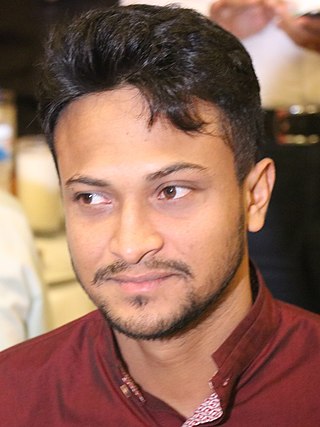
Shakib Al Hasan is a Bangladeshi cricketer and current captain of the Bangladesh national cricket team in Tests and T20Is. He plays for Barishal in domestic cricket as an All-rounder. He is currently the ranked 1 All-rounder in ODI cricket. He is often considered one of the best cricket players of his era and arguably the greatest all-rounder of this generation. He is known for his aggressive left-handed batting style in the middle order and controlled slow left-arm orthodox bowling.He was ranked the 90th most famous athlete in the world by ESPN. As of 2022, he has taken the most wickets at T20 World Cups.
Billy Jones, English footballer births

Billy Jones is an English professional footballer who plays as a right-back, most recently for Rotherham United.
Yuma Asami, Japanese actress and singer[citation needed] births

Yuma Asami , is a Japanese actress, singer, and a former adult video (AV) actress and model. Starring in more than 600 adult films between 2005 and 2013, Asami was widely recognized as one of Japan's most famous and acclaimed adult film actresses with her popularity resulting in mainstream media appearances as well. A leading actress of two major Japanese AV studios, Alice Japan and S1 No.1 Style, Asami was known her youthful looks, large bust and her natural onscreen charisma which was largely credited in helping her establish herself as Japan's top adult performer. Between 2008 and 2013, she was also a member of the idol group Ebisu Muscats, where she performed with numerous other famous AV actresses like Sola Aoi, Akiho Yoshizawa, Tina Yuzuki (Rio) and Aino Kishi.
Lana, American wrestler and manager births

Catherine Joy "CJ" Perry is an American professional wrestler, actress, and dancer. She is best known for her time in WWE under the ring name Lana.
Haruka Ayase, Japanese actress and singer births

Haruka Ayase is a Japanese actress, model and singer who started her career as a gravure idol in 2000. She has since become a leading actress in television and film.
Benoît Assou-Ekotto, French-born Cameroonian international footballer births

Benoît Pierre David Assou-Ekotto is a former professional footballer who played as a left back. Born in France, he represented the Cameroon national team.
Chris Bosh, American basketball player births

Christopher Wesson Bosh is an American former professional basketball player. A Texas Mr. Basketball in high school, he played one season of college basketball for Georgia Tech before declaring for the 2003 NBA draft. Bosh was selected fourth overall by the Toronto Raptors.
Adrian D'Souza, Indian field hockey player births
Adrian Albert D'souza is an Indian field hockey goalkeeper, who made is international debut for the men's national team in January 2004 during the Sultan Azlan Shah Hockey Tournament in Kuala Lumpur, Malaysia. Adrian has more than 100 International Caps for his country in all competitions. He has played in all major field hockey tournaments, including the 2006 Hockey World Cup, 2006 Asian Games, 2007 Asia Cup and 2 Champions Trophies. Regarded as one of the most innovative and daring goal-keepers of recent times, Adrian brought the rushing technique to the hockey field. Adrian has competed in 3/4 major international hockey events : the Olympics, World Cup, and Asian Games with a total of 165 caps for his country.
Lucy Wangui Kabuu, Kenyan runner births
Lucy Wangui Kabuu is a Kenyan long-distance runner who specializes in the 5000 and 10,000 metres events. She has represented Kenya twice at the Summer Olympics, finishing in the top ten of the 10,000 m race in both 2004 and 2008. Her personal bests of 14:33.49 minutes for the 5000 m and 30:39.96 minutes for the 10,000 m make her one of Kenya's fastest ever runners in the events.
Park Bom, South Korean singer births

Park Bom, previously known mononymously as Bom, is a South Korean singer. She is best known as a member of the South Korean girl group 2NE1.
Philipp Petzschner, German tennis player births

Philipp Petzschner is a retired German professional tennis player. He was known for his hard-hitting forehand and bursts of speed around the court. He reached a career-high doubles ranking of world No. 9, which he achieved in April 2011.
Sam Jaffe, American actor (b. 1891) deaths

Shalom "Sam" Jaffe was an American actor, teacher, musician, and engineer. In 1951, he was nominated for the Academy Award for Best Supporting Actor for his performance in The Asphalt Jungle (1950) and appeared in other classic films such as The Day the Earth Stood Still (1951) and Ben-Hur (1959). He is also remembered for other outstanding performances such as the title role in Gunga Din (1939) and the High Lama in Lost Horizon (1937).
Luca Ceccarelli, Italian footballer births
Luca Ceccarelli is an Italian footballer, who is vacant at the moment, and usually plays as either a right back for San Marino Calcio.
Riccardo Musetti, Italian footballer births
Riccardo Musetti is an Italian footballer.
Pierre-Alexandre Parenteau, Canadian ice hockey player births

Pierre-Alexandre Parenteau is a Canadian former professional ice hockey right winger.
T.J. Ford, American basketball player births

Terrance Jerod Ford Sr. is an American former professional basketball player. Having been awarded numerous top basketball accolades in high school and college, Ford entered the 2003 NBA draft and was selected eighth overall by the Milwaukee Bucks. Ford's recurring back injuries resulted in him missing many games in his three seasons with the Bucks, but in 2005, it was announced that he was fit to play basketball again. Ford was traded to the Raptors prior to the 2006–07 NBA season, and established himself as the starting point guard, helping the team win the Atlantic Division crown and reach the 2007 NBA Playoffs. Following an injury sustained in the 2007–08 NBA season, however, Ford had difficulties reclaiming the starting spot and was traded to the Indiana Pacers. He signed with KK Zagreb of Croatia during the 2011 NBA lockout where he appeared in three games. On December 9, 2011, Ford signed a contract with the San Antonio Spurs.
Corey Hart, American baseball player births

Jon Corey Hart is an American former professional baseball right fielder. He played in Major League Baseball (MLB) for the Milwaukee Brewers from 2004 through 2013, the Seattle Mariners in 2014 and the Pittsburgh Pirates in 2015. Hart was a two-time MLB All-Star, and also participated in the MLB Home Run Derby.
Jack Swagger, American mixed martial artist and professional wrestler births

Donald Jacob Hager Jr. is an American professional wrestler and mixed martial artist, currently signed to All Elite Wrestling (AEW) under the ring name Jake Hager, where he is a member of the Jericho Appreciation Society stable. Hager is also known for his time in WWE under the ring name Jack Swagger, where he was a former world champion. As a mixed martial artist, he is currently signed to Bellator MMA where he competes in the heavyweight division.
Epico Colon, Puerto Rican professional wrestler births

Orlando Tito Colón Nieves is a Puerto Rican professional wrestler and promoter best known for his time with WWE, where he performed under the ring name Epico Colón, or simply Epico. and the World Wrestling Council (WWC) under his real name, where he is a former WWC Universal Heavyweight Champion. Currently President of Latin American Wrestling Entertainment (LAWE)
Jimmy Hempte, Belgian footballer births
Jimmy Hempte is a Belgium retired footballer who played as a left back and current head coach of CS PV Ostiches.
Dustin McGowan, American baseball player births
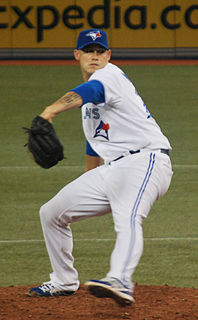
Dustin Michael McGowan is an American former professional baseball pitcher. He played in Major League Baseball (MLB) for the Toronto Blue Jays, Philadelphia Phillies, and Miami Marlins.
Mike Adams, American football player births

Michael Carl Adams is a former American football safety of the National Football League (NFL). He played college football at Delaware, and was signed by the San Francisco 49ers as an undrafted free agent in 2004. Adams also played for the Cleveland Browns, Denver Broncos, Indianapolis Colts, Carolina Panthers, and Houston Texans, and made two Pro Bowls during his 16-year career.
Ron Hainsey, American ice hockey player births
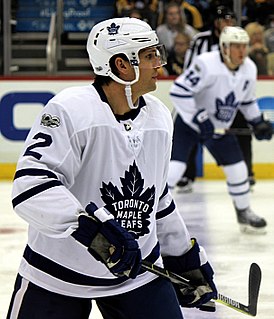
Ronald Martin Hainsey is an American former professional ice hockey defenseman. He played seventeen years in the NHL for the Montreal Canadiens, Columbus Blue Jackets, Atlanta Thrashers/Winnipeg Jets, Carolina Hurricanes, Pittsburgh Penguins, Toronto Maple Leafs and the Ottawa Senators, playing over 1,100 career NHL games.
Dirk Hayhurst, American baseball player births

Dirk Von Hayhurst is an American author and broadcaster, and formerly a professional baseball pitcher. Hayhurst played in Major League Baseball for the San Diego Padres in 2008 and for the Toronto Blue Jays in 2009. Following the end of his playing career, Hayhurst wrote four books about his experiences in professional baseball.
Mark Looms, Dutch footballer births
Mark Looms is a Dutch former professional footballer who played as a left back.
Gary Paffett, English racing driver births

Gary Paffett is a British racing driver. Having become a household name in the DTM, following fifteen years in the series and two championship wins, Paffett moved onto Formula E for the 2018/19 championship, after it was announced in 2017 that Mercedes would no longer be taking part in DTM. Paffett was also a test driver for the Williams Formula One team, having previously worked in a similar role at McLaren for a number of years, during the team's successful title winning years. Paffett progressed through the ranks of karting and junior formulae in the United Kingdom, winning the McLaren Autosport BRDC Award in 1999. He now lives in Ousden, Suffolk, England.
Tassos Venetis, Greek footballer births
Anastasios "Tasos" Venetis is a Greek former professional footballer who played as a defender.
Óscar Romero, Salvadoran archbishop (b. 1917) deaths

Óscar Arnulfo Romero y Galdámez was a prelate of the Catholic Church in El Salvador. He served as Auxiliary Bishop of the Archdiocese of San Salvador, the Titular Bishop of Tambeae, as Bishop of Santiago de María, and finally as the fourth Archbishop of San Salvador. As archbishop, Romero spoke out against social injustice and violence amid the escalating conflict between the military government and left-wing insurgents that led to the Salvadoran Civil War. In 1980, Romero was shot by an assassin while celebrating Mass. Though no one was ever convicted for the crime, investigations by the UN-created Truth Commission for El Salvador concluded that Major Roberto D'Aubuisson, a death squad leader and later founder of the right-wing Nationalist Republican Alliance (ARENA) political party, had ordered the killing.
Lake Bell, Jewish-American actress, director, and screenwriter births
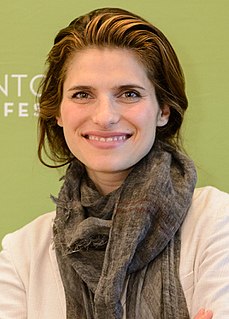
Lake Siegel Bell is an American actress, screenwriter and director. She has starred in various television series, including Boston Legal (2004–2006), Surface (2005–2006), How to Make It in America (2010–2011), Childrens Hospital (2008–2016), and Bless This Mess (2019–2020) and in films including Over Her Dead Body (2008), What Happens in Vegas (2008), It's Complicated (2009), No Strings Attached (2011), Million Dollar Arm (2014), No Escape (2015), Man Up (2015), The Secret Life of Pets (2016), Shot Caller (2017) and Home Again (2017).
Norris Hopper, American baseball player births

Norris Stephen Hopper is an American former professional baseball outfielder who played three seasons of Major League Baseball (MLB) for the Cincinnati Reds. Drafted by the Kansas City Royals in the eighth round of the 1998 Major League Baseball draft, Hopper made his MLB debut on August 20, 2006, with the Cincinnati Reds. He has a major league career .316 batting average with 125 hits, 15 doubles, two triples, one home run, 20 runs batted in, and 17 stolen bases.
Periklis Iakovakis, Greek hurdler births

Periklís Iakovákis is a retired Greek athlete mainly competing in 400 metres hurdles. He is the Greek record holder with a time of 47.82 seconds and fifteen times national champion in the event.
Graeme Swann, English cricketer births

Graeme Peter Swann is an English former cricketer who played all three formats of the game. Born in Northampton, he attended Sponne School in Towcester, Northamptonshire. He was primarily a right-arm off-spinner, and also a capable late-order batsman with four first-class centuries, and often fielded at second slip. Swann could score quickly; his test strike rate is the highest of any male English batter to have scored at least 1000 runs.
Michael Braun, Australian footballer and coach births
Michael Braun is an Australian rules footballer who played for the AFL's West Coast Eagles.
Tomáš Ujfaluši, Czech footballer and manager births
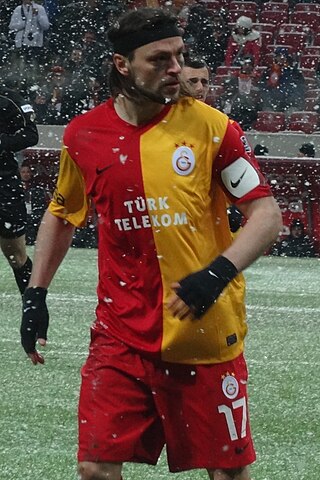
Tomáš Ujfaluši is a Czech former professional footballer. He operated as either a central defender or a right back.
José Valverde, Dominican baseball player births

José Rafael Valverde is a Dominican professional baseball pitcher who is a free agent. He has played 12 seasons in Major League Baseball (MLB) for the Arizona Diamondbacks, Houston Astros, Detroit Tigers, and New York Mets. He is nicknamed "Papa Grande."
Park Mok-wol, influential Korean poet and academic (b. 1916) deaths

Pak Mok-wol was an influential Korean poet and academic.
Jessica Chastain, American actress births

Jessica Michelle Chastain is an American actress and producer. Known for primarily starring in films with feminist themes, she has received various accolades, including an Academy Award and a Golden Globe Award. Time magazine named her one of the 100 most influential people in the world in 2012.
Maxim Kuznetsov, Russian ice hockey player births
Maxim Romanovich Kuznetsov is a Kazakhstani-born Russian former professional ice hockey player. Kuznetsov was drafted in the 1st round by the Detroit Red Wings in the 1995 NHL Entry Draft.
Darren Lockyer, Australian rugby league player and sportscaster births
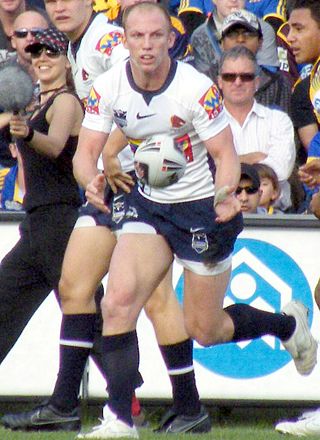
Darren James Lockyer is an Australian television commentator and former professional rugby league footballer. Lockyer was an Australian international and Queensland State representative captain, who played his entire professional career with the Brisbane Broncos.
Aaron Brooks, American football player births

Aaron Lafette Brooks is a former American football quarterback who played in the National Football League (NFL) for eight seasons, primarily with the New Orleans Saints. He played college football at Virginia and was selected by the Green Bay Packers in the fourth round of the 1999 NFL Draft. After one season with the Packers, he was a member of the Saints for six seasons, where he led the franchise to their first playoff victory in 2000 against the defending Super Bowl champion St. Louis Rams. Brooks also became the first NFL quarterback to eliminate the defending Super Bowl champions in his first career postseason start. During his final season, he played for the Oakland Raiders.
Aliou Cissé, Senegalese footballer and coach births

Aliou Cissé is a Senegalese football coach and former player who is the manager of the Senegal national team. Cissé is best known for captaining the Senegal team which reached the 2002 Africa Cup of Nations Final and for being the first Senegal manager to win the tournament in 2022 after reaching the final in 2019.
Athanasios Kostoulas, Greek footballer births
Athanasios Kostoulas is a Greek former international football player, who played as a defender.
Peyton Manning, American football player and entrepreneur births

Peyton Williams Manning is an American former football quarterback who played in the National Football League (NFL) for 18 seasons. Nicknamed "the Sheriff", he spent 14 seasons with the Indianapolis Colts and four with the Denver Broncos. Manning is considered to be one of the greatest quarterbacks of all time. A member of the Manning football dynasty, he is the second son of former NFL quarterback Archie Manning and older brother of former NFL quarterback Eli Manning. He played college football at Tennessee, where he won the Maxwell, Davey O'Brien, and Johnny Unitas Golden Arm Awards as a senior en route to victory in the 1997 SEC Championship.
Bernard Montgomery, 1st Viscount Montgomery of Alamein, English field marshal (b. 1887) deaths

Field Marshal Bernard Law Montgomery, 1st Viscount Montgomery of Alamein,, nicknamed "Monty", was a senior British Army officer who served in the First World War, the Irish War of Independence and the Second World War.
Thomas Johansson, Swedish-Monacan tennis player births

Karl Thomas Conny Johansson is a Swedish retired professional tennis player and coach. He reached a career-high Association of Tennis Professionals (ATP) world No. 7 singles ranking on 10 May 2002. His career highlights in singles include a Grand Slam title at the Australian Open in 2002, and an ATP Masters Series title at the 1999 Canada Masters. He also won a silver medal at the 2008 Summer Olympics in men's doubles, partnering Simon Aspelin.
Alyson Hannigan, American actress births
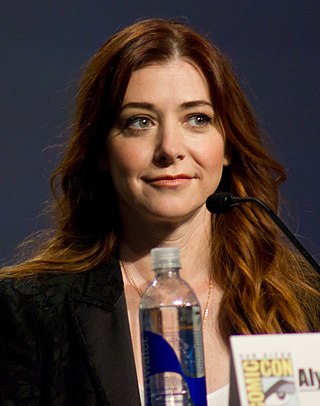
Alyson Lee Hannigan is an American actress. After starting her career at age four with appearances in commercials, she moved to Hollywood at age 11 and soon got an agent.
Sergey Klyugin, Russian high jumper births
Sergey Petrovich Klyugin is a Russian high jumper. He won the gold medal at the 2000 Summer Olympics with 2.35m, one centimetre behind his personal best jump from 1998. A bronze medal at 1998's European championships was his only other international medal.
Tado, Filipino comedian and activist (d. 2014) births

Arvin Impuesto Jimenez, known mononymously as Tado, was a Filipino comedian, actor, radio personality, businessman, published author and activist. His nickname "Tado" comes from a Tagalog expletive (tarantado) that he frequently blurts out. Tado was primarily known for the offbeat television program Strangebrew and the U92 radio program The BrewRATs!.
Jacek Bąk, Polish footballer births

Jacek Waldemar Bąk is a Polish former professional footballer who played as a central defender.
Philippe Boucher, Canadian ice hockey player and manager births
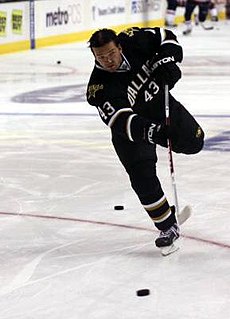
Philippe Boucher is a Canadian former professional ice hockey defenceman who played in the National Hockey League. He is currently the general manager of the Drummondville Voltigeurs of the QMJHL. He also served as GM with the Quebec Remparts and the Rimouski Oceanic.
Steve Corica, Australian footballer and coach births

Stephen Christopher Corica is an Australian association football manager and former player. He is the current manager of Australian club Sydney FC.
Jure Ivanušič, Slovenian actor, concert pianist and chansonnier births

Jure Ivanušič is a Slovene theatre and film actor, director, playwright, concert pianist, composer, chansonnier and translator.
A chansonnier is a manuscript or printed book which contains a collection of chansons, or polyphonic and monophonic settings of songs, hence literally "song-books"; however, some manuscripts are called chansonniers even though they preserve the text but not the music, for example, the Cancioneiro da Vaticana and Cancioneiro da Biblioteca Nacional, which contain the bulk of Galician-Portuguese lyrics.
Mette Jacobsen, Danish swimmer births
Mette Jacobsen is a former freestyle and butterfly swimmer from Denmark who competed in five consecutive Summer Olympics for her native country, beginning in 1988. She won a total of 32 individual medals in international championships in a period from 1989 to 2005.
Glen Jakovich, Australian footballer births

Glen Darren Jakovich is a former Australian rules footballer who played for the West Coast Eagles in the Australian Football League (AFL).
Jim Parsons, American actor births

James Joseph Parsons is an American actor. From 2007 to 2019, he played Sheldon Cooper in the CBS sitcom The Big Bang Theory. He has received various awards, including four Primetime Emmy Awards for Outstanding Lead Actor in a Comedy Series and the Golden Globe Award for Best Actor in a Television Series Musical or Comedy. In 2018, Forbes estimated his annual salary to be $26.5 million and named him the world's highest-paid television actor.
Bertram Stevens, Australian accountant and politician, 25th Premier of New South Wales (b. 1889) deaths

Sir Bertram Sydney Barnsdale Stevens, also referred to as B. S. B. Stevens, was an Australian politician who served as the 25th Premier of New South Wales, in office from 1932 to 1939 as leader of the United Australia Party (UAP).

The premier of New South Wales is the head of government in the state of New South Wales, Australia. The Government of New South Wales follows the Westminster Parliamentary System, with a Parliament of New South Wales acting as the legislature. The premier is appointed by the governor of New South Wales, and by modern convention holds office by his or her ability to command the support of a majority of members of the lower house of Parliament, the Legislative Assembly.
Christophe Dugarry, French footballer births

Christophe Jérôme Dugarry is a French former professional footballer who played as a forward. His clubs include Bordeaux, Milan, Barcelona, Marseille, Birmingham City and Qatar SC. He was also a member of the France team that won the 1998 World Cup and Euro 2000.
Steve Karsay, American baseball player and coach births

Stefan Andrew Karsay is an American former professional baseball pitcher and coach. Karsay played in Major League Baseball (MLB) for the Oakland Athletics, Cleveland Indians (1998–2001), Atlanta Braves (2001), New York Yankees, and Texas Rangers (2005). He later served as the bullpen coach for the Milwaukee Brewers (2019–2021).
Tig Notaro, American comedian and actor births

Mathilde O'Callaghan "Tig" Notaro is an American stand-up comedian, writer, radio contributor, and actress. She is known for her deadpan comedy. Her acclaimed album Live was nominated in 2014 for the Grammy Award for Best Comedy Album at the 56th Annual Grammy Awards. The special Tig Notaro: Boyish Girl Interrupted was nominated in 2016 at the 68th Primetime Emmy Awards for Outstanding Writing for a Variety Special. In 2017, the album Boyish Girl Interrupted was nominated for the Grammy Award for Best Comedy Album at the 59th Annual Grammy Awards.
Arne Jacobsen, Danish architect, designed the Radisson Blu Royal Hotel and Aarhus City Hall (b. 1902) deaths
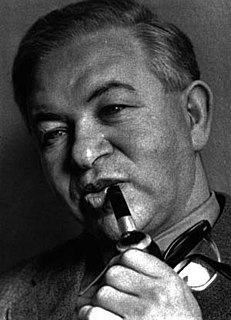
Arne Emil Jacobsen, Hon. FAIA 11 February 1902 – 24 March 1971) was a Danish architect and furniture designer. He is remembered for his contribution to architectural functionalism and for the worldwide success he enjoyed with simple well-designed chairs.

The Radisson Collection Hotel, Royal Copenhagen is a historic hotel in Copenhagen, Denmark.

Aarhus City Hall is the city hall of Aarhus, Denmark. The decision to build a new city hall was taken during a city hall meeting in 1937. The new building was inaugurated 2 June 1941, designed by architects Arne Jacobsen and Erik Møller. On the first proposal, the plans did not include a tower but due to massive public pressure it was later added to the drawings along with the idea to clad the structure in marble. Hans Wegner was in charge of the furnishing - which is uniquely designed to fit the building -, and parts of the interior design.
Arthur Metcalfe, Australian public servant (b. 1895) deaths
Dr Arthur John Metcalfe was a senior Australian public servant, best known for his time as Director-General of the Department of Health.
Lara Flynn Boyle, American actress births

Lara Flynn Boyle is an American actress. She is best known for her role as Donna Hayward in the television series Twin Peaks (1990–1991). After portraying Stacy in Penelope Spheeris's comedy Wayne's World (1992), Boyle had a lead role in John Dahl's neo-noir film Red Rock West (1993), followed by roles in Threesome (1994), Cafe Society (1995), and Happiness (1998). Boyle had played the villainous role as Serleena in the blockbuster feature film Men in Black II for which she was nominated for a Razzie Award for Worst Supporting Actress. From 1997 to 2003, Boyle portrayed Assistant District Attorney Helen Gamble in the ABC television series The Practice for which she was nominated for a Primetime Emmy Award Outstanding Supporting Actress in a Drama Series.
Sharon Corr, Irish singer-songwriter and violinist births

Sharon Helga Corr MBE is an Irish singer-songwriter, musician, and television personality. She is best known as a member of the pop-rock band The Corrs, which she co-founded in 1990 with her elder brother Jim and younger sisters Caroline and Andrea. She plays the violin, piano and guitar, and sings backing vocals. She began learning the violin when she was six years old. She has played in national youth orchestras and is qualified to teach the violin.
Judith Draxler, Austrian swimmer births

Judith Draxler is a retired freestyle swimmer from Austria, who competed in three consecutive Summer Olympics for her native country, starting in 1996.
Erica Kennedy, African-American journalist and author (d. 2012) births
Erica Kennedy was an American author, blogger, news correspondent, fashion journalist, and singer. Her 2004 novel Bling, became a New York Times bestseller. In 2010, she was named to the list of 100 most influential African Americans, as published by Ebony magazine and known as the "Ebony Power 100".
Mike Vanderjagt, Canadian-American football player births
Michael John Vanderjagt is a Canadian former football placekicker who played in the National Football League (NFL) for nine seasons, primarily with the Indianapolis Colts. He served as the Colts' placekicker from 1998 to 2005 and was a member of the Dallas Cowboys during his final NFL season in 2006. Vanderjagt also played for four seasons in the Canadian Football League (CFL), where he spent three seasons with the Toronto Argonauts and one with the Saskatchewan Roughriders.
Ilir Meta, Albanian politician, incumbent President of Albania births

Ilir Rexhep Meta is an Albanian politician. He served as President of Albania from 24 July 2017 to 24 July 2022.
This is a list of heads of state of Albania who have served since the Declaration of Independence of 1912.
S.S. Sivasankar, Indian Tamil politician, incumbent Minister for Transport, Tamil Nadu births
S. S. Sivasankar is an Indian Tamil politician and writer from the Dravida Munnetra Kazhagam (DMK). He has represented Andimadam (2006-11), and Kunnam constituencies in Tamil Nadu Legislative Assembly. From 7 May 2021 to 29 March 2022, he served as Minister for the Welfare of Backward, Most Backward and Denotified Communities in the Council of Ministers under M.K. Stalin. On 29 March 2022, he assumed charge as the State's Minister for Transport.
Politics of Tamil Nadu is the politics related to the Indian state of Tamil Nadu.

The Department of Transport of state of Tamil Nadu is one of the Department of Government of Tamil Nadu.
Stephan Eberharter, Austrian skier births

Stephan "Steff" Eberharter is a former World Cup alpine ski racer from Austria.
Minarti Timur, Indonesian badminton player births
Minarti Timur is a former Indonesian badminton player who is affiliated with PB Djarum since 1987.
Alice Guy-Blaché, American director, producer, and screenwriter (b. 1873) deaths

Alice Ida Antoinette Guy-Blaché was a French pioneer filmmaker. She was one of the first filmmakers to make a narrative fiction film, as well as the first woman to direct a film. From 1896 to 1906, she was probably the only female filmmaker in the world. She experimented with Gaumont's Chronophone sync-sound system, and with color-tinting, interracial casting, and special effects.
Diann Roffe, American skier births
Diann Roffe, also known as Diann Roffe-Steinrotter, is a former World Cup alpine ski racer and Olympic gold medalist from the United States. Born in Warsaw, New York, she won the Super-G at the 1994 Olympics in Lillehammer, Norway. Roffe also won the silver medal in the giant slalom at the 1992 Winter Olympics in Albertville, France and a gold medal in the GS at the 1985 World Championships in Bormio, Italy at age 17. Though she did gain place 8 in the World Cup Giant Slalom Race on March 7, 1984, at Lake Placid, she was unknown more or less, when she did compete in that race on February 6. In the progress of the race she finished 5th after the first leg. In the second leg, Diann was outclass - clocked in 1:09.35 she had a margin of 0.77 second in that leg to the second placed Elisabeth Kirchler.Winter Olympics 1992: Likewise in 1985, she did improve oneself in the second leg on that February 19th, at the "Piste du Corbe"-course at Méribel because she had been only ninth-placed. She won the silver medal in a tie with Anita Wachter.
Floyd Heard, American sprinter and coach births
Floyd Wayne Heard is a retired track and field sprinter from the United States, best known for setting the 1986 world's best year performance in the men's 200 m. He did so on 7 July 1986 at a meet in Moscow, Soviet Union, clocking 20.12s. A year later he won the title in the men's 200 m at the 1987 Pan American Games.
The Undertaker, American wrestler and actor births

Mark William Calaway, better known by the ring name The Undertaker, is an American retired professional wrestler. Widely regarded as one of the greatest professional wrestlers of all time, Calaway spent the vast majority of his career wrestling for WWF/E, and is best known for his critically acclaimed "Deadman" Undertaker gimmick, for which he was inducted into the WWE Hall of Fame in 2022. Calaway remains employed for WWE through a 15-year contract signed in 2019.
Raimond van der Gouw, Dutch footballer and coach births
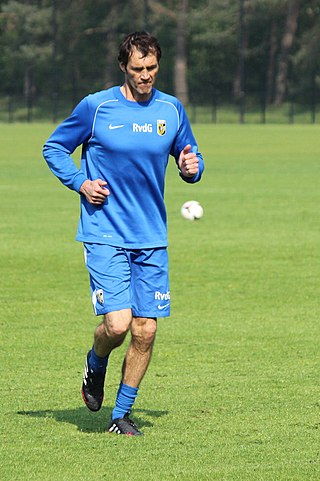
Raimundus Johannes Hendrikus van der Gouw is a Dutch former professional footballer, who played as a goalkeeper.
Vadym Tyshchenko, Ukrainian footballer and manager (d. 2015) births

Vadym Mykolayovych Tyshchenko or Vadim Nikolayevich Tishchenko was a Soviet and Ukrainian association football player and Ukrainian coach.
Torsten Voss, German decathlete and bobsledder births
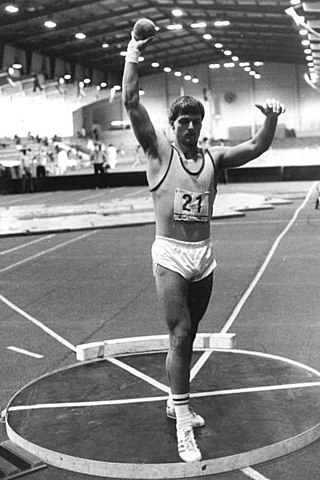
Torsten Voss is an East German-German track and field athlete and bobsledder who competed from the late 1980s to the late 1990s.
Angèle Dubeau, Canadian violinist births
Angèle Dubeau, is a Canadian classical violinist. She has devoted a large part of her career to making classical music accessible to a wide audience, but also frequently plays works by contemporary composers.
Star Jones, African-American lawyer, journalist, and talk show host births

Starlet Marie Jones, better known as Star Jones, is an American lawyer, journalist, television personality, fashion designer, author, and women's and diversity advocate. She is best known as one of the first co-hosts on the ABC morning talk show The View, which she appeared on for nine seasons from 1997-98 through 2005-06. She was also one of sixteen contestants of the fourth installment of The Celebrity Apprentice in 2011, coming in fifth place.
Irina Meszynski, German discus thrower births
Irina Meszynski is a retired East German discus thrower.
Jean Goldkette, French-American pianist and bandleader (b. 1899) deaths

John Jean Goldkette was a jazz pianist and bandleader.
Auguste Piccard, Swiss physicist and explorer (b. 1884) deaths

Auguste Antoine Piccard was a Swiss physicist, inventor and explorer known for his record-breaking hydrogen balloon flights, with which he studied the Earth's upper atmosphere. Piccard was also known for his invention of the first bathyscaphe, FNRS-2, with which he made a number of unmanned dives in 1948 to explore the ocean's depths.
Dean Jones, Australian cricketer and coach (d. 2020) births

Dean Mervyn Jones was an Australian cricket player, coach and commentator who played Tests and One Day Internationals (ODIs) for Australia. He had an excellent record in Test cricket and is best remembered for revolutionising the ODI format. Through the late 1980s and early 1990s, he was recognised as among the best ODI batsmen in the world, a view which has been validated in the retrospective ICC Player Rankings. His batting was often characterised by his agile footwork against both pace and spin, quick running between wickets, and willingness to take risks and intimidate bowlers. In 2019, Jones was inducted into the Australian Cricket Hall of Fame.
Yanis Varoufakis, Greek economist and politician, Greek Minister of Finance births

Ioannis "Yanis" Varoufakis is a Greek economist and politician. A former academic, he served as the Greek Minister of Finance from January to July 2015 under Prime Minister Alexis Tsipras. He has been Secretary-General of MeRA25, a left-wing political party, since he founded it in 2018. A former member of Syriza, Varoufakis was a member of the Hellenic Parliament for Athens B from January to September 2015; he regained a parliamentary seat in July 2019.

The Ministry of Finance is the government department responsible for Greece's public finances. The incumbent minister is Christos Staikouras of New Democracy.
Jan Berglin, Swedish cartoonist births
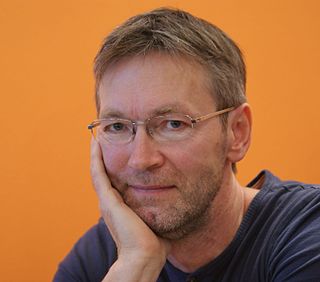
Jan Berglin is a Swedish cartoonist who made his debut in the Uppsala student newspaper Ergo in 1985. After completing his studies, Berglin has been living in Gävle where he works as a teacher of Swedish and religion. He published his early strips in the local social democratic newspaper Arbetarbladet, but became known to a wider audience in 1995, when he started to draw for the Stockholm-based but nationally distributed conservative newspaper Svenska Dagbladet. His strips have been collected and republished in several albums.
Barry Horowitz, American wrestler births
Barry Horowitz is an American professional wrestler, best known for his time in the World Wrestling Federation (WWF).
Kelly Le Brock, English-American actress and model births
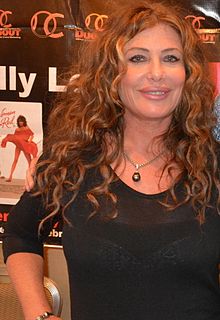
Kelly LeBrock is an American actress and model. Her acting debut was in The Woman in Red (1984), alongside Gene Wilder. She also starred in the John Hughes film Weird Science (1985), and in Hard to Kill (1990), opposite Steven Seagal.
Nena, German singer-songwriter and actress births

Gabriele Susanne Kerner, better known as Nena, is a German singer and songwriter who rose to international fame in 1983 as the lead vocalist of the band Nena with the Neue Deutsche Welle song "99 Luftballons". In the same year the band re-recorded this song in English as "99 Red Balloons". Nena's re-recording of some of the band's old hit songs as a solo artist, produced by the co-composer of most of them, her former Nena band colleague and keyboard player Uwe Fahrenkrog-Petersen, rekindled her solo career in 2002. Combined with the success of the Nena band years, she has sold over 25 million records, making her the most successful German pop singer in chart history.
Scott Pruett, American race car driver births

Scott Donald Pruett is a former American race car driver who has competed in NASCAR, CART, IMSA, Trans-Am and Grand-Am. He and his wife Judy have three children and are children's book authors.
Annabella Sciorra, American actress births

Annabella Gloria Philomena Sciorra is an American actress. She came to prominence with her film debut in True Love (1989), earning an Independent Spirit nomination for Best Female Lead. Subsequent projects included a mixture of mainstream and small-scale films in the drama, comedy, action and thriller genres, such as Cadillac Man, Internal Affairs, Reversal of Fortune, Jungle Fever (1991), The Hand That Rocks the Cradle, Whispers in the Dark, Romeo Is Bleeding, Mr. Wonderful, The Night We Never Met, The Cure (1995), Cop Land, Mr. Jealousy, What Dreams May Come (1998), Chasing Liberty (2004), and Find Me Guilty (2006). She has worked with filmmaker Abel Ferrara three times: The Addiction (1995), The Funeral (1996), and New Rose Hotel (1998).
Emmit King, American sprinter births
Emmit King was an American track and field sprinter, who twice was a member of the American Relay Team for the Summer Olympics but he did not compete. He is best known for winning the bronze medal at the inaugural 1983 World Championships in the men's 100 metres. At the same championships, he was part of the team that won gold in the 4x100 m relay for the United States, and in doing so set a new world record of 37.86 s. He set his personal best (10.04) in the 100 metres on June 17, 1988, at the 1988 USA Outdoor Track and Field Championships in Tampa, Florida.
Renaldo Nehemiah, American hurdler and football player births

Renaldo Nehemiah is a retired American track and field athlete who specialized in the 110 m hurdles. He was ranked number one in the world for four straight years, and is a former world record holder. Nehemiah is the first man to run the event in under 13 seconds. Nehemiah also played pro football in the National Football League (NFL) as a wide receiver for the San Francisco 49ers from 1982 to 1985, before returning to track and field athletics from 1986 to 1991. After retiring from competition, he has worked in sports management.
Derek Statham, English footballer births
Derek James Statham is an English former footballer who played at defensive left-back. He played for West Bromwich Albion, Southampton, Walsall and Stoke City.
Mike Woodson, American basketball player and coach births

Michael Dean Woodson is an American basketball coach and former professional player who is the head coach of the Indiana Hoosiers men's basketball team.
Pierre Harvey, Canadian cyclist and skier births

Pierre Harvey, is a Canadian sports athlete. He was the first Canadian male athlete to compete in both the 1984 Summer Olympics and 1984 Winter Olympics.
Pat Jarvis, Australian rugby league player births
Pat Jarvis is an Australian former rugby league footballer, a state and national representative front-row forward.
Steve Ballmer, American businessman births

Steven Anthony Ballmer is an American business magnate and investor who served as the chief executive officer of Microsoft from 2000 to 2014. He is the current owner of the Los Angeles Clippers of the National Basketball Association (NBA). As of November 2022, Bloomberg Billionaires Index estimates his personal wealth at around $79.7 billion, making him the tenth-richest person on Earth.
Bill Wray, American cartoonist and painter births

William York Wray, known professionally as Bill Wray, is an American cartoonist, animator and landscape painter widely known for his contributions to Mad and The Ren & Stimpy Show, as well as his current focus on regional landscape painting—under the names Bill Wray for his animated work and William Wray for his paintings.
E. T. Whittaker, British mathematician and physicist (b. 1873) deaths

Sir Edmund Taylor Whittaker was a British mathematician, physicist, and historian of science. Whittaker was a leading mathematical scholar of the early 20th-century who contributed widely to applied mathematics and was renowned for his research in mathematical physics and numerical analysis, including the theory of special functions, along with his contributions to astronomy, celestial mechanics, the history of physics, and digital signal processing.
Doug Jarvis, Canadian ice hockey player and coach births

Douglas McArthur Jarvis is a Canadian former professional ice hockey forward who played for the Montreal Canadiens, Washington Capitals and Hartford Whalers in the National Hockey League. Jarvis never missed a regular season game in his NHL career, which began on October 8, 1975, and ran until 1987; from 1986 until 2022, he held the NHL's longest-ever iron man streak. He previously served as an assistant coach for the Boston Bruins of the National Hockey League. He is currently a senior advisor for the Vancouver Canucks.
Pat Price, Canadian ice hockey player and coach births
Shaun Patrick Price is a Canadian former professional ice hockey player who played in the World Hockey Association (WHA) for the Vancouver Blazers and the National Hockey League (NHL) for the New York Islanders, Edmonton Oilers, Pittsburgh Penguins, Quebec Nordiques, New York Rangers and Minnesota North Stars.
Rafael Orozco Maestre, Colombian singer (d. 1992) births

Rafael José Orozco Maestre was a Colombian singer of vallenato music. He was one of the major representatives of Colombian popular folk music and was lead singer and co-founder, alongside fellow accordionist Israel Romero, of the vallenato group Binomio de Oro de América, which was very popular in Colombia, Mexico and Venezuela.
Anita L. Allen, African-American lawyer, philosopher, and academic births

Anita LaFrance Allen is the Henry R. Silverman Professor of Law and professor of philosophy at the University of Pennsylvania Law School. She was formerly Vice Provost for Faculty from 2013 to 2020.
Louie Anderson, American actor and comedian (d. 2022) births

Louis Perry Anderson was an American stand-up comedian, actor, author and game show host. Anderson created the cartoon series Life with Louie and the television sitcom The Louie Show, and wrote four books, including Hey Mom: Stories for My Mother, But You Can Read Them Too, which was published in 2018. He was the fourth host of the game show Family Feud, from 1999 to 2002, in its third run and second revival.
Mary of Teck (b. 1867) deaths

Mary of Teck was Queen of the United Kingdom and the British Dominions, and Empress of India, from 6 May 1910 until 20 January 1936 as the wife of King-Emperor George V.
Greg McCrary, American football player (d. 2013) births
Gregory Alonza McCrary was an American football tight end in the National Football League for the Atlanta Falcons, Washington Redskins, and the San Diego Chargers. He played college football at Clark Atlanta University and was drafted in the fifth round of the 1975 NFL Draft.
Peter Boyle, Scottish-Australian footballer and manager (d. 2013) births
Peter Boyle, was a football striker and manager, who played for Australia at international level.
Pat Bradley, American golfer births
Pat Bradley is an American professional golfer. She became a member of the LPGA Tour in 1974 and won 31 tour events, including six major championships. She is a member of the World Golf Hall of Fame.
Tommy Hilfiger, American fashion designer, founded the Tommy Hilfiger Corporation births

Thomas Jacob Hilfiger is an American fashion designer and the founder of Tommy Hilfiger Corporation.
Tommy Hilfiger B.V., formerly known as Tommy Hilfiger Corporation and Tommy Hilfiger Inc., is an American clothing brand, manufacturing apparel, footwear, accessories, fragrances and home furnishings. The company was founded in 1985, and the brand's merchandise is sold in department stores and over 2000 free-standing retail stores in 100 countries. In 2006, private equity firm Apax Partners acquired the company for approximately $1.6 billion. In March 2010, PVH Corp. bought the company. Daniel Grieder was appointed CEO in July 2014, while founder Tommy Hilfiger remains the company’s principal designer, leading the design teams and overseeing the entire creative process. Global sales in retail through the brand were US $6.4 billion in 2013, and $6.7 billion in 2014.
Dougie Thomson, Scottish bass player births
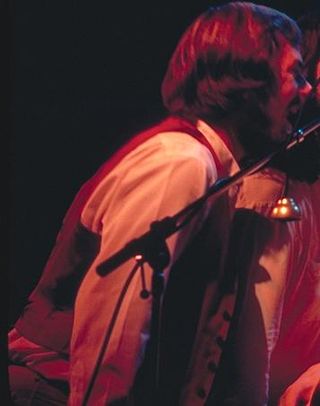
Douglas 'Doogie' Campbell Thomson is a Scottish musician, born in Glasgow and raised in the Rutherglen area of the city. He was the bass guitarist of progressive rock band Supertramp during much of the seventies and eighties.
Anna Włodarczyk, Polish long jumper and coach births
Anna Bożena Włodarczyk is a Polish athlete. She is the 1980 European long jump champion.
Lorna Hodgkinson, Australian educator and educational psychologist (b. 1887) deaths

Lorna Myrtle Hodgkinson was an Australian educator and educational psychologist who worked with intellectually disabled children. She was the first woman to receive a Doctor of Education degree from Harvard University. She called out the poor system in Australia and her reputation was ruined by the minister responsible.

An educational psychologist is a psychologist whose differentiating functions may include diagnostic and psycho-educational assessment, psychological counseling in educational communities, community-type psycho-educational intervention, and mediation, coordination, and referral to other professionals, at all levels of the educational system. Many countries use this term to signify those who provide services to students, their teachers, and families, while other countries use this term to signify academic expertise in teaching Educational Psychology.
Gary Wichard, American football player and agent (d. 2011) births
Gary Theodore Wichard was a college football player and professional sports agent.
James Rudolph Garfield, American lawyer and politician, 23rd United States Secretary of the Interior (b. 1865) deaths

James Rudolph Garfield was an American lawyer and politician. Garfield was a son of President James A. Garfield and First Lady Lucretia Garfield. He served as Secretary of the Interior during President Theodore Roosevelt's administration.
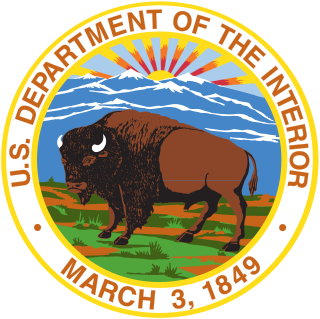
The United States secretary of the interior is the head of the United States Department of the Interior. The secretary and the Department of the Interior are responsible for the management and conservation of most federal land along with natural resources, leading such agencies as the Bureau of Land Management, the United States Geological Survey, Bureau of Indian Affairs and the National Park Service. The secretary also serves on and appoints the private citizens on the National Park Foundation Board. The secretary is a member of the United States Cabinet and reports to the president of the United States. The function of the U.S. Department of the Interior is different from that of the interior minister designated in many other countries.
Tabitha King, American author and poet births
Tabitha Jane King is an American author.
Ruud Krol, Dutch footballer and coach births

Rudolf Jozef Krol is a Dutch former professional footballer who was capped 83 times for the Netherlands national team. Most of his career he played for his home town club, Ajax, and he became a coach after retirement. Regarded as one of the best defenders of all time, Krol mainly played as a sweeper or left-back, however he could play anywhere across the back line, or in midfield as a defensive midfielder, due to his range of passing with both feet, temperament, tactical intelligence, and ability to start attacking plays after winning back the ball.
Steve Lang, Canadian bass player (d. 2017) births
Stephen Keith Lang was a Canadian bassist best known for his time and work with the rock band April Wine from 1976 to 1984 during the band's most successful years.
Nick Lowe, English singer-songwriter, bass player, and producer births

Nicholas Drain Lowe is an English singer-songwriter, musician and producer. A noted figure in power pop and new wave, Lowe has recorded a string of well-reviewed solo albums. Along with vocals, Lowe plays guitar, bass guitar, piano and harmonica.
Ali Akbar Salehi, Iranian academic and politician, 36th Foreign Affairs Minister of Iran births

Ali Akbar Salehi is an Iranian academic, diplomat and former head of the Atomic Energy Organization of Iran, who served in this position from 2009 to 2010 and also from 2013 to 2021. He served for the first time as head of the AEOI from 2009 to 2010 and was appointed to the post for a second time on 16 August 2013. Before the appointment of his latter position, he was foreign affairs minister from 2010 to 2013. He was also the Iranian representative in the International Atomic Energy Agency from 1998 to 2003.

The Ministry of Foreign Affairs is an Iranian government ministry headed by the Minister of Foreign Affairs, who is a member of cabinet. The current Minister of Foreign Affairs is Hossein Amir-Abdollahian, who was approved by the Parliament on 25 August 2021 after being nominated by the President.
Ranil Wickremesinghe, Sri Lankan lawyer and politician, 13th Prime Minister of Sri Lanka births

Ranil Wickremesinghe is a Sri Lankan politician who is the current president of Sri Lanka since 21 July 2022. He also holds the position of Minister of Finance of Sri Lanka. He has been the leader of the centre-right United National Party since 1994. He served as Prime Minister of Sri Lanka in five separate stints, leading six governments, from 1993 to 1994, 2001 to 2004, 2015 to 2018, 2018 to 2019, and in 2022. He also served as Leader of the Opposition from 1994 to 2001 and from 2004 to 2015.

The Prime Minister of the Democratic Socialist Republic of Sri Lanka is the head and most senior member of parliament in the cabinet of ministers. It is the second-most powerful position in Sri Lanka's executive branch behind the president, who is the constitutional chief executive. The Cabinet is collectively held accountable to parliament for their policies and actions.
Javier Diez Canseco, Peruvian sociologist and politician (d. 2013) births

Javier Diez Canseco Cisneros was a Peruvian politician and member of the Peruvian Congress representing the Socialist Party of Peru (PS), of which he was a founding member and also served as its Party President.
Jerzy Kukuczka, Polish mountaineer (d. 1989) births

Józef Jerzy Kukuczka was a Polish alpine and high-altitude climber. Born in Katowice, his family origin is Silesian Goral. On 18 September 1987, he became the second man, to climb all fourteen eight-thousanders in the world; a feat which took him less than 8 years to accomplish. He is the only person in the world who has climbed two eight-thousanders in one winter. Altogether, he ascended four eight-thousanders in winter, including three as first ascents. Along with Tadeusz Piotrowski, Kukuczka established a new route on K2 in alpine style, which no one has repeated.
Lee Oskar, Jewish-Danish musician births

Lee Oskar is a Danish harmonica player, notable for his contributions to the sound of the rock-funk fusion group War, which was formed by Howard E. Scott and Harold Brown, his solo work, and as a harmonica manufacturer. He continues to play with 3 other original War band members, Harold Brown, Howard Scott and B.B. Dickerson, under the name LowRider Band.
Sigrid Hjertén, Swedish painter and illustrator (b. 1885) deaths
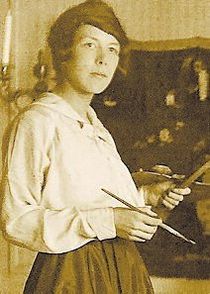
Sigrid Hjertén was a Swedish modernist painter. Hjertén is considered a major figure in Swedish modernism. Periodically she was highly productive and participated in 106 exhibitions. She worked as an artist for 30 years before dying of complications from a botched lobotomy for schizophrenia.
Dennis Erickson, American football player and coach births
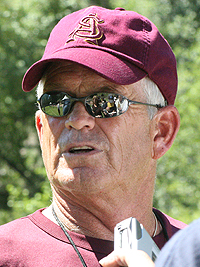
Dennis Brian Erickson is an American football coach who most recently served as the head coach for the Salt Lake Stallions of the Alliance of American Football league. He was also the head coach at the University of Idaho, the University of Wyoming (1986), Washington State University (1987–1988), the University of Miami (1989–1994), Oregon State University (1999–2002), and Arizona State University (2007–2011). During his tenure at Miami, Erickson's teams won two national championships, in 1989 and 1991. His record as a college football head coach is 179–96–1 (.650).
Christine Gregoire, American lawyer and politician, 22nd Governor of Washington births

Christine Gregoire is an American politician who served as the 22nd governor of Washington from 2005 to 2013. A member of the Democratic Party, she defeated Republican candidate Dino Rossi in 2004, and again in 2008. She is the second female governor of Washington. Gregoire chaired the National Governors Association for the 2010–2011 term. She also served on the Governors' Council of the Bipartisan Policy Center in Washington, D. C.

The governor of Washington is the head of government of Washington and commander-in-chief of the state's military forces. The officeholder has a duty to enforce state laws, the power to either approve or veto bills passed by the Washington Legislature and line-item veto power to cancel specific provisions in spending bills. The Washington governor may also convene the legislature on "extraordinary occasions".
Mick Jones, English footballer and coach births

Michael Jones was an English professional footballer and coach.
Alan Sugar, English businessman births

Alan Michael Sugar, Baron Sugar is a British business magnate, media personality, author, politician and political adviser. In 1968, he started what would later become his largest business venture, consumer electronics company Amstrad. In 2007, he sold his remaining interest in the company in a deal to BSkyB for £125m.
Klaus Dinger, German guitarist and songwriter (d. 2008) births

Klaus Dinger was a German musician and songwriter most famous for his contributions to the seminal krautrock band Neu!. He was also the guitarist and chief songwriter of new wave group La Düsseldorf and briefly the percussionist of Kraftwerk.
Kitty O'Neil, American stuntwoman (d. 2018) births
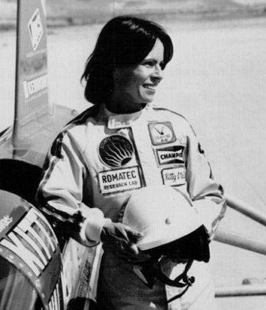
Kitty Linn O'Neil was an American stuntwoman and racer, known as "the fastest woman in the world". An illness in early childhood left her deaf, and more illnesses in early adulthood cut short a career in driving. O'Neil's career as a stuntwoman and race driver led to her depiction in a television movie and as an action figure. Her women's absolute land speed record stood until 2019.
Alexander Alekhine, Russian chess player (b. 1892) deaths

Alexander Aleksandrovich Alekhine was a Russian and French chess player and the fourth World Chess Champion, a title he held for two reigns.
Carl Schuhmann, German gymnast, shot putter, and jumper (b. 1869) deaths

Carl August Berthold Schuhmann was a German athlete who won four Olympic titles in gymnastics and wrestling at the 1896 Summer Olympics in Athens, becoming the most successful athlete at the inaugural Olympics of the modern era. He also competed in weightlifting.
Robert T. Bakker, American paleontologist and academic births
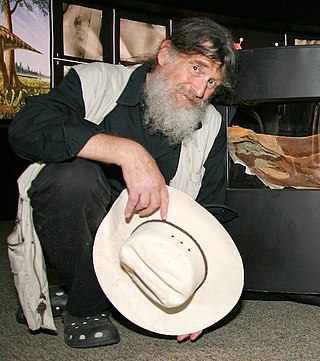
Robert Thomas Bakker is an American paleontologist who helped reshape modern theories about dinosaurs, particularly by adding support to the theory that some dinosaurs were endothermic (warm-blooded). Along with his mentor John Ostrom, Bakker was responsible for initiating the ongoing "dinosaur renaissance" in paleontological studies, beginning with Bakker's article "Dinosaur Renaissance" in the April 1975 issue of Scientific American. His specialty is the ecological context and behavior of dinosaurs.
Curtis Hanson, American director, producer, and screenwriter (d. 2016) births

Curtis Lee Hanson was an American film director, screenwriter, and producer. His directing work included the psychological thriller The Hand That Rocks the Cradle (1992), the neo-noir crime film L.A. Confidential (1997), the comedy Wonder Boys (2000), the hip-hop biopic 8 Mile (2002), the romantic comedy-drama In Her Shoes (2005), and the made-for-television docudrama Too Big to Fail (2011).
Patrick Malahide, English actor and screenwriter births
Patrick Gerald Duggan, known professionally as Patrick Malahide, is a veteran British film, television and theatre actor, author and producer, known, amongst other things, for his roles as Inspector Alleyn in The Inspector Alleyn Mysteries, Detective Sergeant Albert “Charlie” Chisholm in the TV series Minder, Balon Greyjoy in the TV series Game of Thrones as well as the big screen in a number of international films.
R. Lee Ermey, American sergeant and actor (d. 2018) births
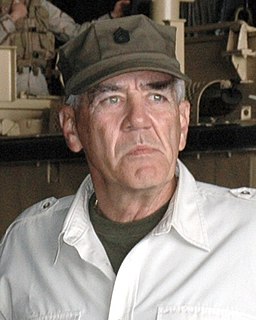
Ronald Lee Ermey was an American actor and U.S. Marine drill instructor. He achieved fame for his role as Gunnery Sergeant Hartman in the 1987 film Full Metal Jacket, which earned him a Golden Globe nomination for Best Supporting Actor. Ermey was also a United States Marine Corps staff sergeant and an honorary gunnery sergeant.
Vojislav Koštunica, Serbian academic and politician, 8th Prime Minister of Serbia births
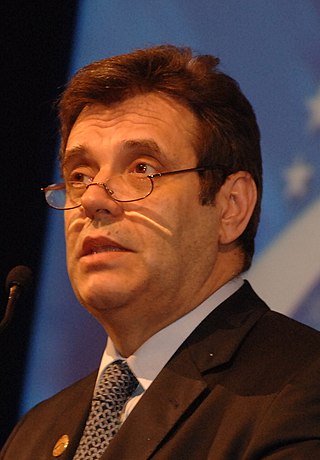
Vojislav Koštunica is a Serbian former politician and statesman who served as the last president of FR Yugoslavia from 2000 to 2003, and as the prime minister of Serbia for two terms.

The prime minister of Serbia, officially the president of the Government of the Republic of Serbia is the principal executive minister of the Government of Serbia. The prime minister directs the work of the government, and submits to the National Assembly the government's program, including a list of proposed ministers. The resignation of the prime minister results in the dismissal of the government.
Orde Wingate, Indian-English general (b. 1903) deaths
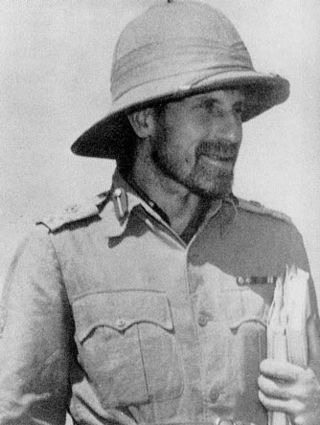
Major General Orde Charles Wingate, was a senior British Army officer known for his creation of the Chindit deep-penetration missions in Japanese-held territory during the Burma Campaign of the Second World War.
Michael Masser, American songwriter, composer and producer (d. 2015) births

Michael William Masser was an American songwriter, composer and producer of popular music.
Bob Mackie, American fashion designer births

Robert Gordon "Bob" Mackie is an American fashion designer and costumier, best known for his dressing of entertainment icons such as Lucille Ball, Carol Burnett, Diahann Carroll, Carol Channing, Cher, Doris Day, Marlene Dietrich, Barbara Eden, Lola Falana, Farrah Fawcett, Judy Garland, Mitzi Gaynor, Liza Minnelli, Marilyn Monroe, Marie Osmond, Diana Ross, Tina Turner, Julia Louis-Dreyfuss, and Barbra Streisand, among others. He was the costume designer for all the performers on The Carol Burnett Show during its entire eleven-year run. For his work, Mackie has received nine Primetime Emmy Awards, a Tony Award, and three nominations for the Academy Award for Best Costume Design.
Édouard Branly, French physicist and academic (b. 1844) deaths

Édouard Eugène Désiré Branly was a French inventor, physicist and professor at the Institut Catholique de Paris. He is primarily known for his early involvement in wireless telegraphy and his invention of the Branly coherer around 1890.
David Irving, English historian and author births
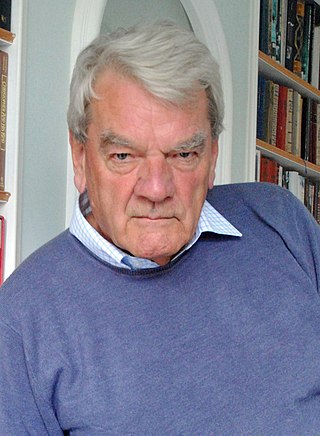
David John Cawdell Irving is an English author and Holocaust denier who has written on the military and political history of World War II, with a focus on Nazi Germany. His works include The Destruction of Dresden (1963), Hitler's War (1977), Churchill's War (1987) and Goebbels: Mastermind of the Third Reich (1996). In his works, he argued that Adolf Hitler did not know of the extermination of Jews, or, if he did, he opposed it. Though Irving's negationist claims and views of German war crimes in World War II were never taken seriously by mainstream historians, he was once recognised for his knowledge of Nazi Germany and his ability to unearth new historical documents.
Yondonwangchug, Mongolian politician (b. 1870) deaths

Yondonwangchug was an Inner Mongolian nobleman of Ulanqab League and politician under the Qing Dynasty, Republic of China and Mengjiang governments.
Billy Stewart, American singer and pianist (d. 1970) births

William Larry Stewart II was an American rhythm and blues singer and pianist who was popular during the 1960s.
Don Covay, American singer-songwriter (d. 2015) births
Donald James Randolph, better known by the stage name Don Covay, was an American R&B, rock and roll, and soul singer-songwriter most active from the 1950s to the 1970s.
Alex Olmedo, Peruvian-American tennis player (d. 2020) births
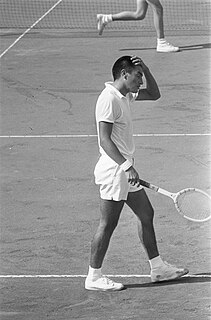
Alejandro "Alex" Olmedo Rodríguez was a tennis player from Peru with American citizenship. He was listed by the USTA as a "foreign" player for 1958, but as a U.S. player for 1959. He helped win the Davis Cup for the United States in 1958 and was the No. 2 ranked amateur in 1959. Olmedo won two Majors in 1959 and the U.S. Pro Championships in 1960, and was inducted into the Tennis Hall of Fame in 1987.
Stephen De Staebler, American sculptor and educator (d. 2011) births

Stephen De Staebler was an American sculptor, printmaker, and educator, he was best recognized for his work in clay and bronze. Totemic and fragmented in form, De Staebler's figurative sculptures call forth the many contingencies of the human condition, such as resiliency and fragility, growth and decay, earthly boundedness and the possibility for spiritual transcendence. An important figure in the California Clay Movement, he is credited with "sustaining the figurative tradition in post-World War II decades when the relevance and even possibility of embracing the human figure seemed problematic at best."
Lee Mendelson, American television producer (d. 2019) births

Leland Maurice Mendelson was an American animation producer and the executive producer of the many Peanuts animated specials.
Frantz Reichel, French rugby player and hurdler (b. 1871) deaths
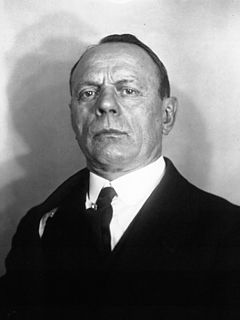
François Étienne "Frantz" Reichel was a French sports administrator, athlete, cyclist and journalist. He competed at the 1896 Summer Olympics in Athens as a runner and at the 1900 Summer Olympics in Paris as a rugby union player. He co-founded the Association Internationale de la Presse Sportive (AIPS), and served as its first president in 1924–1932.
Hanno Drechsler, German educator and politician, Mayor of Marburg (d. 2003) births

Hanno Drechsler was the Lord Mayor of the City of Marburg, Germany between 1970 and 1992, and the instigator of its restoration after urban renewal; he was also an important Social Democratic politician and political scientist.

This is a list of all the mayors of Marburg in Germany since 1835.
David Dacko, Central African politician, 1st President of the Central African Republic (d. 2003) births

David Dacko was a Central African politician who served as the first president of the Central African Republic from 14 August 1960 to 1 January 1966, and 3rd President from 21 September 1979 to 1 September 1981. After his second removal from power in a coup d'état led by General André Kolingba, he pursued an active career as an opposition politician and presidential candidate with many loyal supporters; Dacko was an important political figure in the country for over 50 years.

This article lists the heads of state of the Central African Republic. There have been seven heads of state of the Central African Republic and the Central African Empire since independence was obtained from the French on 13 August 1960. This list includes not only those persons who were sworn into office as President of the Central African Republic but also those who served as de facto heads of state.
Steve McQueen, American actor and producer (d. 1980) births

Terrence Stephen McQueen was an American actor. His antihero persona, emphasized during the height of the counterculture of the 1960s, made him a top box-office draw for his films of the late 1950s, 1960s, and 1970s. He was nicknamed the "King of Cool" and used the alias Harvey Mushman in motor races.
Pat Renella, Italian-American actor (d. 2012) births

Pat Renella was an American actor. His motion picture debut was as an engineer in the space drama X-15 (1961) starring David McLean and Charles Bronson.
Byron Janis, American pianist and composer births

Byron Janis is an American classical pianist. He made several recordings for RCA Victor and Mercury Records, and occupies two volumes of the Philips series Great Pianists of the 20th Century. His discography covers repertoire from Bach to David W. Guion and includes major piano concertos from Mozart to Rachmaninoff and Liszt to Prokofiev.
John Woodland Hastings, American biochemist and academic (d. 2014) births
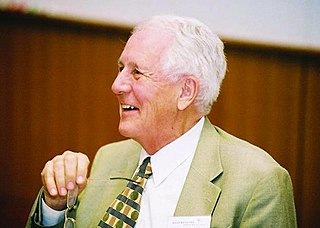
John Woodland "Woody" Hastings, was a leader in the field of photobiology, especially bioluminescence, and was one of the founders of the field of circadian biology. He was the Paul C. Mangelsdorf Professor of Natural Sciences and Professor of Molecular and Cellular Biology at Harvard University. He published over 400 papers and co-edited three books.
Martin Walser, German author and playwright births
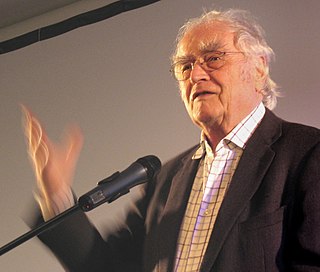
Martin Walser is a German writer.
Desmond Connell, Irish cardinal (d. 2017) births
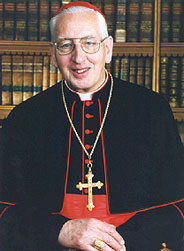
Desmond Connell was an Irish cardinal in the Roman Catholic Church. He was an Archbishop of Dublin and Primate of Ireland. Cardinal Connell was one of a number of senior clergy to have been heavily criticised for inaction and for making misleading statements in connection with clerical sex abuse in Dublin. He died on 21 February 2017, aged 90.
Dario Fo, Italian playwright, actor, director, and composer, Nobel Prize laureate (d. 2016) births
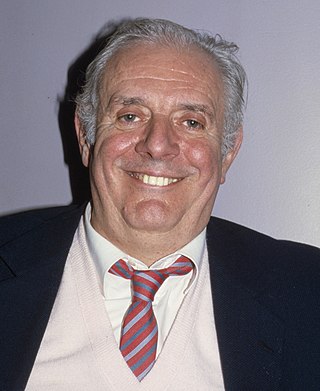
Dario Luigi Angelo Fo was an Italian playwright, actor, theatre director, stage designer, songwriter, political campaigner for the Italian left wing and the recipient of the 1997 Nobel Prize in Literature. In his time he was "arguably the most widely performed contemporary playwright in world theatre". Much of his dramatic work depends on improvisation and comprises the recovery of "illegitimate" forms of theatre, such as those performed by giullari and, more famously, the ancient Italian style of commedia dell'arte.

The Nobel Prize in Literature is a Swedish literature prize that is awarded annually, since 1901, to an author from any country who has, in the words of the will of Swedish industrialist Alfred Nobel, "in the field of literature, produced the most outstanding work in an idealistic direction". Though individual works are sometimes cited as being particularly noteworthy, the award is based on an author's body of work as a whole. The Swedish Academy decides who, if anyone, will receive the prize. The academy announces the name of the laureate in early October. It is one of the five Nobel Prizes established by the will of Alfred Nobel in 1895. Literature is traditionally the final award presented at the Nobel Prize ceremony. On some occasions the award has been postponed to the following year, most recently in 2018 as of May 2022.
William Porter, American hurdler (d. 2000) births

William "Bill" Franklin Porter III was an American track and field athlete, gold medal winner of the 110-meter hurdles at the 1948 Summer Olympics.
Phan Châu Trinh, Vietnamese activist (b. 1872) deaths

Phan Châu Trinh, courtesy name Tử Cán (梓幹), pen name Tây Hồ (西湖) or Hi Mã (希馬), was an early 20th-century Vietnamese nationalist. He sought to end France's colonial occupation of Vietnam. He opposed both violence and turning to other countries for support, and instead believed in attaining Vietnamese liberation by educating the population and by appealing to French democratic principles.
Puig Aubert, German-French rugby league player and coach (d. 1994) births

Puig Aubert, is often considered the best French rugby league footballer of all-time. Over a 16-year professional career he would play for Carcassonne, XIII Catalan, Celtic de Paris and Castelnaudary winning five French championships and four French cups along with representing the France on 46 occasions. His position of choice was at fullback and after his retirement in 1960 he would go on to coach Carcassonne and France along with becoming head French national selector for several years.
Norman Fell, American actor (d. 1998) births
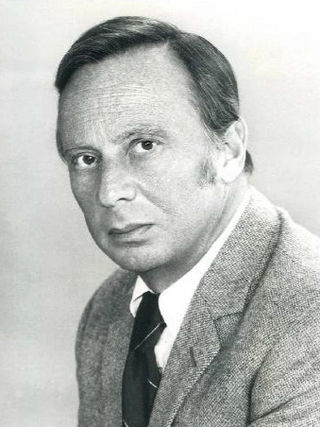
Norman Fell was an American actor of film and television, most famous for his role as landlord Mr. Roper on the sitcom Three's Company and its spin-off, The Ropers, and his film roles in Ocean's 11 (1960), The Graduate (1967), and Bullitt (1968). Early in his career, he was billed as Norman Feld.
Murray Hamilton, American actor (d. 1986) births

Murray Hamilton was an American stage, screen, and television character actor who appeared in such films as Anatomy of a Murder, The Hustler, The Graduate, Jaws and The Amityville Horror.
Michael Legat, English author and publisher (d. 2011) births
Michael Legat was a British writer of writers' guides and romance novels. He was Chairman of Swanwick writers' summer school and an associate vice-president of the Romantic Novelists' Association.
Onna White, Canadian dancer and choreographer (d. 2005) births
Onna White was a Canadian choreographer and dancer, nominated for eight Tony Awards.
Franciszek Blachnicki, Polish priest (d. 1987) births

Franciszek Blachnicki was a Polish Roman Catholic priest and the founder of the Light-Life movement - also known as the Oasis Movement - and the Secular Institute of the Immaculate Mother of the Church. He founded several other movements and religious congregations that would address a range of social and ethical issues. These issues included anti-alcoholism and human rights. His movements first came about after starting out as simple retreats designed for both altar servers and families that later began to address a series of issues in Poland at the time. His concern for human rights came during the communist era in Poland as well as his experiences as a prisoner of war during World War II in which he was incarcerated in Auschwitz and other concentration camps under the German Nazi regime.
Vasily Smyslov, Russian chess player (d. 2010) births

Vasily Vasilyevich Smyslov was a Soviet and Russian chess grandmaster, who was World Chess Champion from 1957 to 1958. He was a Candidate for the World Chess Championship on eight occasions. Smyslov twice tied for first place at the USSR Chess Championships, and his total of 17 Chess Olympiad medals won is an all-time record. In five European Team Championships, Smyslov won ten gold medals.
Gene Nelson, American actor, director, and screenwriter (d. 1996) births
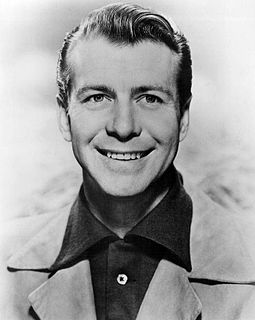
Gene Nelson was an American actor, dancer, screenwriter, and director.
Mary Stolz, American author (d. 2006) births
Mary Stolz was an American writer of fiction for children and young adults. She received the 1953 Child Study Association of America's Children's Book Award for In a Mirror, Newbery Honors in 1962 for Belling the Tiger and 1966 for The Noonday Friends, and her entire body of work was awarded the George G. Stone Recognition of Merit in 1982.
Lawrence Ferlinghetti, American poet and publisher, co-founded City Lights Bookstore (d. 2021) births

Lawrence Monsanto Ferlinghetti was an American poet, painter, social activist, and co-founder of City Lights Booksellers & Publishers. The author of poetry, translations, fiction, theatre, art criticism, and film narration, Ferlinghetti was best known for his second collection of poems, A Coney Island of the Mind (1958), which has been translated into nine languages and sold over a million copies. When Ferlinghetti turned 100 in March 2019, the city of San Francisco turned his birthday, March 24, into "Lawrence Ferlinghetti Day".

City Lights is an independent bookstore-publisher combination in San Francisco, California, that specializes in world literature, the arts, and progressive politics. It also houses the nonprofit City Lights Foundation, which publishes selected titles related to San Francisco culture. It was founded in 1953 by poet Lawrence Ferlinghetti and Peter D. Martin. Both the store and the publishers became widely known following the obscenity trial of Ferlinghetti for publishing Allen Ginsberg's influential collection Howl and Other Poems. Nancy Peters started working there in 1971 and retired as executive director in 2007. In 2001, City Lights was made an official historic landmark. City Lights is located at 261 Columbus Avenue. While formally located in Chinatown, it self-identifies as part of immediately adjacent North Beach.
Robert Heilbroner, American economist and historian (d. 2005) births
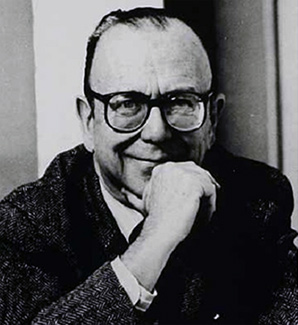
Robert L. Heilbroner was an American economist and historian of economic thought. The author of some 20 books, Heilbroner was best known for The Worldly Philosophers: The Lives, Times and Ideas of the Great Economic Thinkers (1953), a survey of the lives and contributions of famous economists, notably Adam Smith, Karl Marx, and John Maynard Keynes.
Constantine Andreou, Greek painter and sculptor (d. 2007) births
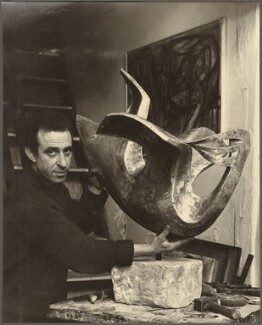
Constantine Andreou was a painter and sculptor of Greek origin with a highly successful career that spanned six decades. Andreou has been praised by many as an eminent figure in international art of the 20th century.
John Kendrew, English biochemist and crystallographer, Nobel Prize laureate (d. 1997) births

Sir John Cowdery Kendrew, was an English biochemist, crystallographer, and science administrator. Kendrew shared the 1962 Nobel Prize in Chemistry with Max Perutz, for their work at the Cavendish Laboratory to investigate the structure of heme-containing proteins.

The Nobel Prize in Chemistry is awarded annually by the Royal Swedish Academy of Sciences to scientists in the various fields of chemistry. It is one of the five Nobel Prizes established by the will of Alfred Nobel in 1895, awarded for outstanding contributions in chemistry, physics, literature, peace, and physiology or medicine. This award is administered by the Nobel Foundation, and awarded by the Royal Swedish Academy of Sciences on proposal of the Nobel Committee for Chemistry which consists of five members elected by the Academy. The award is presented in Stockholm at an annual ceremony on 10 December, the anniversary of Nobel's death.
Donald Hamilton, Swedish-American soldier and author (d. 2006) births
Donald Bengtsson Hamilton was an American writer of novels, short stories, and non-fiction about the outdoors. His novels consist mostly of paperback originals, principally spy fiction, but also crime fiction and westerns, such as The Big Country. He is best known for his long-running Matt Helm series (1960-1993), which chronicles the adventures of an undercover counter-agent/assassin working for a secret American government agency. The noted critic Anthony Boucher wrote: "Donald Hamilton has brought to the spy novel the authentic hard realism of Dashiell Hammett; and his stories are as compelling, and probably as close to the sordid truth of espionage, as any now being told."
Harry B. Whittington, English palaeontologist and academic (d. 2010) births
Harry Blackmore Whittington FRS was a British palaeontologist who made a major contribution to the study of fossils of the Burgess Shale and other Cambrian fauna. His works are largely responsible for the concept of Cambrian explosion, whereby modern animal body plans are explained to originate during a short span of geological period. With initial work on trilobites, his discoveries revealed that these arthropods were the most diversified of all invertebrates during the Cambrian Period. He was responsible for setting the standard for naming and describing the delicate fossils preserved in Konservat-Lagerstätten.
Enrique Granados, Spanish pianist and composer (b. 1867) deaths
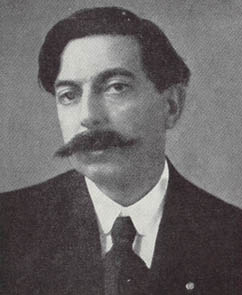
Pantaleón Enrique Joaquín Granados y Campiña, commonly known as Enric Granados in Catalan or Enrique Granados in Spanish, was a composer of classical music, and concert pianist from Catalonia, Spain. His most well-known works include Goyescas, the Spanish Dances, and María del Carmen.
Eugène Martin, French racing driver (d. 2006) births
Eugène Martin was a racing driver from France. He participated in two Formula One World Championship Grands Prix, debuting on May 13, 1950. He scored no championship points.
Margaret Lindsay Huggins, Anglo-Irish astronomer (b. 1848) deaths

Margaret Lindsay, Lady Huggins , born Margaret Lindsay Murray, was an Irish-English scientific investigator and astronomer. With her husband William Huggins she was a pioneer in the field of spectroscopy and co-wrote the Atlas of Representative Stellar Spectra (1899).
Karol Olszewski, Polish chemist, mathematician, and physicist (b. 1846) deaths

Karol Stanisław Olszewski was a Polish chemist, mathematician and physicist.
Dorothy Height, African-American educator and activist (d. 2010) births

Dorothy Irene Height was an African American civil rights and women's rights activist. She focused on the issues of African American women, including unemployment, illiteracy, and voter awareness. Height is credited as the first leader in the civil rights movement to recognize inequality for women and African Americans as problems that should be considered as a whole. She was the president of the National Council of Negro Women for 40 years.
Joseph Barbera, American animator, director, and producer, co-founded Hanna-Barbera (d. 2006) births

Joseph Roland Barbera was an American animator, director, producer, storyboard artist, and cartoon artist who co-founded the animation studio and production company Hanna-Barbera.

Hanna-Barbera Cartoons, Inc. was an American animation studio and production company that produced animated programming until 2001. It was founded on July 7, 1957, by Tom and Jerry creators and former MGM cartoon studio staff William Hanna and Joseph Barbera. Their shows included Huckleberry Hound, Quick Draw McGraw, The Flintstones, Yogi Bear, The Jetsons, Jonny Quest, Wacky Races, Scooby-Doo and The Smurfs. Its cartoons won a record-breaking eight Emmys.
Richard Conte, American actor, singer, and director (d. 1975) births

Nicholas Peter Conte, known professionally as Richard Conte, was an American actor. He appeared in more than 100 films from the 1940s through 1970s, including I'll Cry Tomorrow, Ocean's 11, and The Godfather.
Clyde Barrow, American criminal (d. 1934) births

Bonnie Elizabeth Parker and Clyde Chestnut (Champion) Barrow were an American criminal couple who traveled the Central United States with their gang during the Great Depression. The couple were known for their bank robberies, although they preferred to rob small stores or rural funeral homes. Their exploits captured the attention of the American press and its readership during what is occasionally referred to as the "public enemy era" between 1931 and 1934, until the couple were ambushed and shot to death in Bienville Parish, Louisiana. They are believed to have murdered at least nine police officers and four civilians.
Richard Wurmbrand, Romanian pastor and evangelist (d. 2001) births
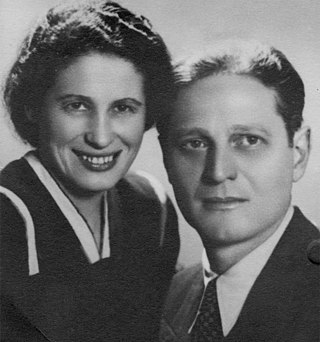
Richard Wurmbrand, also known as Nicolai Ionescu was a Romanian Evangelical Lutheran priest, and professor of Jewish descent. In 1948, having become a Christian ten years before, he publicly said Communism and Christianity were incompatible. Wurmbrand preached at bomb shelters and rescued Jews during World War II. As a result, he experienced imprisonment and torture by the then-Communist regime of Romania, which maintained a policy of state atheism.
John Millington Synge, Irish playwright and poet (b. 1871) deaths
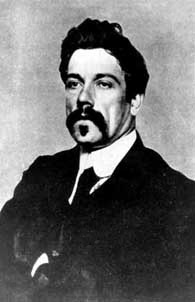
Edmund John Millington Synge was an Irish playwright, poet, writer, collector of folklore, and a key figure in the Irish Literary Revival. His best known play The Playboy of the Western World was poorly received, due to its bleak ending, depiction of Irish peasants, and idealisation of parricide, leading to hostile audience reactions and riots in Dublin during its opening run at the Abbey Theatre, Dublin, which he had co-founded with W. B. Yeats and Lady Gregory. His other major works include In the Shadow of the Glen (1903), Riders to the Sea (1904), The Well of the Saints (1905), and The Tinker's Wedding (1909).
Paul Sauvé, Canadian lawyer and politician, 17th Premier of Quebec (d. 1960) births
Joseph-Mignault-Paul Sauvé was a Canadian lawyer, World War II veteran, and politician. He was the 17th premier of Quebec in 1959 and 1960.

The premier of Quebec is the head of government of the Canadian province of Quebec. The current premier of Quebec is François Legault of the Coalition Avenir Québec, sworn in on October 18, 2018, following that year's election.
Pura Santillan-Castrence, Filipino author and diplomat (d. 2007) births
Pura Santillan-Castrence was a Filipino writer and diplomat. Of Filipino women writers, she was among the first to gain prominence writing in the English language. She was named a Chevalier de Légion d'honneur by the French government.
Jules Verne, French novelist, poet, and playwright (b. 1828) deaths

Jules Gabriel Verne was a French novelist, poet, and playwright. His collaboration with the publisher Pierre-Jules Hetzel led to the creation of the Voyages extraordinaires, a series of bestselling adventure novels including Journey to the Center of the Earth (1864), Twenty Thousand Leagues Under the Seas (1870), and Around the World in Eighty Days (1872). His novels, always well documented, are generally set in the second half of the 19th century, taking into account the technological advances of the time.
Adolf Butenandt, German biochemist and academic, Nobel Prize laureate (d. 1995) births
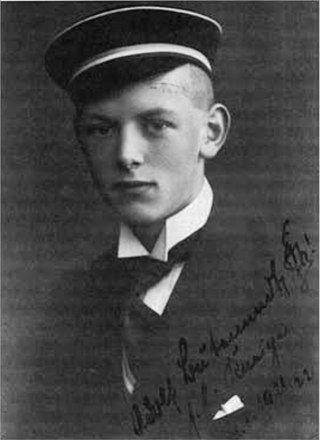
Adolf Friedrich Johann Butenandt was a German biochemist. He was awarded the Nobel Prize in Chemistry in 1939 for his "work on sex hormones." He initially rejected the award in accordance with government policy, but accepted it in 1949 after World War II. He was President of the Max Planck Society from 1960 to 1972. He was also the first, in 1959, to discover the structure of the sex pheromone of silkworms which he named as bombykol.

The Nobel Prize in Chemistry is awarded annually by the Royal Swedish Academy of Sciences to scientists in the various fields of chemistry. It is one of the five Nobel Prizes established by the will of Alfred Nobel in 1895, awarded for outstanding contributions in chemistry, physics, literature, peace, and physiology or medicine. This award is administered by the Nobel Foundation, and awarded by the Royal Swedish Academy of Sciences on proposal of the Nobel Committee for Chemistry which consists of five members elected by the Academy. The award is presented in Stockholm at an annual ceremony on 10 December, the anniversary of Nobel's death.
Malcolm Muggeridge, English journalist, author, and scholar (d. 1990) births

Thomas Malcolm Muggeridge was an English journalist and satirist. His father, H. T. Muggeridge, was a socialist politician and one of the early Labour Party Members of Parliament. In his twenties, Muggeridge was attracted to communism and went to live in the Soviet Union in the 1930s, and the experience turned him into an anti-communist.
Thomas E. Dewey, American lawyer and politician, 47th Governor of New York (d. 1971) births

Thomas Edmund Dewey was an American lawyer, prosecutor, and politician who served as the 47th governor of New York from 1943 to 1954.

The governor of New York is the head of government of the U.S. state of New York. The governor is the head of the executive branch of New York's state government and the commander-in-chief of the state's military forces. The governor has a duty to enforce state laws and the power to either approve or veto bills passed by the New York Legislature, to convene the legislature and grant pardons, except in cases of impeachment and treason. The governor is the highest paid governor in the country.
Ub Iwerks, American animator, director, and producer, co-created Mickey Mouse (d. 1971) births
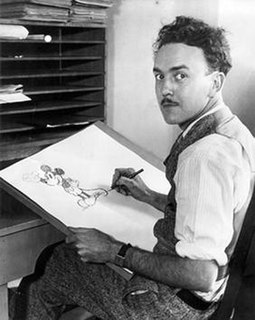
Ubbe Ert Iwwerks, known as Ub Iwerks, was an American animator, cartoonist, character designer, inventor, and special effects technician. Born in Kansas City, Missouri, Iwerks grew up with a contentious relationship with his father, who abandoned him as a child. Iwerks met fellow artist Walt Disney while working at a Kansas City art studio in 1919. After briefly working as illustrators for a local newspaper company, Disney and Iwerks ventured into animation together. Iwerks joined Disney as chief animator on the Laugh-O-Gram shorts series beginning in 1922, but a studio bankruptcy would cause Disney to relocate to Los Angeles in 1923. In the new studio, Iwerks continued to work with Disney on the Alice Comedies as well as the creation of the Oswald the Lucky Rabbit character. Following the first Oswald short, both Universal Pictures and the Winkler Pictures production company insisted that the Oswald character be redesigned. At the insistence of Disney, Iwerks designed a number of new characters for the studio, including designs that would be used for Clarabelle Cow and Horace Horsecollar.

Mickey Mouse is an animated cartoon character co-created in 1928 by Walt Disney and Ub Iwerks. The longtime mascot of The Walt Disney Company, Mickey is an anthropomorphic mouse who typically wears red shorts, large yellow shoes, and white gloves. Taking inspiration from such silent film personalities as Charlie Chaplin’s Tramp, Mickey is traditionally characterized as a sympathetic underdog who gets by on pluck and ingenuity. The character’s status as a small mouse was personified through his diminutive stature and falsetto voice, the latter of which was originally provided by Disney. Mickey is one of the world's most recognizable and universally acclaimed fictional characters of all time.
Wilhelm Reich, Austrian-American psychotherapist and academic (d. 1957) births

Wilhelm Reich was an Austrian doctor of medicine and a psychoanalyst, along with being a member of the second generation of analysts after Sigmund Freud. The author of several influential books, most notably The Impulsive Character (1925), The Function of the Orgasm (1927), Character Analysis (1933), and The Mass Psychology of Fascism (1933), he became known as one of the most radical figures in the history of psychiatry.
Walter Baade, German astronomer and author (d. 1960) births

Wilhelm Heinrich Walter Baade was a German astronomer who worked in the United States from 1931 to 1959.
George Sisler, American baseball player and scout (d. 1973) births

George Harold Sisler, nicknamed "Gorgeous George", was an American professional baseball first baseman and player-manager. From 1915 through 1930, he played in Major League Baseball (MLB) for the St. Louis Browns, Washington Senators, and Boston Braves. He managed the Browns from 1924 through 1926.
Marston Morse, American mathematician and academic (d. 1977) births

Harold Calvin Marston Morse was an American mathematician best known for his work on the calculus of variations in the large, a subject where he introduced the technique of differential topology now known as Morse theory. The Morse–Palais lemma, one of the key results in Morse theory, is named after him, as is the Thue–Morse sequence, an infinite binary sequence with many applications. In 1933 he was awarded the Bôcher Memorial Prize for his work in mathematical analysis.
Sergey Ivanovich Vavilov, Russian physicist and academic (d. 1951) births
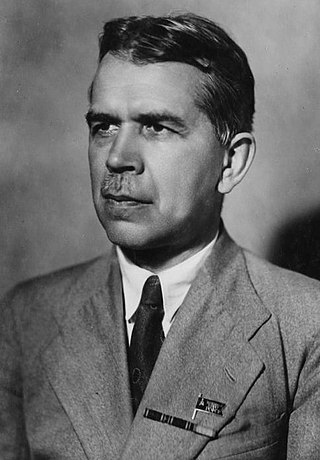
Sergey Ivanovich Vavilov (Russian: Серге́й Ива́нович Вави́лов was a Soviet physicist, the President of the Academy of Sciences of the Soviet Union from July 1945 until his death. His elder brother Nikolai Vavilov was a famous Russian geneticist.
Agnes Macphail, Canadian educator and politician (d. 1954) births
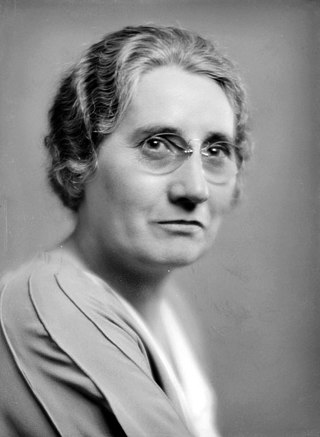
Agnes Campbell MacPhail was a Canadian politician and the first woman elected to Canada's House of Commons. She served as a Member of Parliament (MP) from 1921 to 1940; from 1943 to 1945 and again from 1948 to 1951, she served as a member of the Legislative Assembly of Ontario, representing the Toronto riding of York East. Active throughout her life in progressive politics, Macphail worked for multiple parties, most prominently the Progressive Party and the Co-operative Commonwealth Federation. She promoted her ideas through column-writing, activist organizing, and legislation.
Albert Hill, English-Canadian runner (d. 1969) births
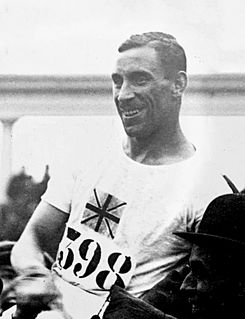
Albert George Hill was a British track and field athlete. He competed at the 1920 Olympics and won gold medals in the 800 m and 1500 m and a silver medal in the 3000 m team race.
Viktor Kingissepp, Estonian politician (d. 1922) births

Viktor Eduard Kingissepp was an Estonian communist politician, the leader of the Estonian Communist Party.
Vsevolod Garshin, Russian author (b. 1855) deaths
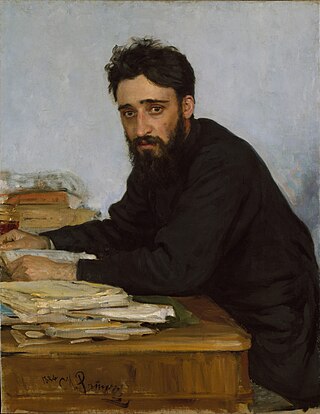
Vsevolod Mikhailovich Garshin was a Russian author of short stories.
Roscoe Arbuckle, American actor, director, and screenwriter (d. 1933) births

Roscoe Conkling "Fatty" Arbuckle was an American silent film actor, comedian, director, and screenwriter. He started at the Selig Polyscope Company and eventually moved to Keystone Studios, where he worked with Mabel Normand and Harold Lloyd as well as with his nephew, Al St. John. He also mentored Charlie Chaplin, Monty Banks and Bob Hope, and brought vaudeville star Buster Keaton into the movie business. Arbuckle was one of the most popular silent stars of the 1910s and one of the highest-paid actors in Hollywood, signing a contract in 1920 with Paramount Pictures for $14,000.
Ivan Kramskoi, Russian painter and critic (b. 1837) deaths

Ivan Nikolaevich Kramskoi was a Russian painter and art critic. He was an intellectual leader of the art movement known as the Wanderers between 1860–1880.
Edward Weston, American photographer (d. 1958) births

Edward Henry Weston was a 20th-century American photographer. He has been called "one of the most innovative and influential American photographers..." and "one of the masters of 20th century photography." Over the course of his 40-year career Weston photographed an increasingly expansive set of subjects, including landscapes, still-lifes, nudes, portraits, genre scenes and even whimsical parodies. It is said that he developed a "quintessentially American, and especially Californian, approach to modern photography" because of his focus on the people and places of the American West. In 1937 Weston was the first photographer to receive a Guggenheim Fellowship, and over the next two years he produced nearly 1,400 negatives using his 8 × 10 view camera. Some of his most famous photographs were taken of the trees and rocks at Point Lobos, California, near where he lived for many years.
Robert Mallet-Stevens, French architect and designer (d. 1945) births
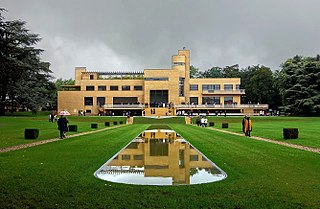
Robert Mallet-Stevens was an influential French architect and designer.
Charles Daniels, American swimmer (d. 1973) births

Charles Meldrum Daniels was an American competition swimmer, eight-time Olympic medalist, and world record-holder in two freestyle swimming events. Daniels was an innovator of the front crawl swimming style, inventing the "American crawl".
Dimitrie Cuclin, Romanian violinist and composer (d. 1978) births

Dimitrie Cuclin was a Romanian classical music composer, musicologist, philosopher, translator, and writer.
Peter Debye, Dutch-American physicist and chemist, Nobel Prize laureate (d. 1966) births

Peter Joseph William Debye was a Dutch-American physicist and physical chemist, and Nobel laureate in Chemistry.

The Nobel Prize in Chemistry is awarded annually by the Royal Swedish Academy of Sciences to scientists in the various fields of chemistry. It is one of the five Nobel Prizes established by the will of Alfred Nobel in 1895, awarded for outstanding contributions in chemistry, physics, literature, peace, and physiology or medicine. This award is administered by the Nobel Foundation, and awarded by the Royal Swedish Academy of Sciences on proposal of the Nobel Committee for Chemistry which consists of five members elected by the Academy. The award is presented in Stockholm at an annual ceremony on 10 December, the anniversary of Nobel's death.
Chika Kuroda, Japanese chemist (d. 1968) births

Chika Kuroda was a Japanese chemist whose research focused on natural pigments. She was the first woman in Japan to receive a Bachelor of Science.
Eugène Tisserant, French cardinal (d. 1972) births

Eugène-Gabriel-Gervais-Laurent Tisserant was a French prelate and cardinal of the Catholic Church. Elevated to the cardinalate in 1936, Tisserant was a prominent and long-time member of the Roman Curia.
Dorothy Campbell, Scottish-American golfer (d. 1945) births
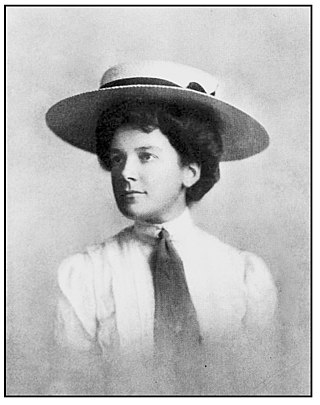
Dorothy Lee Campbell was a Scottish amateur golfer. Campbell was the first woman to win the American, British and Canadian Women's Amateurs.
Marcel Lalu, French gymnast (d. 1951) births
Marcel Lalu was a French gymnast who competed in the 1900 Summer Olympics, in the 1908 Summer Olympics, and in the 1912 Summer Olympics. In 1900 he finished eighth in the combined exercises competition which was the only Olympic gymnastic event. Eight years later he finished seventh in the 1908 all-around competition and at the 1912 Games he finished again seventh in the all-around contest.
George Monckton-Arundell, 8th Viscount Galway, English politician, 5th Governor-General of New Zealand (d. 1943) births

George Vere Arundel Monckton-Arundell, 8th Viscount Galway, was a British politician. He served as the fifth Governor-General of New Zealand from 1935 to 1941.

The governor-general of New Zealand is the viceregal representative of the monarch of New Zealand, currently King Charles III. As the King is concurrently the monarch of 14 other Commonwealth realms and lives in the United Kingdom, he, on the advice of his New Zealand prime minister, appoints a governor-general to carry out his constitutional and ceremonial duties within the Realm of New Zealand.
Henry Wadsworth Longfellow, American poet and educator (b. 1807) deaths

Henry Wadsworth Longfellow was an American poet and educator. His original works include "Paul Revere's Ride", The Song of Hiawatha, and Evangeline. He was the first American to completely translate Dante Alighieri's Divine Comedy and was one of the fireside poets from New England.
Achille Ernest Oscar Joseph Delesse, French geologist and mineralogist (b. 1817) deaths

Achille Ernest Oscar Joseph Delesse was a French geologist and mineralogist.
Neyzen Tevfik, Turkish philosopher, poet, and composer (d. 1953) births

Tevfik Kolaylı, better known by his pen name Neyzen Tevfik, was a Turkish poet, satirist, and neyzen. He was born in Bodrum and died in Istanbul. His name is occasionally misspelled as Neyzen Teyfik.
William Burns, Canadian lacrosse player (d. 1953) births
William Laurie Burns was a Canadian lacrosse player who competed in the 1904 Summer Olympics. In 1904 he was member of the Shamrock Lacrosse Team which won the gold medal in the lacrosse tournament.
Luigi Einaudi, Italian economist and politician, 2nd President of the Italian Republic (d. 1961) births

Luigi Numa Lorenzo Einaudi was an Italian politician and economist. He served as the president of Italy from 1948 to 1955.
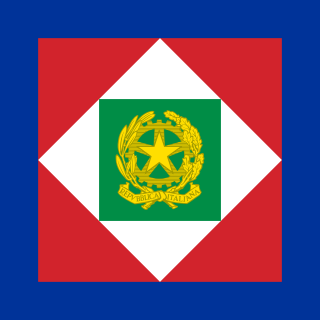
The president of Italy, officially denoted as president of the Italian Republic is the head of state of Italy. In that role, the president represents national unity, and guarantees that Italian politics comply with the Constitution. The president is the commander-in-chief of the Italian Armed Forces and chairs the High Council of the Judiciary. A president's term of office lasts for seven years. The incumbent president is former constitutional judge Sergio Mattarella, who was elected on 31 January 2015, and re-elected on 29 January 2022.
Harry Houdini, Hungarian-Jewish American magician and actor (d. 1926) births

Harry Houdini was a Hungarian-American escape artist, magic man, and stunt performer, noted for his escape acts. His pseudonym is a reference to his spiritual master, French magician Robert-Houdin (1805–1871).
Alec Hurley, English music hall singer (d. 1913) births

Alexander Hurley was an English music hall singer who was perhaps best known for being Marie Lloyd's second husband.
Émile Fabre, French author and playwright (d. 1955) births
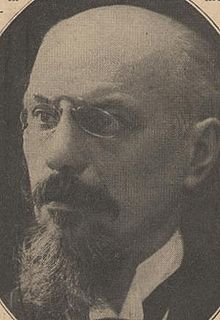
Émile Fabre was a French playwright and general administrator of the Comédie-Française from 1915 to
Antoine-Henri Jomini, French-Russian general (b. 1779) deaths

Antoine-Henri Jomini was a Swiss military officer who served as a general in French and later in Russian service, and one of the most celebrated writers on the Napoleonic art of war. Jomini's ideas are a staple at military academies, the United States Military Academy at West Point being a prominent example; his theories were thought to have affected many officers who later served in the American Civil War. He may have coined the term logistics in his Summary of the Art of War (1838).
Maria Amalia of Naples and Sicily, Queen of France (b. 1782) deaths

Maria Amalia Teresa of Naples and Sicily was Queen of the French by marriage to Louis Philippe I, King of the French. She was the last queen of France.
Frank Weston Benson, American painter and educator (d. 1951) births

Frank Weston Benson, frequently referred to as Frank W. Benson, was an American artist from Salem, Massachusetts known for his Realistic portraits, American Impressionist paintings, watercolors and etchings. He began his career painting portraits of distinguished families and murals for the Library of Congress. Some of his best known paintings depict his daughters outdoors at Benson's summer home, Wooster Farm, on the island of North Haven, Maine. He also produced numerous oil, wash and watercolor paintings and etchings of wildfowl and landscapes.
Andrew W. Mellon, American banker, financier, and diplomat, 49th United States Secretary of the Treasury (d. 1937) births

Andrew William Mellon, sometimes A. W. Mellon, was an American banker, businessman, industrialist, philanthropist, art collector, and politician. From the wealthy Mellon family of Pittsburgh, Pennsylvania, he established a vast business empire before moving into politics. He served as United States Secretary of the Treasury from March 9, 1921 to February 12, 1932, presiding over the boom years of the 1920s and the Wall Street crash of 1929. A conservative Republican, Mellon favored policies that reduced taxation and the national debt in the aftermath of World War I.

The United States secretary of the treasury is the head of the United States Department of the Treasury, and is the chief financial officer of the federal government of the United States. The secretary of the treasury serves as the principal advisor to the president of the United States on all matters pertaining to economic and fiscal policy. The secretary is a statutory member of the Cabinet of the United States, and is fifth in the presidential line of succession.
Olive Schreiner, South African author and activist (d. 1920) births

Olive Schreiner was a South African author, anti-war campaigner and intellectual. She is best remembered today for her novel The Story of an African Farm (1883), which has been highly acclaimed. It deals boldly with such contemporary issues as agnosticism, existential independence, individualism, the professional aspirations of women, and the elemental nature of life on the colonial frontier.
Henry Lefroy, Australian politician, 11th Premier of Western Australia (d. 1930) births

Sir Henry Bruce Lefroy was the eleventh Premier of Western Australia.
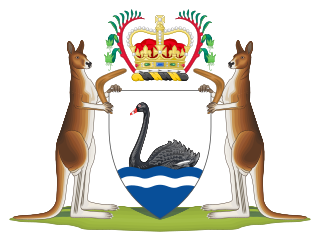
The premier of Western Australia is the head of government of the state of Western Australia. The role of premier at a state level is similar to the role of the prime minister of Australia at a federal level. The premier leads the executive branch of the Government of Western Australia and is accountable to the Parliament of Western Australia. The premier is appointed by the governor of Western Australia. By convention, the governor appoints as premier whoever has the support of the majority of the Western Australian Legislative Assembly. In practice, this means that the premier is the leader of the political party or group of parties with a majority of seats in the Legislative Assembly. Since Western Australia achieved self-governance in 1890, there have been 31 premiers. Mark McGowan is the current premier, having been appointed to the position on 17 March 2017.
Silas Hocking, English minister and author (d. 1935) births
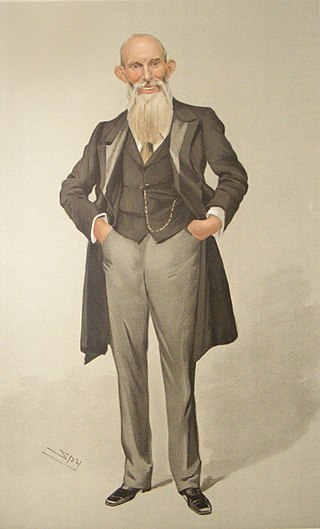
Silas Kitto Hocking was a British novelist and Methodist preacher. He is known for his novel for youth called Her Benny (1879), which was a best-seller.
Honoré Beaugrand, Canadian journalist and politician, 18th Mayor of Montreal (d. 1906) births

Honoré Beaugrand was a French Canadian journalist, politician, author and folklorist, born in Berthier County, Quebec.

The mayor of Montreal is head of the executive branch of the Montreal City Council. The current mayor is Valérie Plante, who was elected into office on November 5, 2017, and sworn in on November 16. The office of the mayor administers all city services, public property, police and fire protection, most public agencies, and enforces all city and provincial laws within Montreal, Quebec. The mayor is directly elected by citizens, by a plurality of votes, for a four-year term. The mayor's office is located in Montreal City Hall.
Abraham Hume, English floriculturist and Tory politician (b. 1748/49) deaths
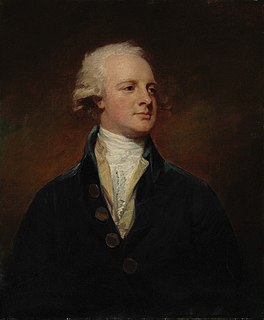
Sir Abraham Hume, 2nd Baronet was a British floriculturist and Tory politician who sat in the House of Commons between 1774 and 1818.

Floriculture, or flower farming, is a branch of horticulture concerned with the cultivation of flowering and ornamental plants for gardens and for floristry, comprising the floral industry. The development of new varieties by plant breeding is a major occupation of floriculturists.
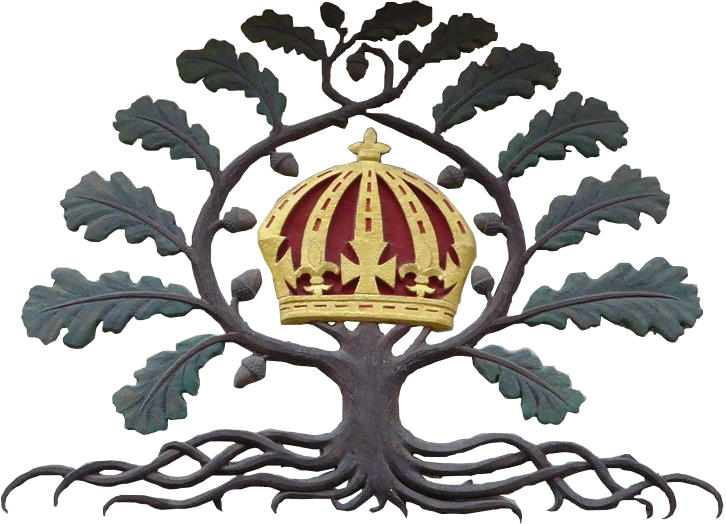
The Tories were a loosely organised political faction and later a political party, in the Parliaments of England, Scotland, Ireland, Great Britain and the United Kingdom. They first emerged during the 1679 Exclusion Crisis, when they opposed Whig efforts to exclude James, Duke of York from the succession on the grounds of his Catholicism. Despite their fervent opposition to state-sponsored Catholicism, Tories opposed exclusion in the belief inheritance based on birth was the foundation of a stable society.
Joseph Stefan, Austrian physicist, mathematician, and poet (d. 1893) births
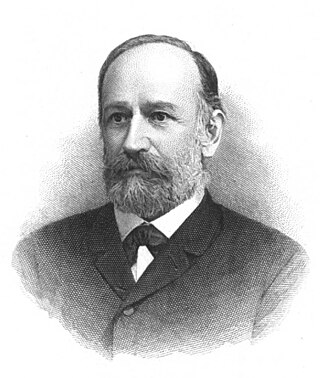
Josef Stefan was an ethnic Carinthian Slovene physicist, mathematician, and poet of the Austrian Empire.
William Morris, English textile designer, poet, and author (d. 1896) births

William Morris was a British textile designer, poet, artist, novelist, architectural conservationist, printer, translator and socialist activist associated with the British Arts and Crafts Movement. He was a major contributor to the revival of traditional British textile arts and methods of production. His literary contributions helped to establish the modern fantasy genre, while he helped win acceptance of socialism in fin de siècle Great Britain.
John Wesley Powell, American soldier, geologist, and explorer (d. 1902) births

John Wesley Powell was an American geologist, U.S. Army soldier, explorer of the American West, professor at Illinois Wesleyan University, and director of major scientific and cultural institutions. He is famous for his 1869 geographic expedition, a three-month river trip down the Green and Colorado rivers, including the first official U.S. government-sponsored passage through the Grand Canyon.
Robert Hamerling, Austrian poet and playwright (d. 1889) births
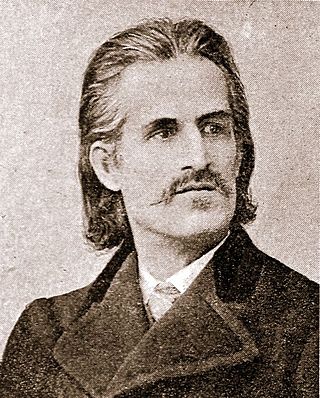
Robert Hamerling was an Austrian poet.
George Francis Train, American businessman (d. 1904) births

George Francis Train was an American entrepreneur who organized the clipper ship line that sailed around Cape Horn to San Francisco; he also organized the Union Pacific Railroad and the Credit Mobilier in the United States in 1864 to construct the eastern portion of the Transcontinental Railroad, and a horse tramway company in England while there during the American Civil War.
Ignacio Zaragoza, Mexican general (d. 1862) births

Ignacio Zaragoza Seguín was a Mexican general and politician. He led the Mexican army of 600 men that defeated 6,500 invading French forces, including the elite French legionnaires at the Battle of Puebla on May 5, 1862.
Horace Gray, American lawyer and jurist (d. 1902) births

Horace Gray was an American jurist who served on the Massachusetts Supreme Judicial Court, and then on the United States Supreme Court, where he frequently interpreted the Constitution in ways that increased the powers of Congress. Noted for possessing a sharp mind and an enthusiasm for legal research, he was also a staunch supporter of the authority of precedent throughout his career.
Matilda Joslyn Gage, American activist and author (d. 1898) births

Matilda Joslyn Gage was an American writer and activist. She is mainly known for her contributions to women's suffrage in the United States but she also campaigned for Native American rights, abolitionism, and freethought. She is the eponym for the Matilda effect, which describes the tendency to deny women credit for scientific invention. She influenced her son-in-law L. Frank Baum, the author of The Wizard of Oz.
Louis Marie de La Révellière-Lépeaux, French lawyer (b. 1753) deaths

Louis Marie de La Révellière-Lépeaux was a deputy to the National Convention during the French Revolution. He later served as a prominent leader of the French Directory.
Thomas Spencer Baynes, English philosopher and critic (d. 1887) births
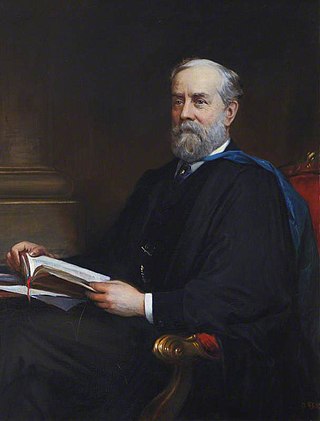
Thomas Spencer Baynes was an English philosopher.
Edmond Becquerel, French physicist and academic (d. 1891) births

Alexandre-Edmond Becquerel, known as Edmond Becquerel, was a French physicist who studied the solar spectrum, magnetism, electricity and optics. He is credited with the discovery of the photovoltaic effect, the operating principle of the solar cell, in 1839. He is also known for his work in luminescence and phosphorescence. He was the son of Antoine César Becquerel and the father of Henri Becquerel, one of the discoverers of radioactivity.
Fanny Crosby, American poet and composer (d. 1915) births

Frances Jane van Alstyne, more commonly known as Fanny J. Crosby, was an American mission worker, poet, lyricist, and composer. She was a prolific hymnist, writing more than 8,000 hymns and gospel songs, with more than 100 million copies printed. She is also known for her teaching and her rescue mission work. By the end of the 19th century, she was a household name.
Pelagio Antonio de Labastida y Dávalos, Mexican politician and Roman Catholic archbishop, regent during the Second Mexican Empire (d. 1891) births

Pelagio Antonio de Labastida y Dávalos was a Mexican Roman Catholic prelate, lawyer and doctor of canon law, and politician. He was a member of the imperial regency that invited Maximilian of Austria to accept the throne of Mexico.

In Christian denominations, an archbishop is a bishop of higher rank or office. In most cases, such as the Catholic Church, there are many archbishops who either have jurisdiction over an ecclesiastical province in addition to their own archdiocese, or are otherwise granted a titular archbishopric. In others, such as the Lutheran Church of Sweden and the Church of England, the title is borne by the leader of the denomination.
A regent is a person appointed to govern a state pro tempore because the monarch is a minor, absent, incapacitated or unable to discharge the powers and duties of the monarchy, or the throne is vacant and the new monarch has not yet been determined. One variation is in the Monarchy of Liechtenstein, where a competent monarch may chose to assign regency to their of-age heir, handing over the majority of their responsibilities to prepare the heir for future succession. The rule of a regent or regents is called a regency. A regent or regency council may be formed ad hoc or in accordance with a constitutional rule. Regent is sometimes a formal title granted to a monarch's most trusted advisor or personal assistant. If the regent is holding their position due to their position in the line of succession, the compound term prince regent is often used; if the regent of a minor is their mother, she would be referred to as queen regent.

The Second Mexican Empire, officially the Mexican Empire, was a constitutional monarchy established in Mexico by Mexican monarchists with support mainly from the Second French Empire referred to as the Second French intervention in Mexico. Emperor Napoleon III of France, with the support of the Mexican conservatives, clergy, and nobility, established a monarchist ally in the Americas intended as a restraint upon the growing power of the United States. It has been viewed as both an independent monarchy and as a client state of France. Elected as the emperor of Mexico was Austrian Archduke Ferdinand Maximilian, of the House of Habsburg-Lorraine, whose ancestors had previously ruled Mexico. His wife and empress consort of Mexico was the Belgian princess Charlotte of the House of Saxe-Coburg and Gotha, known as ‘Carlota’.
Mariano José de Larra, Spanish journalist and author (d. 1837) births

Mariano José de Larra y Sánchez de Castro was a Spanish romantic writer and journalist best known for his numerous essays and his infamous suicide. His works were often satirical and critical of the 19th-century Spanish society, and focused on both the politics and customs of his time.
Joseph Liouville, French mathematician and academic (d. 1882) births
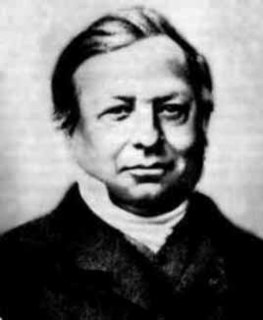
Joseph Liouville was a French mathematician and engineer.
Maria Malibran, Spanish-French soprano (d. 1836) births

Maria Felicia Malibran was a Spanish singer who commonly sang both contralto and soprano parts, and was one of the best-known opera singers of the 19th century. Malibran was known for her stormy personality and dramatic intensity, becoming a legendary figure after her death in Manchester, England, at age 28. Contemporary accounts of her voice describe its range, power and flexibility as extraordinary.
Egerton Ryerson, Canadian minister, educator, and politician (d. 1882) births

Adolphus Egerton Ryerson was a Canadian educator and Methodist minister who was a prominent contributor to the design of the Canadian public school system. Some of his writings influenced the Canadian Indian residential school system, which was established after his death. After a stint editing the Methodist denominational newspaper The Christian Guardian, Ryerson was appointed Chief Superintendent of Education for Upper Canada by Governor General Sir Charles Metcalfe in 1844. In that role, he supported reforms such as creating school boards, making textbooks more uniform, and making education free. Because of his contributions to education in Ontario, he was the namesake of the former Ryerson University and is the namesake of Ryerson Press as well as Ryerson, Ontario. In April 2022, the university was renamed to Toronto Metropolitan University.
Zulma Carraud, French author (d. 1889) births

Zulma Carraud was a French author. She is best known for her children's books and textbooks particularly La Petite Jeanne ou le devoir and Maurice ou le travail.
John Corry Wilson Daly, Canadian businessman and politician (d. 1878) births
Lieutenant-Colonel John Corry Wilson Daly was a Canadian politician, businessperson, militia officer, and the first Mayor of Stratford, Ontario.
Orest Kiprensky, Russian-Italian painter (d. 1836) births

Orest Adamovich Kiprensky was a leading Russian portraitist in the Age of Romanticism. His most familiar work is probably his portrait of Alexander Pushkin (1827), which prompted the poet to remark that "the mirror flatters me".
John Harrison, English carpenter and clockmaker, invented the Marine chronometer (b. 1693) deaths

John Harrison was a self-educated English carpenter and clockmaker who invented the marine chronometer, a long-sought-after device for solving the problem of calculating longitude while at sea.

A marine chronometer is a precision timepiece that is carried on a ship and employed in the determination of the ship's position by celestial navigation. It is used to determine longitude by comparing Greenwich Mean Time (GMT), or in the modern world its successor Coordinated Universal Time (UTC), and the time at the current location found from observations of celestial bodies. When first developed in the 18th century, it was a major technical achievement, as accurate knowledge of the time over a long sea voyage was vital for effective navigation, lacking electronic or communications aids. The first true chronometer was the life work of one man, John Harrison, spanning 31 years of persistent experimentation and testing that revolutionized naval navigation and enabling the Age of Discovery and Colonialism to accelerate.
Muthuswami Dikshitar, Indian poet and composer (d. 1835) births

Muthuswami Dikshitar (IAST: muttusvāmi dīkṣitar, 24 March 1776 – 21 October 1835), mononymously Dikshitar, was a South Indian poet, singer and veena player, and a legendary composer of Indian classical music, who is considered one of the musical trinity of Carnatic music. Muthuswami Dikshitar was born on 24 March 1775 in Tiruvarur near Thanjavur, in what is now the state of Tamil Nadu in India, to a family that is traditionally traced back to Virinichipuram in the northern boundaries of the state. His compositions, of which around 500 are commonly known, are noted for their elaborate and poetic descriptions of Hindu gods and temples and for capturing the essence of the raga forms through the vainika (veena) style that emphasises gamakas. They are typically in a slower speed. He is also known by his signature name of Guruguha which is also his mudra. His compositions are widely sung and played in classical concerts of Carnatic music.
Philip Stanhope, 4th Earl of Chesterfield, English politician, Captain of the Yeomen of the Guard (b. 1694) deaths

Philip Dormer Stanhope, 4th Earl of Chesterfield, was a British statesman, diplomat, and man of letters, and an acclaimed wit of his time.

The Captain of the King's Bodyguard of the Yeomen of the Guard is a UK Government post usually held by the Government Deputy Chief Whip in the House of Lords. The present Captain is The 9th Earl of Courtown, who was appointed to the position in the May ministry in July 2016.
Marcos Portugal, Portuguese organist and composer (d. 1830) births

Marcos António da Fonseca Portugal, known as Marcos Portugal, or Marco Portogallo, was a Portuguese classical composer, who achieved great international fame for his operas.
Rufus King, American lawyer and politician, United States Ambassador to the United Kingdom (d. 1827) births
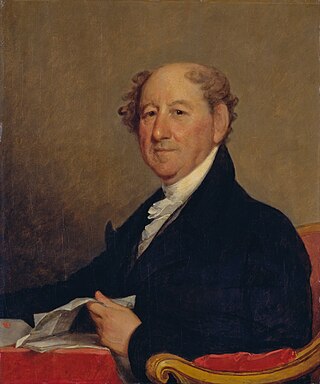
Rufus King was an American Founding Father, lawyer, politician, and diplomat. He was a delegate for Massachusetts to the Continental Congress and the Philadelphia Convention and was one of the signers of the United States Constitution in 1787. After formation of the new Congress, he represented New York in the United States Senate. He emerged as a leading member of the Federalist Party and served as the party's last presidential nominee during the 1816 presidential election.

The United States ambassador to the United Kingdom is the official representative of the president of the United States and the American government to the monarch and government of the United Kingdom. The position is held by Jane D. Hartley, who presented her credentials to Queen Elizabeth II on July 19, 2022.
Samuel Ashe, American lawyer and politician, 9th Governor of North Carolina (d. 1813) births
Samuel Ashe was the ninth governor of the U.S. state of North Carolina from 1795 to 1798. He was also one of the first three judges of the North Carolina Superior Court in 1787.

The Governor of North Carolina is the head of government of the U.S. state of North Carolina. The governor directs the executive branch of the government and is the commander in chief of the military forces of the state. The current governor, Democrat Roy Cooper took office on January 1, 2017, and had a public swearing-in ceremony on January 7, 2017.
Thomas Cushing, American lawyer and politician, 1st Lieutenant Governor of Massachusetts (d. 1788) births
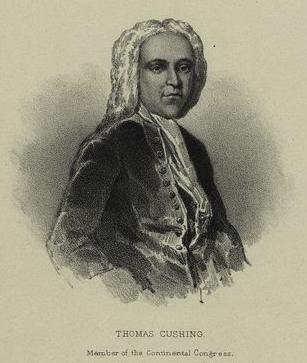
Thomas Cushing III was an American lawyer, merchant, and statesman from Boston, Massachusetts. Active in Boston politics, he represented the city in the provincial assembly from 1761 to its dissolution in 1774, serving as the lower house's speaker for most of those years. Because of his role as speaker, his signature was affixed to many documents protesting British policies, leading officials in London to consider him a dangerous radical. He engaged in extended communications with Benjamin Franklin who at times lobbied on behalf of the legislature's interests in London, seeking ways to reduce the rising tensions of the American Revolution.

The lieutenant governor of Massachusetts is the first in the line to discharge the powers and duties of the office of governor following the incapacitation of the Governor of Massachusetts. The constitutional honorific title for the office is His, or Her, Honor.
John Harrison, English carpenter and clock-maker, invented the Marine chronometer (d. 1776) births

John Harrison was a self-educated English carpenter and clockmaker who invented the marine chronometer, a long-sought-after device for solving the problem of calculating longitude while at sea.

A marine chronometer is a precision timepiece that is carried on a ship and employed in the determination of the ship's position by celestial navigation. It is used to determine longitude by comparing Greenwich Mean Time (GMT), or in the modern world its successor Coordinated Universal Time (UTC), and the time at the current location found from observations of celestial bodies. When first developed in the 18th century, it was a major technical achievement, as accurate knowledge of the time over a long sea voyage was vital for effective navigation, lacking electronic or communications aids. The first true chronometer was the life work of one man, John Harrison, spanning 31 years of persistent experimentation and testing that revolutionized naval navigation and enabling the Age of Discovery and Colonialism to accelerate.
Pieter de Hooch, Dutch painter (b. 1629) deaths
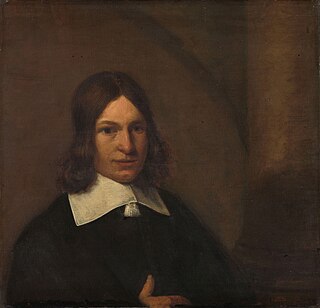
Pieter de Hooch was a Dutch Golden Age painter famous for his genre works of quiet domestic scenes with an open doorway. He was a contemporary of Jan Vermeer in the Delft Guild of St. Luke, with whom his work shares themes and style.
Elizabeth Ridgeway, English woman convicted of poisoning her husband deaths
Elizabeth Ridgeway was an English woman convicted of poisoning her husband. While awaiting execution by burning at the stake, she confessed to previously poisoning her mother, a fellow servant, and a lover.
Arai Hakuseki, Japanese academic and politician (d. 1725) births

Arai Hakuseki was a Confucianist, scholar-bureaucrat, academic, administrator, writer and politician in Japan during the middle of the Edo period, who advised the shōgun Tokugawa Ienobu. His personal name was Kinmi or Kimiyoshi (君美). Hakuseki (白石) was his pen name. His father was a Kururi han samurai Arai Masazumi.
Samuel Scheidt, German organist and composer (b. 1587) deaths
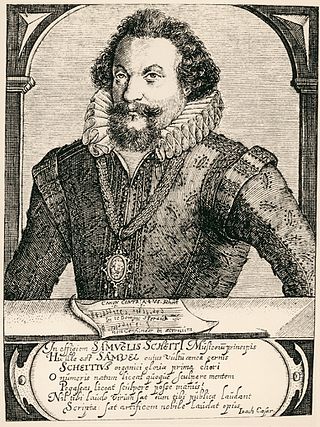
Samuel Scheidt was a German composer, organist and teacher of the early Baroque era.
Sophie Amalie of Brunswick-Lüneburg (d. 1685) births

Sophie Amalie of Brunswick-Calenberg was Queen of Denmark and Norway as the consort of the King Frederick III of Denmark. She is known for her political influence, as well as for her cultural impact: she acted as the adviser of her husband, and introduced ballet and opera to Denmark.
Michiel de Ruyter, Dutch admiral (d. 1667) births

Michiel Adriaenszoon de Ruyter was a Dutch admiral. Widely celebrated and regarded as one of the most skilled admirals in history, De Ruyter is arguably most famous for his achievements with the Dutch Navy during the Anglo-Dutch Wars. He fought the English and French forces and scored several critical victories, with the Raid on the Medway being the most famous among them.
Elizabeth I of England (b. 1533) deaths

Elizabeth I was Queen of England and Ireland from 17 November 1558 until her death in 1603. Elizabeth was the last of the five House of Tudor monarchs and is sometimes referred to as the "Virgin Queen".
Francis, Duke of Pomerania-Stettin, Bishop of Cammin (d. 1620)[citation needed] births

Francis of Pomerania was Duke of Pomerania-Stettin and Bishop of Cammin.
Joseph ben Ephraim Karo, Spanish-Portuguese rabbi and author (b. 1488) deaths

Joseph ben Ephraim Karo, also spelled Yosef Caro, or Qaro, was the author of the last great codification of Jewish law, the Beit Yosef, and its popular analogue, the Shulchan Arukh. To this end he is often referred to as HaMechaber and as Maran.
Hosokawa Harumoto, Japanese daimyō (b. 1514)[citation needed] deaths
Hosokawa Harumoto was a Japanese daimyō of the Muromachi and Sengoku periods, and the head of the Hosokawa clan. Harumoto's childhood name was Sōmei-maru (聡明丸). He was born to Hosokawa Sumimoto, another renowned samurai of the Muromachi era.
Edward Stafford, 2nd Earl of Wiltshire, English nobleman (b. 1470) deaths

Edward Stafford, 2nd Earl of Wiltshire was an English nobleman.
Georgius Agricola, German mineralogist and scholar (d. 1555) births

Georgius Agricola was a German Humanist scholar, mineralogist and metallurgist. Born in the small town of Glauchau, in the Electorate of Saxony of the Holy Roman Empire, he was broadly educated, but took a particular interest in the mining and refining of metals. For his groundbreaking work De Natura Fossilium published in 1546, he is generally referred to as the Father of Mineralogy.
Pope Nicholas V (b. 1397) deaths

Pope Nicholas V, born Tommaso Parentucelli, was head of the Catholic Church and ruler of the Papal States from 6 March 1447 until his death in March 1455. Pope Eugene made him a cardinal in 1446 after successful trips to Italy and Germany, and when Eugene died the next year Parentucelli was elected in his place. He took his name Nicholas in memory of his obligations to Niccolò Albergati.
James Douglas, 7th Earl of Douglas (b. 1371)[citation needed] deaths

James Douglas, 7th Earl of Douglas, 1st Earl of Avondale, latterly known as James the Gross, and prior to his ennoblement as James of Balvenie, was a late mediaeval Scottish magnate. He was the second son of Archibald Douglas, 3rd Earl of Douglas, and Joan Moray of Bothwell and Drumsargard, d. after 1408.
Ernest, Elector of Saxony, German ruler of Saxony (d. 1486) births

Ernest was Elector of Saxony from 1464 to 1486.
Margaret, Duchess of Norfolk (b.c. 1320) deaths
Margaret of Norfolk or Margaret of Brotherton, in her own right Countess of Norfolk, was the daughter and eventual sole heir of Thomas of Brotherton, eldest son of King Edward I of England by his second marriage. In 1338, she succeeded to the earldom of Norfolk and the office of Earl Marshal.
Walter Hilton, English mystic and saint (b. 1340) deaths

Walter Hilton Can.Reg. was an English Augustinian mystic, whose works gained influence in 15th-century England and Wales. He has been canonized by the Church of England and by the Episcopal Church in the United States.
Constance of Castile, claimant to the throne of Castile[citation needed] deaths

Constance of Castile was a claimant to the Crown of Castile. She was the daughter of King Peter, who was deposed and killed by his half-brother, King Henry II. She married the English prince John of Gaunt, who fought to obtain the throne of Castile in her name, but ultimately failed.

The Crown of Castile was a medieval polity in the Iberian Peninsula that formed in 1230 as a result of the third and definitive union of the crowns and, some decades later, the parliaments of the kingdoms of Castile and León upon the accession of the then Castilian king, Ferdinand III, to the vacant Leonese throne. It continued to exist as a separate entity after the personal union in 1469 of the crowns of Castile and Aragon with the marriage of the Catholic Monarchs up to the promulgation of the Nueva Planta decrees by Philip V in 1715.
Catherine of Vadstena, Swedish saint (b. 1332) deaths

Catherine of Sweden, Katarina av Vadstena, Catherine of Vadstena or Katarina Ulfsdotter was a Swedish noblewoman. She is venerated as a saint in the Roman Catholic Church. Her father was Ulf Gudmarsson, Lord of Ulvåsa, and her mother was Saint Bridget of Sweden.
Odon de Pins, Grand Master of the Knights Hospitaller deaths

Odo de Pins, also known as Eudes de Pin or Odon de Pins, was the twenty-third Grand Master of the Knights Hospitaller, serving from 1294 until his death in 1296, succeeding Jean de Villiers. He moved the headquarters of the Order to Limasso in modern-day Cyprus. Upon his death, he was succeeded by Guillaume de Villaret.
Hugh III of Cyprus (b. 1235) deaths
Hugh III, also called Hugh of Antioch-Lusignan and the Great, was the king of Cyprus from 1267 and king of Jerusalem from 1268. Born into the family of the princes of Antioch, he effectively ruled as regent for underage kings Hugh II of Cyprus and Conrad III of Jerusalem for several years. Prevailing over the claims of his cousin Hugh of Brienne, he succeeded both young monarchs upon their deaths and appeared poised to be an effective political and military leader.
Yue Fei, Chinese military general (d. 1142) births

Yue Fei, courtesy name Pengju (鵬舉), was a Chinese military general who lived during the Southern Song dynasty and a national hero of China, known for leading Southern Song forces in the wars in the 12th century between Southern Song and the Jurchen-ruled Jin dynasty in northern China. Because of his warlike-stance, he was put to death by the Southern Song government in 1142 under a concocted charge, after a negotiated peace was achieved with the Jurchens. Yue Fei is depicted in the Wu Shuang Pu by Jin Guliang.
Wulfred, archbishop of Canterbury deaths

Wulfred was an Anglo-Saxon Archbishop of Canterbury in medieval England. Nothing is known of his life prior to 803, when he attended a church council, but he was probably a nobleman from Middlesex. He was elected archbishop in 805 and spent his time in office reforming the clergy of his cathedral. He also quarrelled with two consecutive Mercian kings – Coenwulf and Ceolwulf – over whether laymen or clergy should control monasteries. At one point, Wulfred travelled to Rome to consult with the papacy and was deposed from office for a number of years over the issue. After Coenwulf's death, relations were somewhat better with the new king Ceolwulf, but improved much more after Ceolwulf's subsequent deposition. The dispute about control of the monasteries was not fully settled until 838, after Wulfred's death. Wulfred was the first archbishop to place his portrait on the coinage he struck.

The Diocese of Canterbury is a Church of England diocese covering eastern Kent which was founded by St. Augustine of Canterbury in 597. The diocese is centred on Canterbury Cathedral and is the oldest see of the Church of England.
Harun al-Rashid, Arab caliph (b. 763) deaths

Abu Ja'far Harun ibn Muhammad al-Mahdi or Harun ibn al-Mahdi, famously known as Harun al-Rashid was the fifth Abbasid caliph of the Abbasid Caliphate, reigning from September 786 until his death. His reign is traditionally regarded to be the beginning of the Islamic Golden Age. His epithet "al-Rashid" translates to "the Orthodox", "the Just", "the Upright", or "the Rightly-Guided".
Christian feast day: Catherine of Vadstena

Catherine of Sweden, Katarina av Vadstena, Catherine of Vadstena or Katarina Ulfsdotter was a Swedish noblewoman. She is venerated as a saint in the Roman Catholic Church. Her father was Ulf Gudmarsson, Lord of Ulvåsa, and her mother was Saint Bridget of Sweden.
Christian feast day: Hildelith of Barking

Hildelith of Barking, also known as Hildilid or Hildelitha, was an 8th-century Christian saint, from Anglo-Saxon England but of foreign origin.
Christian feast day: Mac Cairthinn of Clogher

Saint Mac Cairthinn, also Macartan, McCartan, is recognized as the first presiding Bishop of Clogher from 454 to his death. One of the earliest Christian saints in Ireland, he is known as Saint Patrick's "Threin Fhir", or "Strong Man" for his dedication and faithfulness to the fledgling Church. His feast day is 24 March.
Christian feast day: Óscar Romero (Catholic Church, Anglican Communion, Lutheranism)

Óscar Arnulfo Romero y Galdámez was a prelate of the Catholic Church in El Salvador. He served as Auxiliary Bishop of the Archdiocese of San Salvador, the Titular Bishop of Tambeae, as Bishop of Santiago de María, and finally as the fourth Archbishop of San Salvador. As archbishop, Romero spoke out against social injustice and violence amid the escalating conflict between the military government and left-wing insurgents that led to the Salvadoran Civil War. In 1980, Romero was shot by an assassin while celebrating Mass. Though no one was ever convicted for the crime, investigations by the UN-created Truth Commission for El Salvador concluded that Major Roberto D'Aubuisson, a death squad leader and later founder of the right-wing Nationalist Republican Alliance (ARENA) political party, had ordered the killing.

The Catholic Church, also known as the Roman Catholic Church, is the largest Christian church, with 1.3 billion baptized Catholics worldwide as of 2019. As the world's oldest and largest continuously functioning international institution, it has played a prominent role in the history and development of Western civilization. The church consists of 24 sui iuris churches, including the Latin Church and 23 Eastern Catholic Churches, which comprise almost 3,500 dioceses and eparchies located around the world. The pope, who is the bishop of Rome, is the chief pastor of the church. The bishopric of Rome, known as the Holy See, is the central governing authority of the church. The administrative body of the Holy See, the Roman Curia, has its principal offices in Vatican City, a small enclave of the Italian city of Rome, of which the pope is head of state.

The Anglican Communion is the third largest Christian communion after the Roman Catholic and Eastern Orthodox churches. Founded in 1867 in London, the communion has more than 85 million members within the Church of England and other autocephalous national and regional churches in full communion. The traditional origins of Anglican doctrine are summarised in the Thirty-nine Articles (1571). The Archbishop of Canterbury in England acts as a focus of unity, recognised as primus inter parescode: lat promoted to code: la , but does not exercise authority in Anglican provinces outside of the Church of England. Most, but not all, member churches of the communion are the historic national or regional Anglican churches.

Lutheranism is one of the largest branches of Protestantism, identifying primarily with the theology of Martin Luther, the 16th-century German monk and reformer whose efforts to reform the theology and practice of the Catholic Church launched the Protestant Reformation. The reaction of the government and church authorities to the international spread of his writings, beginning with the Ninety-five Theses, divided Western Christianity. During the Reformation, Lutheranism became the state religion of numerous states of northern Europe, especially in northern Germany, Scandinavia and the then Livonian Order. Lutheran clergy became civil servants and the Lutheran churches became part of the state.
Christian feast day: Paul Couturier (Church of England)
Paul Irénée Couturier was a French priest and a promoter of the concept of Christian unity. He was instrumental in the establishment of the Week of Prayer for Christian Unity.
The Church of England commemorates many of the same saints as those in the General Roman Calendar, mostly on the same days, but also commemorates various notable Christians who have not been canonised by Rome, with a particular though not exclusive emphasis on those of English origin. There are differences in the calendars of other churches of the Anglican Communion.
Christian feast day: Walter Hilton (Church of England)

Walter Hilton Can.Reg. was an English Augustinian mystic, whose works gained influence in 15th-century England and Wales. He has been canonized by the Church of England and by the Episcopal Church in the United States.

The Church of England is the established Christian church in England and the mother church of the international Anglican Communion. It traces its history to the Christian church recorded as existing in the Roman province of Britain by the 3rd century and to the 6th-century Gregorian mission to Kent led by Augustine of Canterbury.
Christian feast day: March 24 (Eastern Orthodox liturgics)

March 23 - Eastern Orthodox liturgical calendar - March 25
Day of Remembrance for Truth and Justice (Argentina)

The Day of Remembrance for Truth and Justice is a public holiday in Argentina, commemorating the victims of the Dirty War. It is held on 24 March, the anniversary of the coup d'état of 1976 that brought the National Reorganization Process to power.

Argentina, officially the Argentine Republic, is a country in the southern half of South America. Argentina covers an area of 2,780,400 km2 (1,073,500 sq mi), making it the second-largest country in South America after Brazil, the fourth-largest country in the Americas, and the eighth-largest country in the world. It shares the bulk of the Southern Cone with Chile to the west, and is also bordered by Bolivia and Paraguay to the north, Brazil to the northeast, Uruguay and the South Atlantic Ocean to the east, and the Drake Passage to the south. Argentina is a federal state subdivided into twenty-three provinces, and one autonomous city, which is the federal capital and largest city of the nation, Buenos Aires. The provinces and the capital have their own constitutions, but exist under a federal system. Argentina claims sovereignty over the Falkland Islands, South Georgia and the South Sandwich Islands, and a part of Antarctica.
International Day for the Right to the Truth Concerning Gross Human Rights Violations and for the Dignity of Victims

Right to truth is the right, in the case of grave violations of human rights, for the victims and their families or societies to have access to the truth of what happened. The right to truth is closely related to, but distinct from, the state obligation to investigate and prosecute serious state violations of human rights. Right to truth is a form of victims' rights; it is especially relevant to transitional justice in dealing with past abuses of human rights. In 2006, Yasmin Naqvi concluded that the right to truth "stands somewhere on the threshold of a legal norm and a narrative device ... somewhere above a good argument and somewhere below a clear legal rule".
National Tree Planting Day (Uganda)

Arbor Day is a secular day of observance in which individuals and groups are encouraged to plant trees. Today, many countries observe such a holiday. Though usually observed in the spring, the date varies, depending on climate and suitable planting season.
Student Day (Scientology)
The Church of Scientology maintains a wide variety of beliefs and practices. The core belief holds that a human is an immortal, spiritual being (thetan) that is resident in a physical body. The thetan has had innumerable past lives, some of which, preceding the thetan's arrival on Earth, were lived in extraterrestrial cultures. Based on case studies at advanced levels, it is predicted that any Scientologist undergoing auditing will eventually come across and recount a common series of events.
Scientology is a set of beliefs and practices invented by American author L. Ron Hubbard, and an associated movement. It has been variously defined as a cult, a business, or a new religious movement. The most recent published census data indicate that there were about 25,000 followers in the United States ; around 1,800 followers in England (2021); 1,400 in Canada (2021); and about 1,600 in Australia (2016). Hubbard initially developed a set of ideas that he called Dianetics, which he represented as a form of therapy. This he promoted through various publications, as well as through the Hubbard Dianetic Research Foundation that he established in 1950. The foundation went bankrupt, and Hubbard lost the rights to his book Dianetics in 1952. He then recharacterized the subject as a religion and renamed it Scientology, retaining the terminology, doctrines, and the practice of "auditing". By 1954 he had regained the rights to Dianetics and retained both subjects under the umbrella of the Church of Scientology.
World Tuberculosis Day (International)

World Tuberculosis Day, observed on 24 March each year, is designed to build public awareness about the global epidemic of tuberculosis (TB) and efforts to eliminate the disease. In 2018, 10 million people fell ill with TB, and 1.5 million died from the disease, mostly in low and middle-income countries. This also makes it the leading cause of death from an infectious disease.
Lists of holidays by various categorizations.